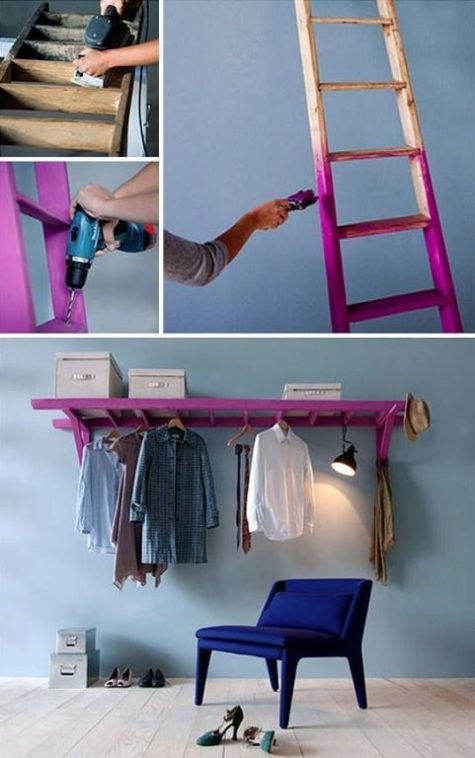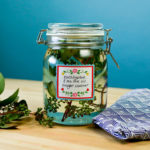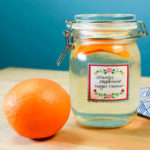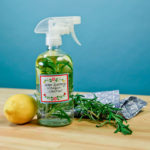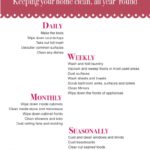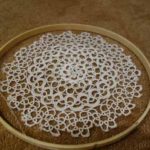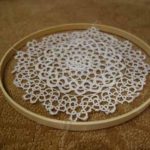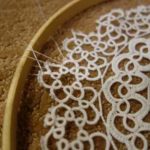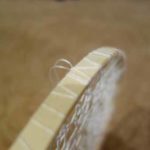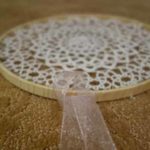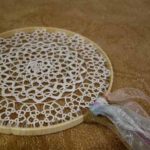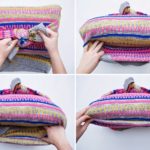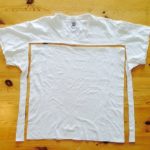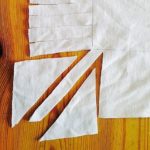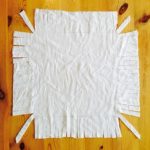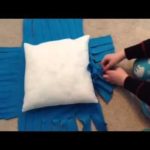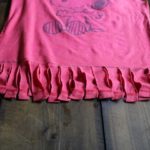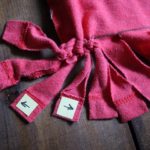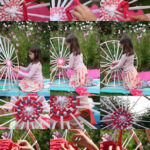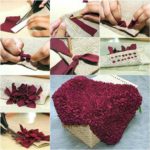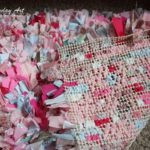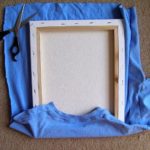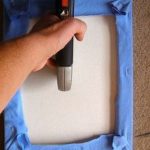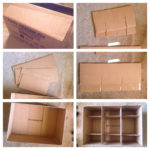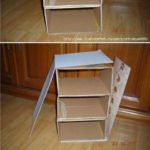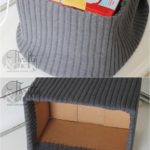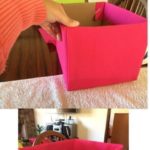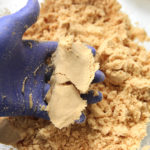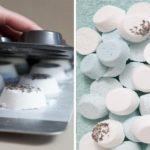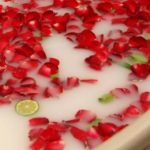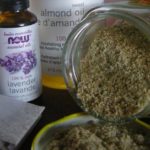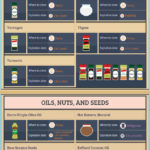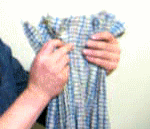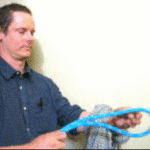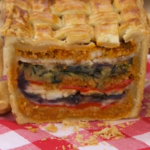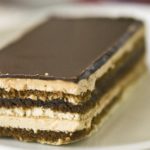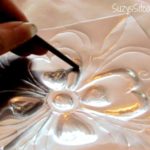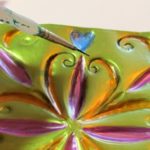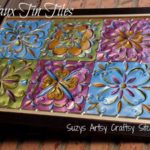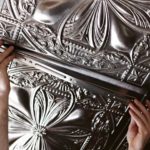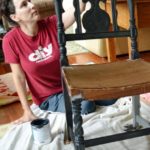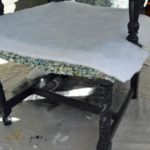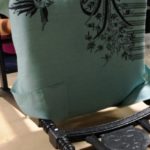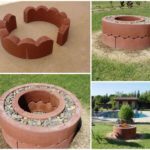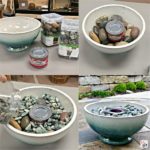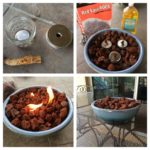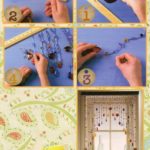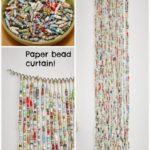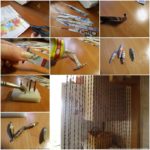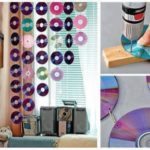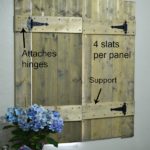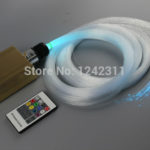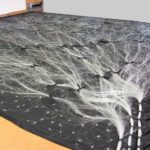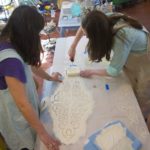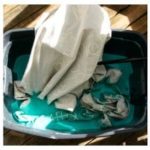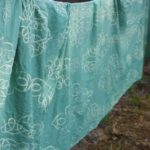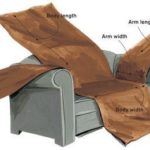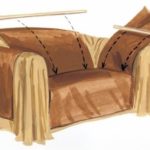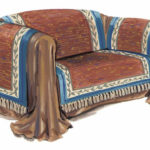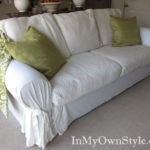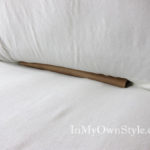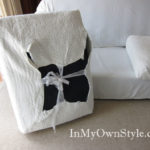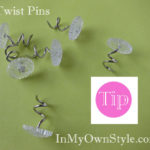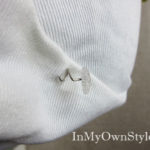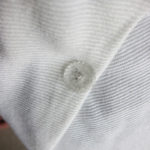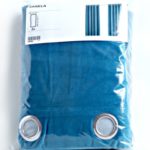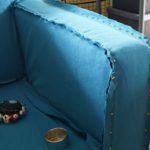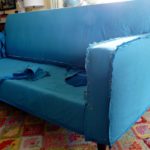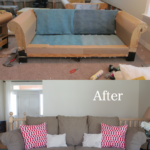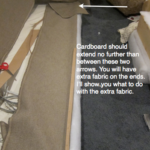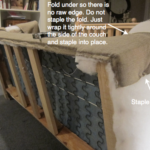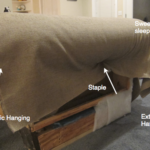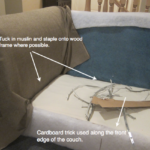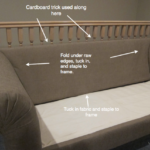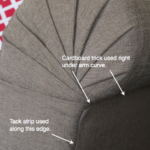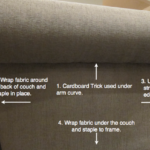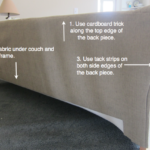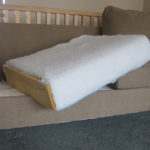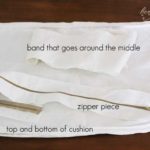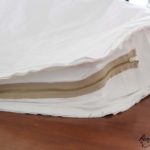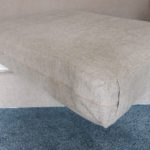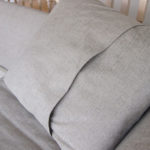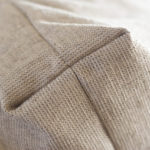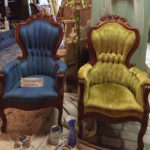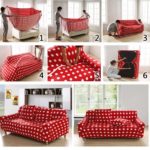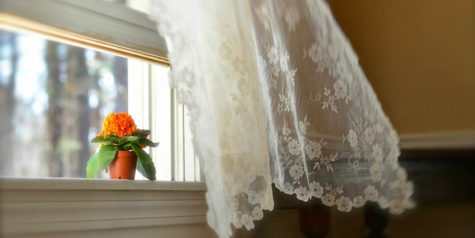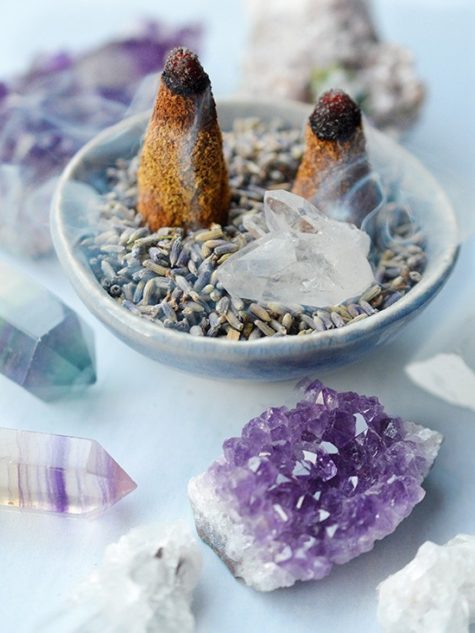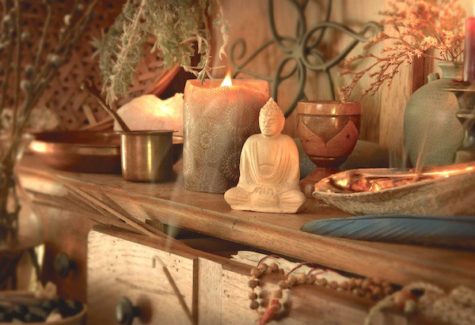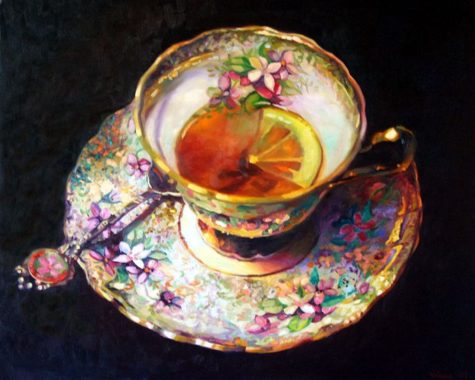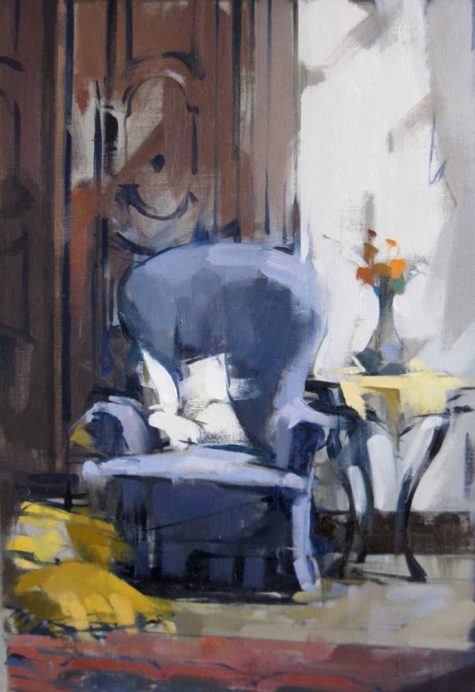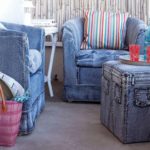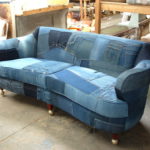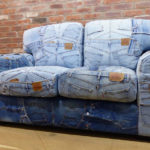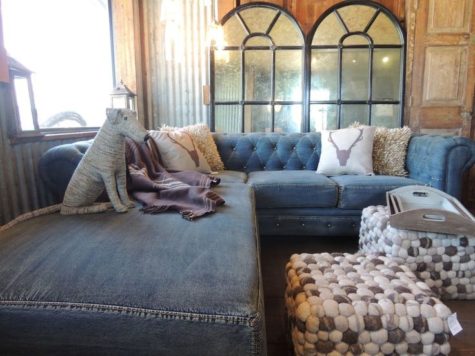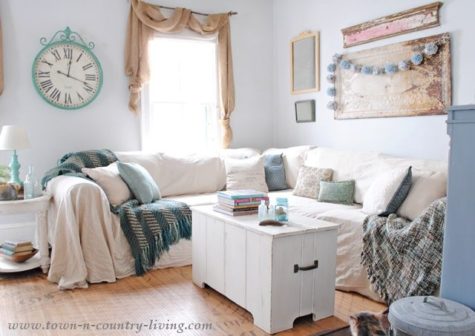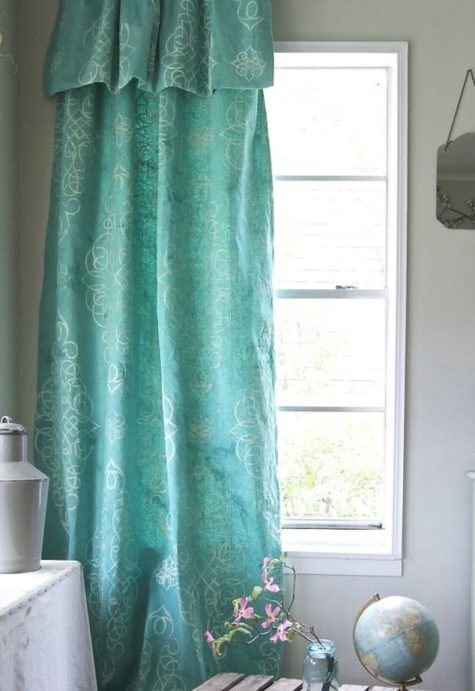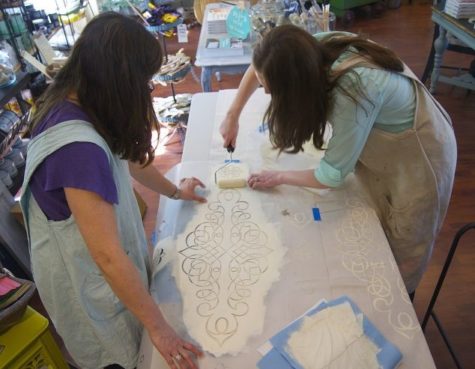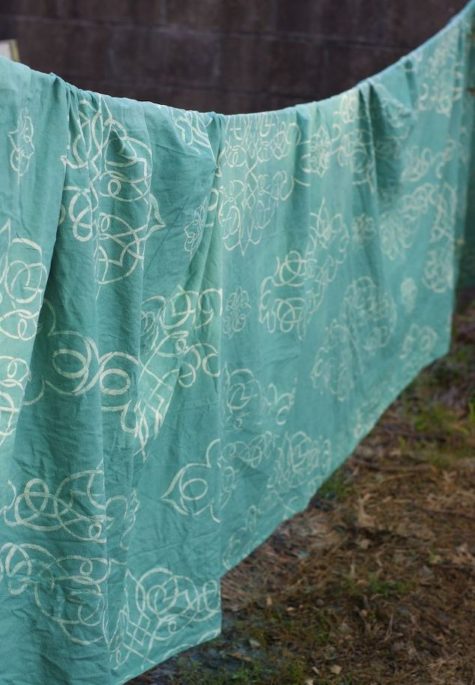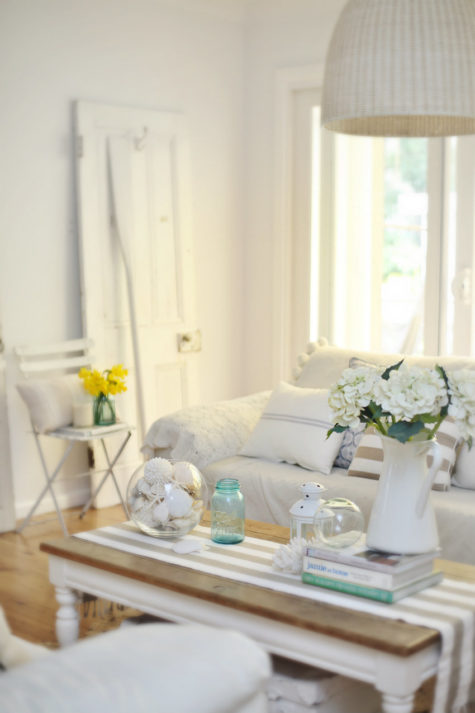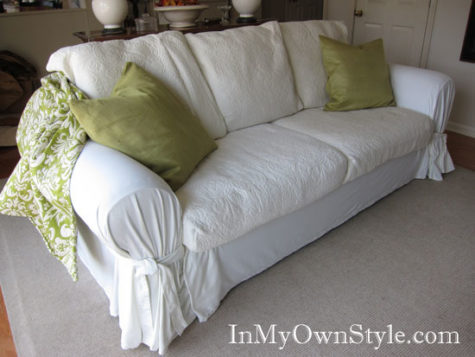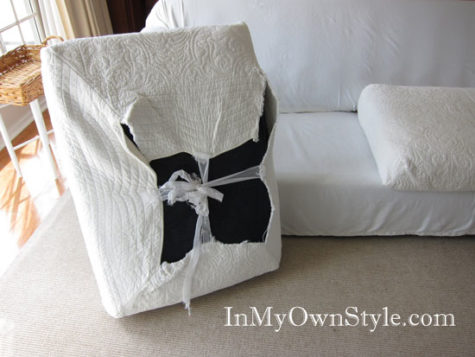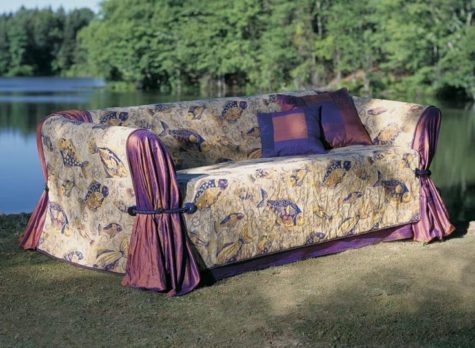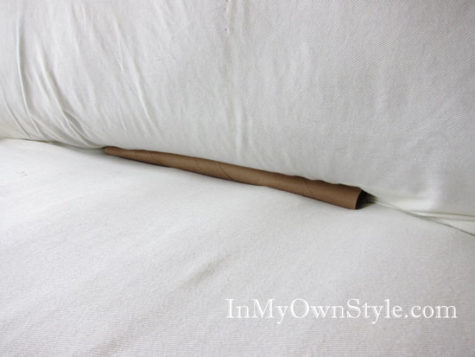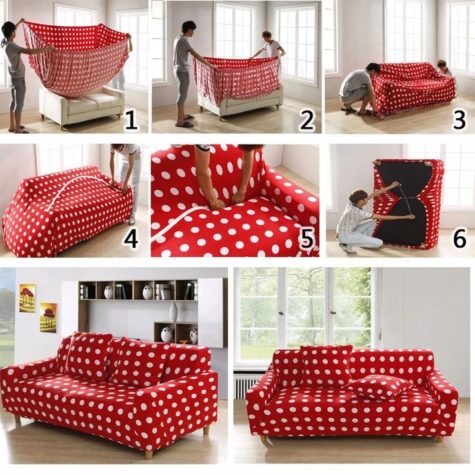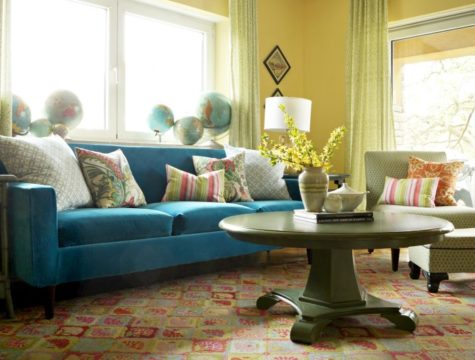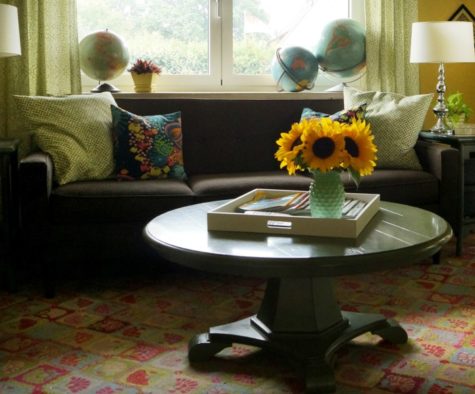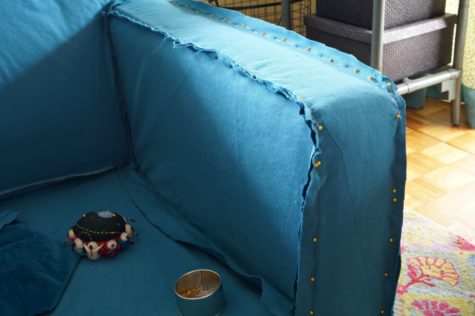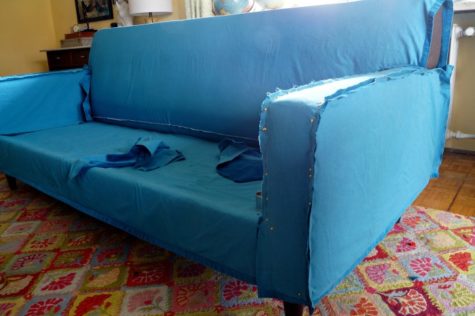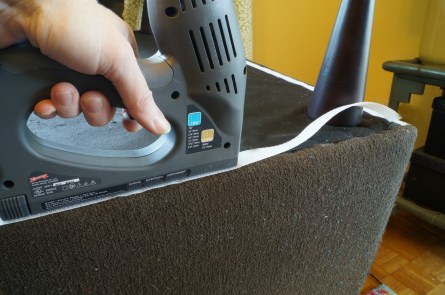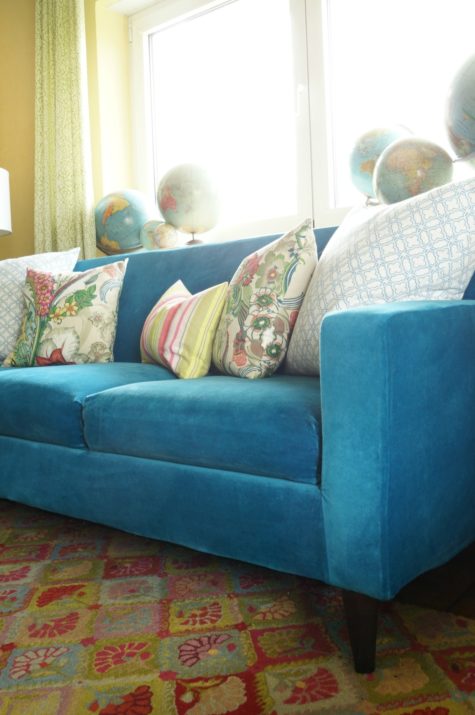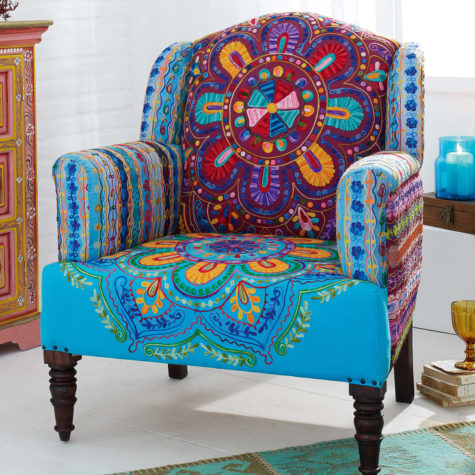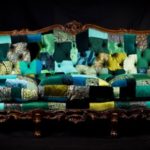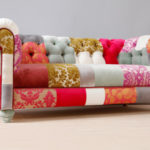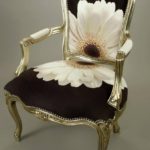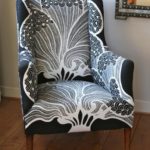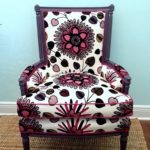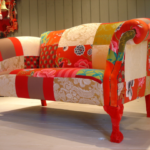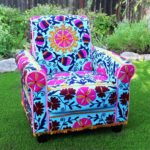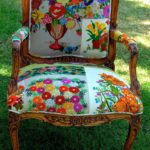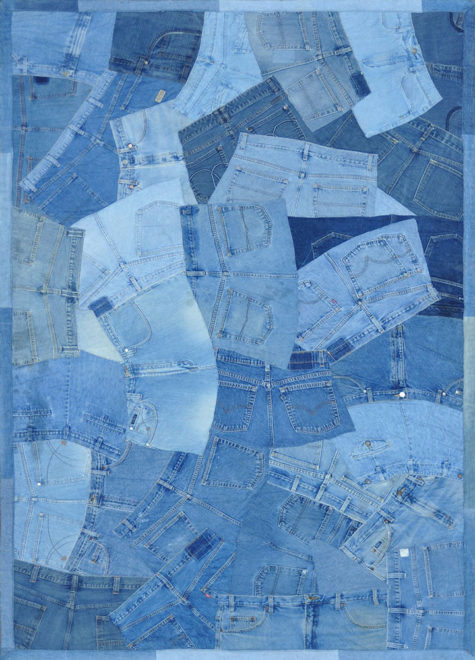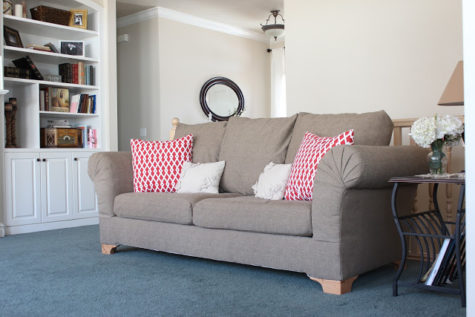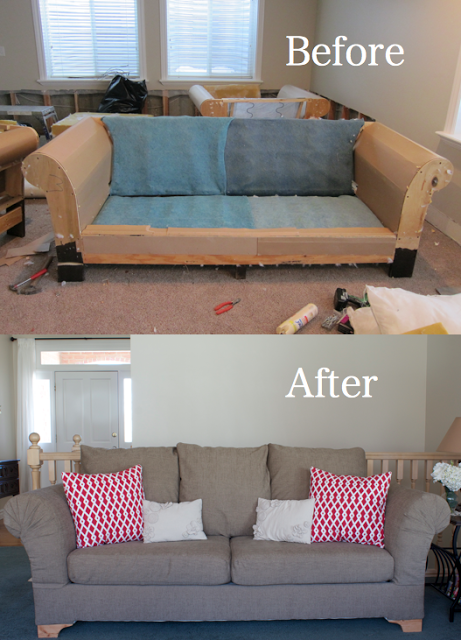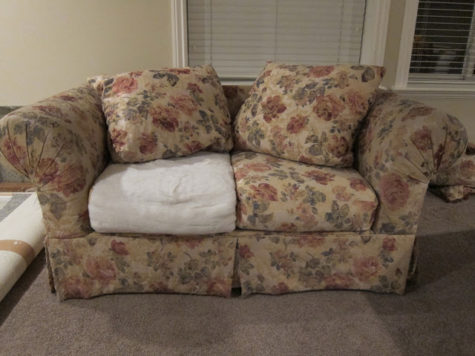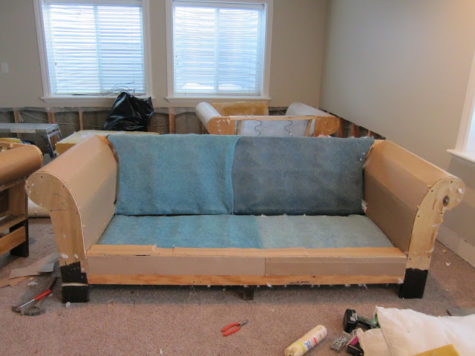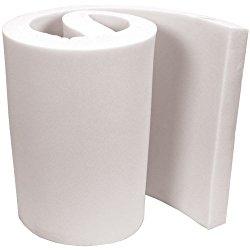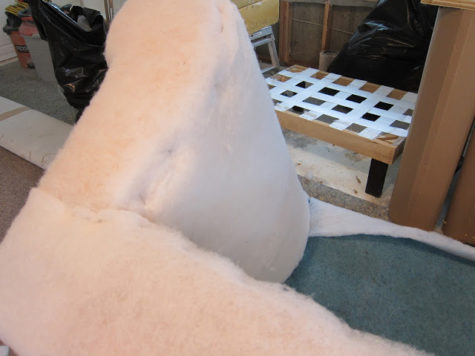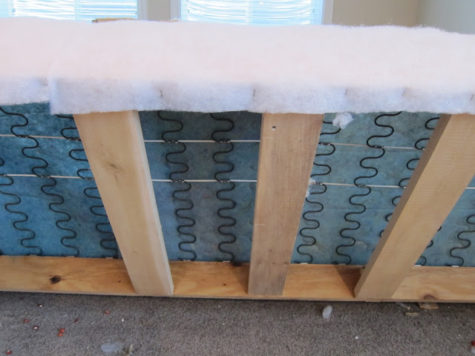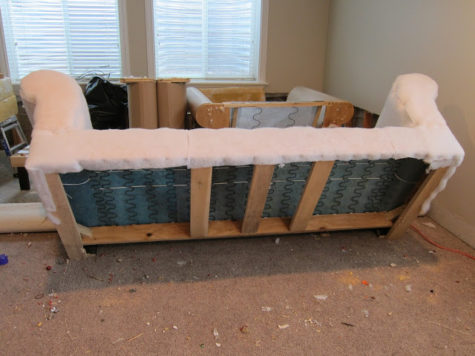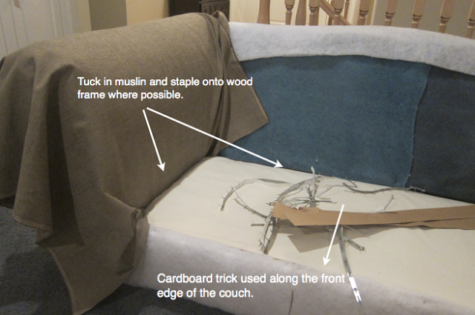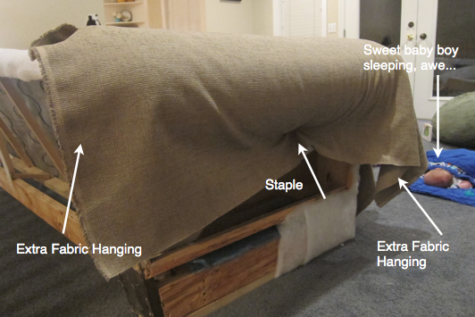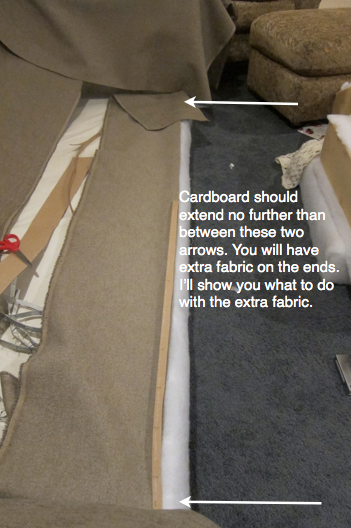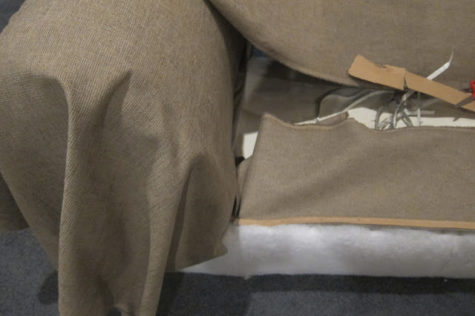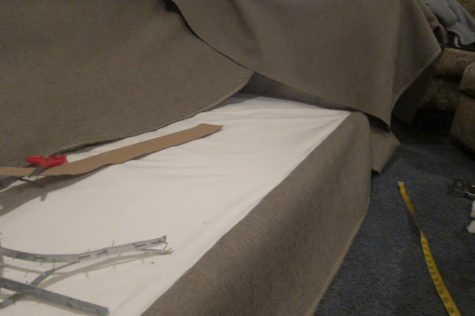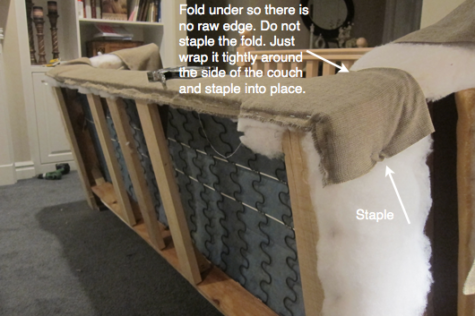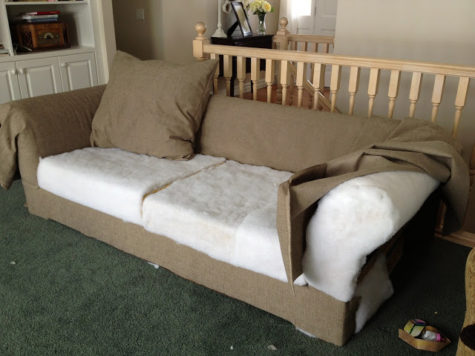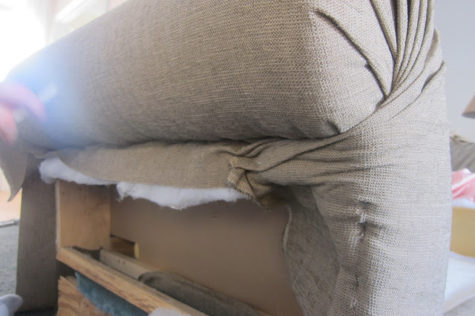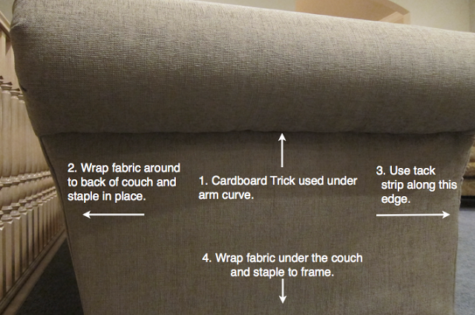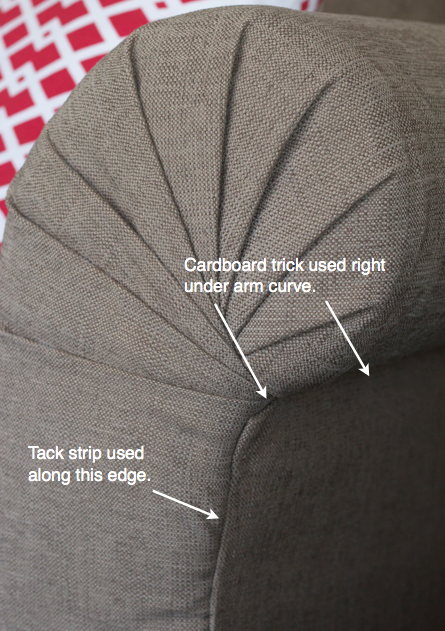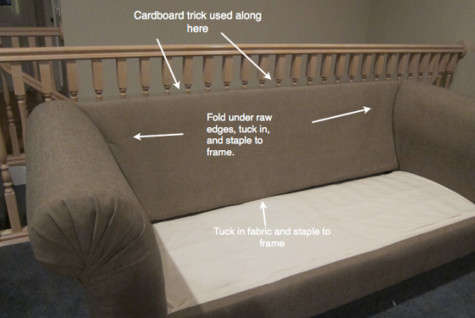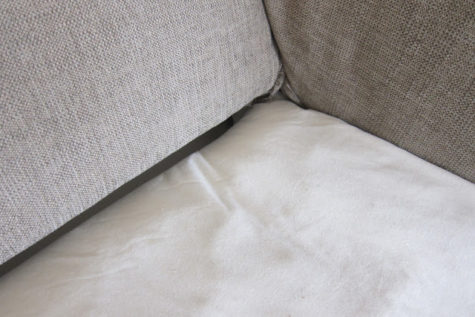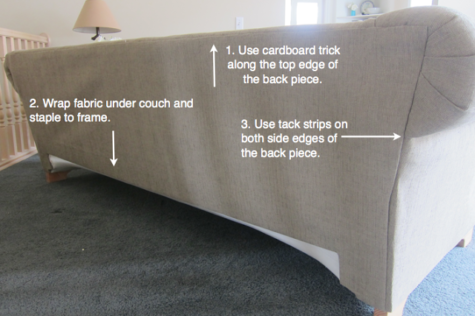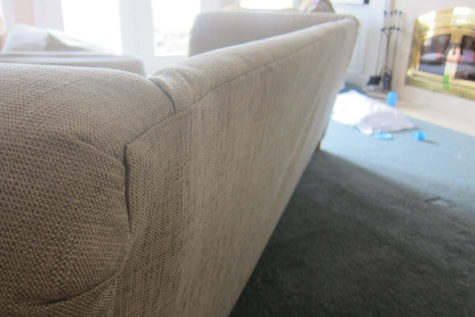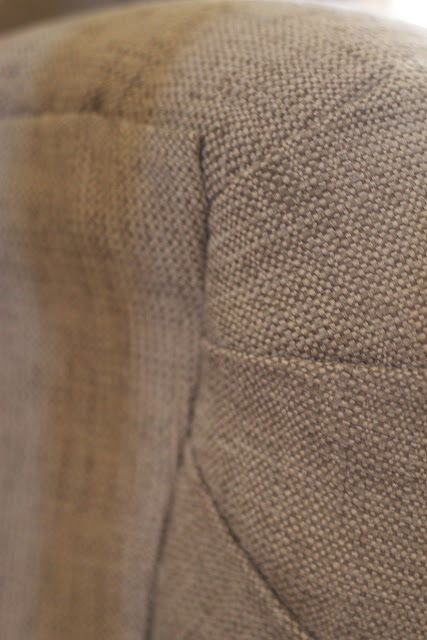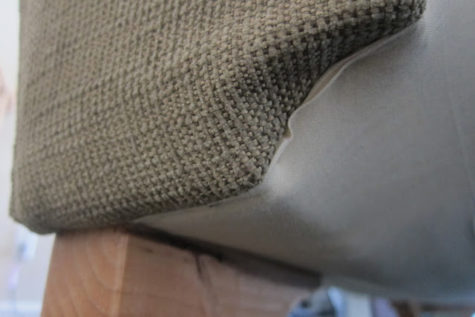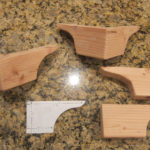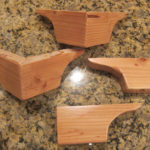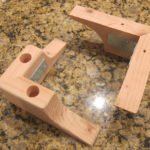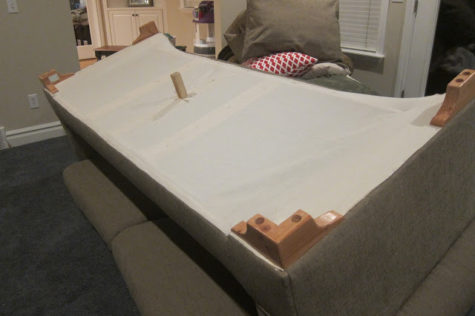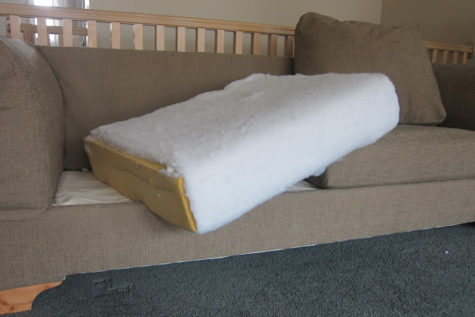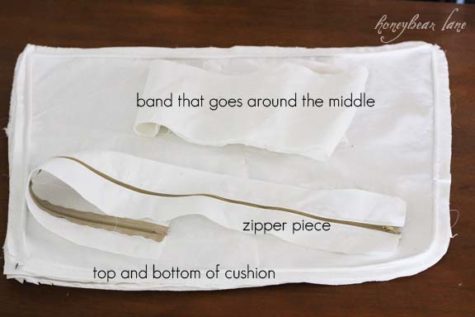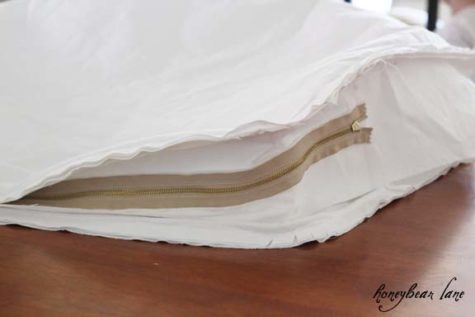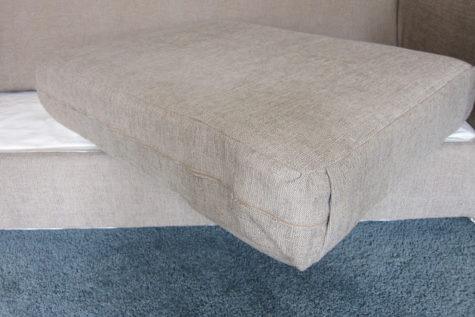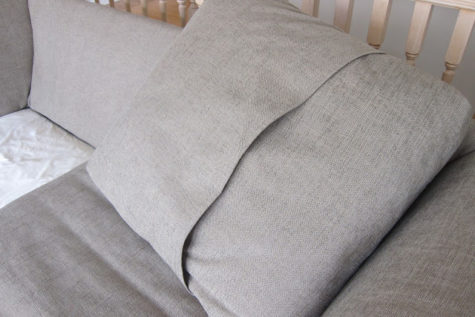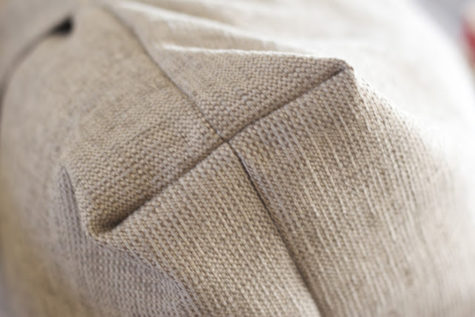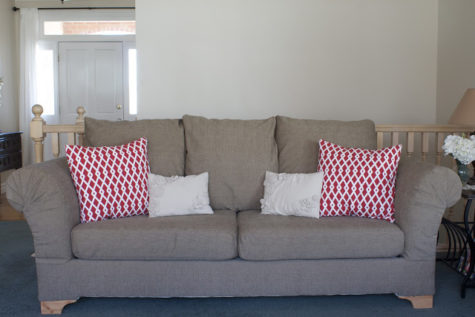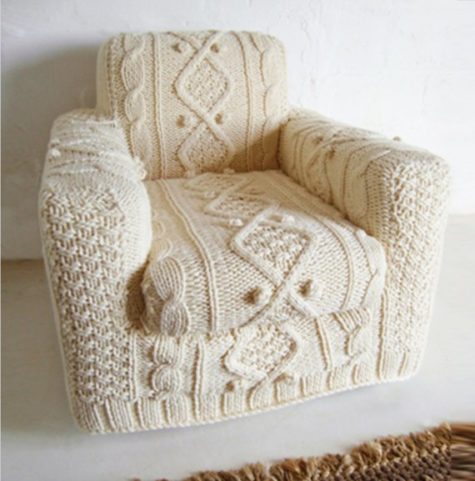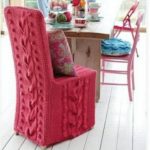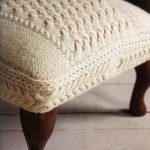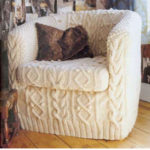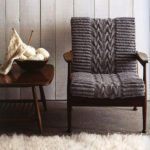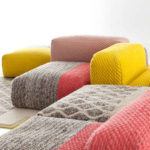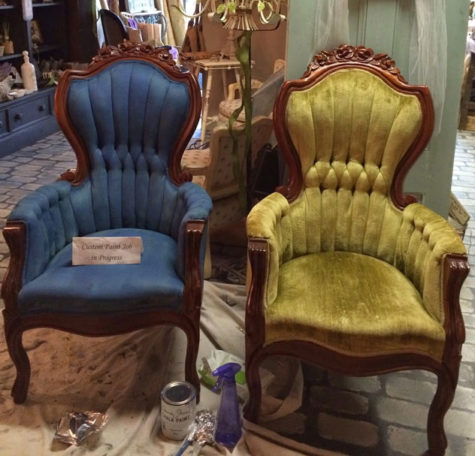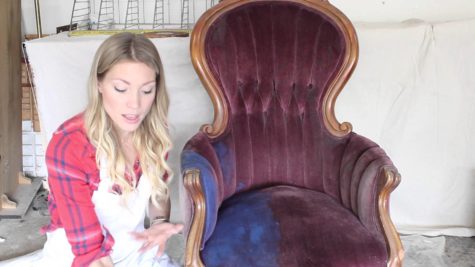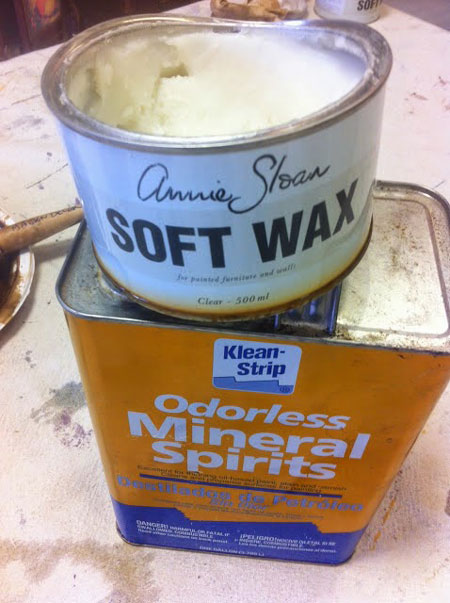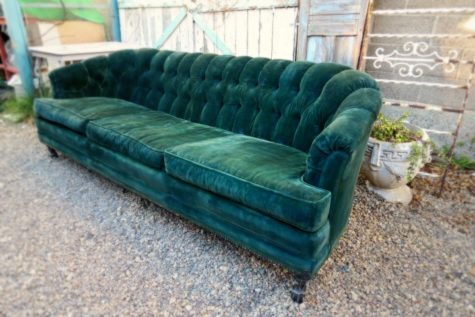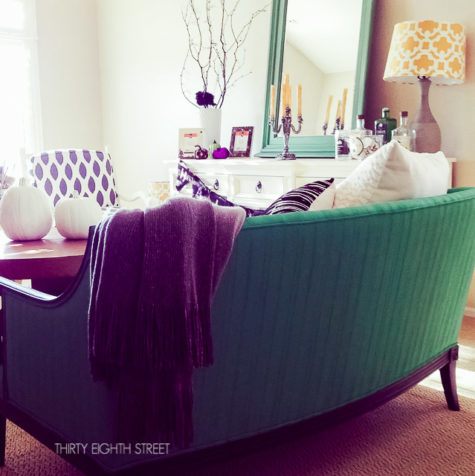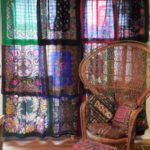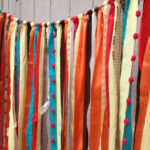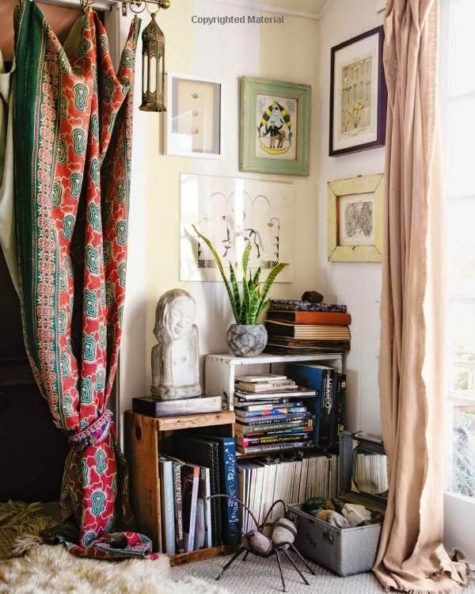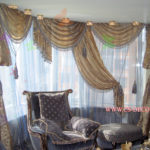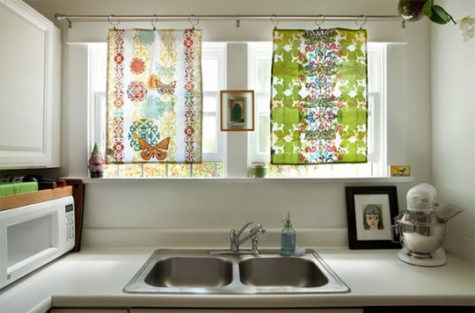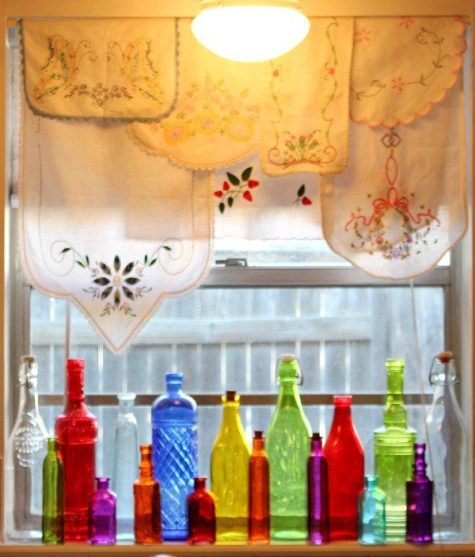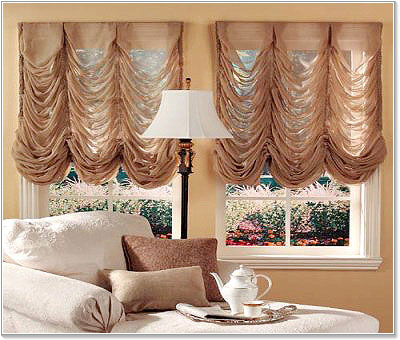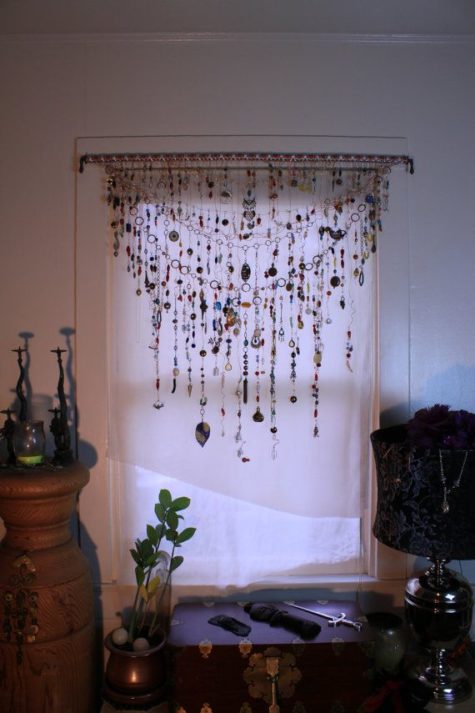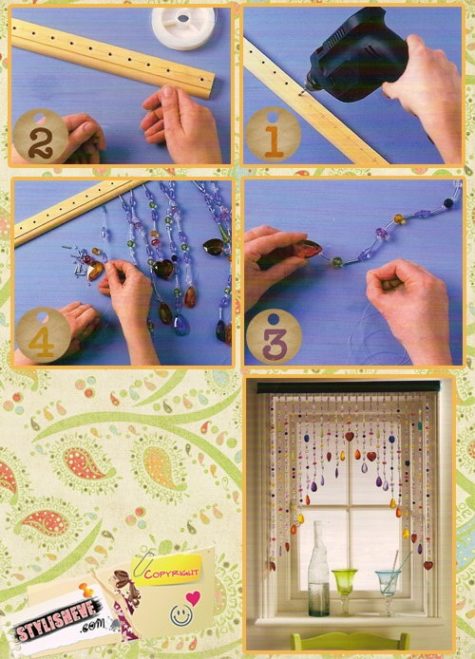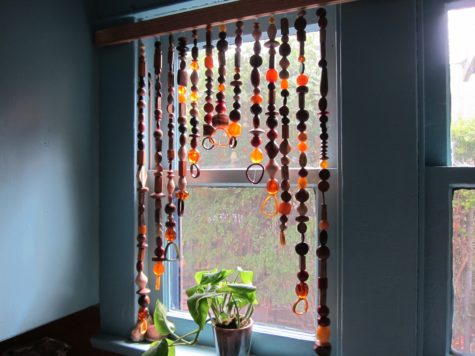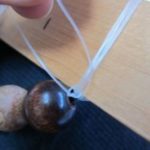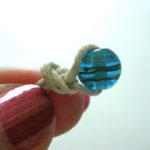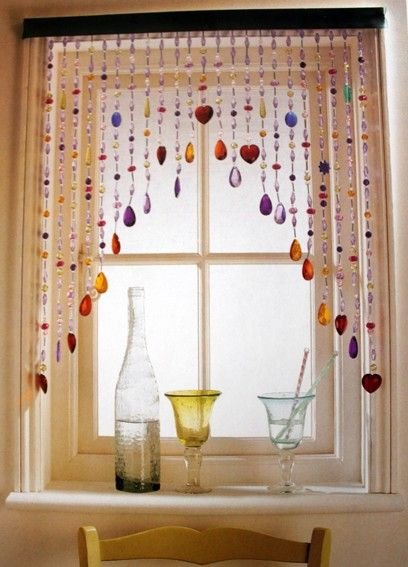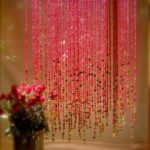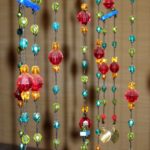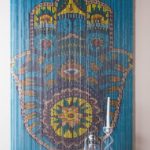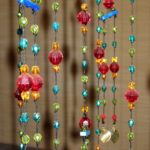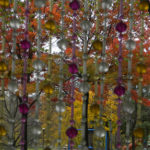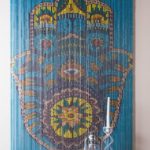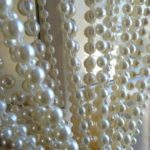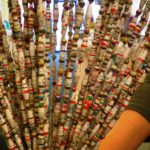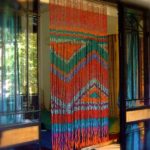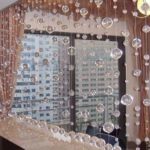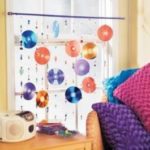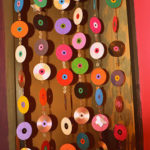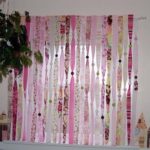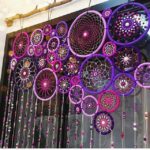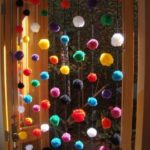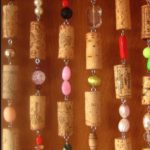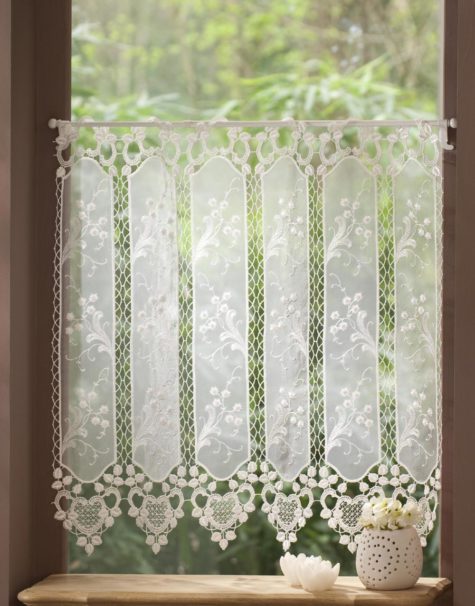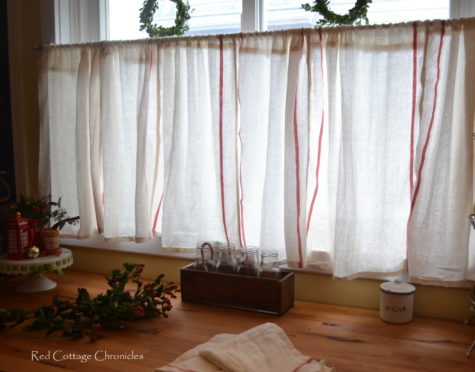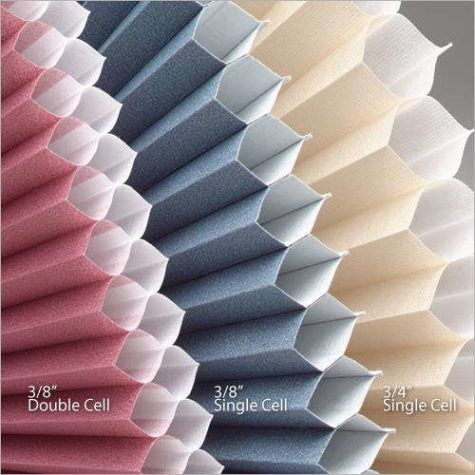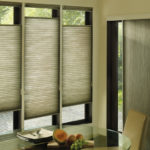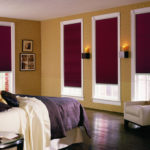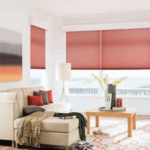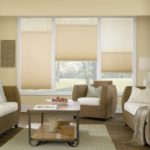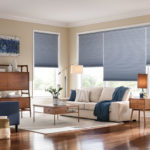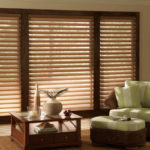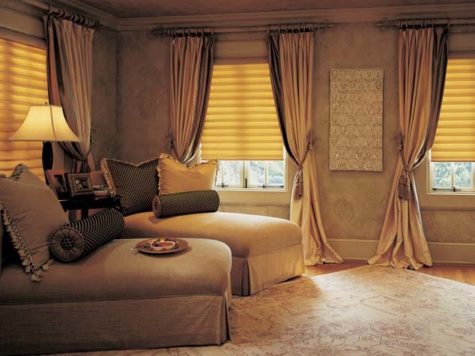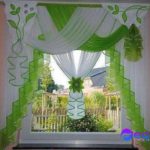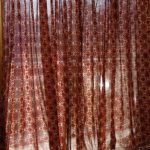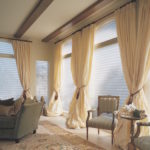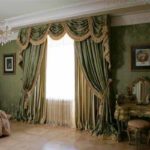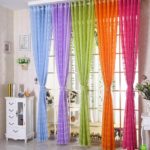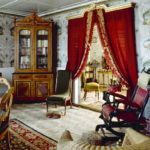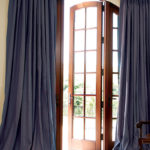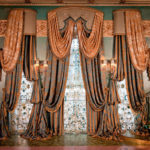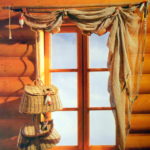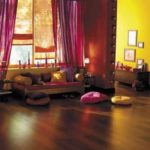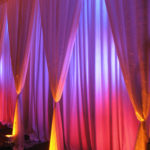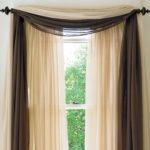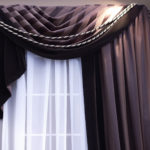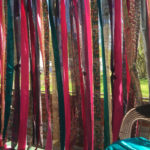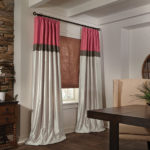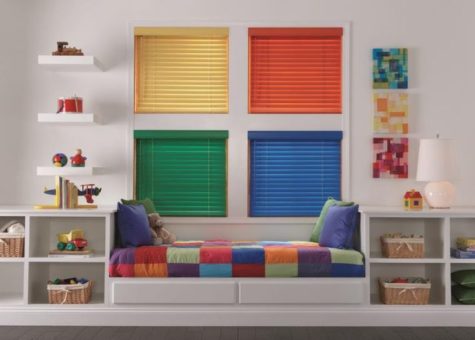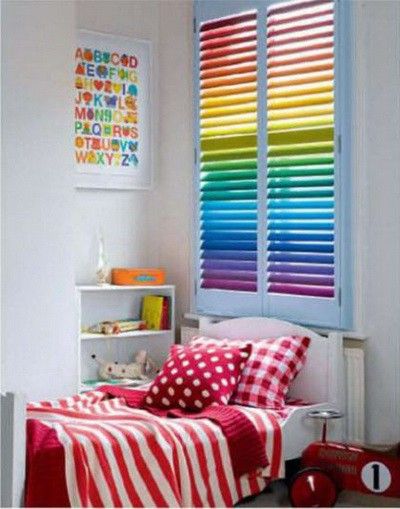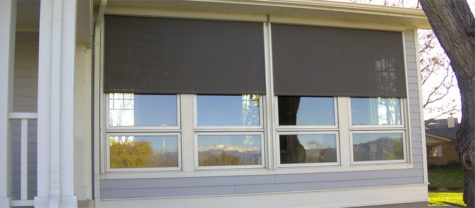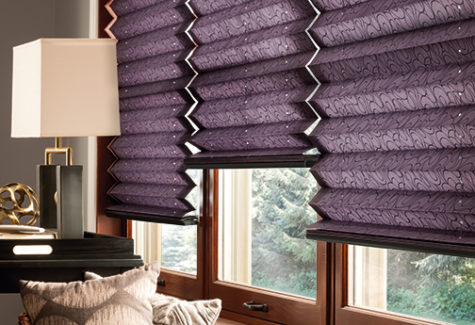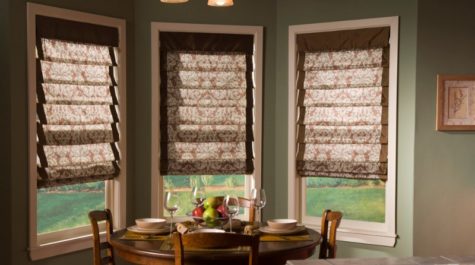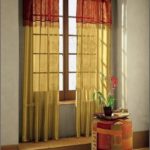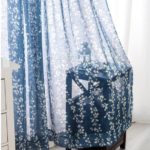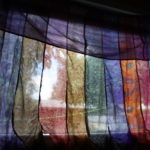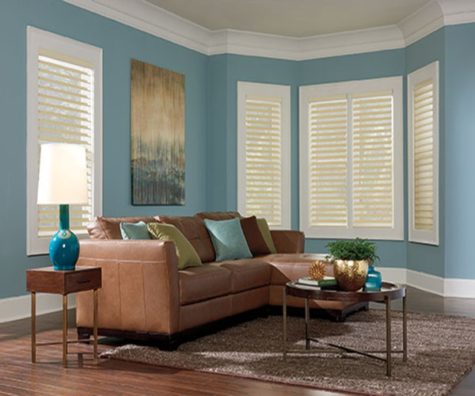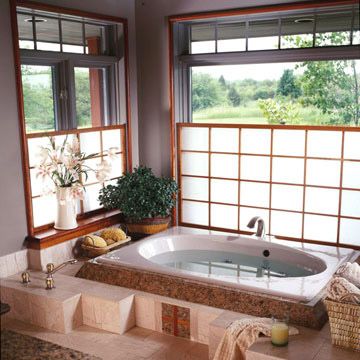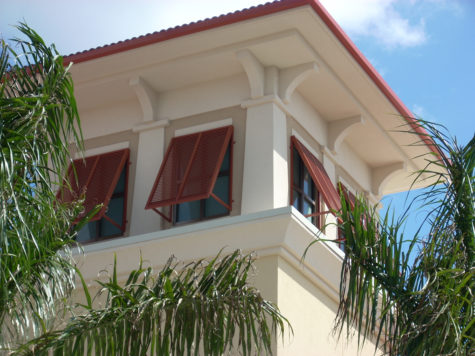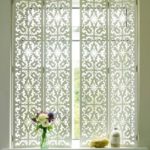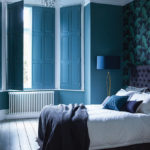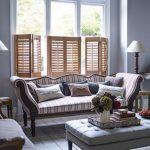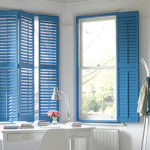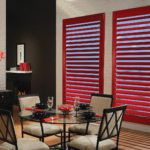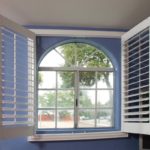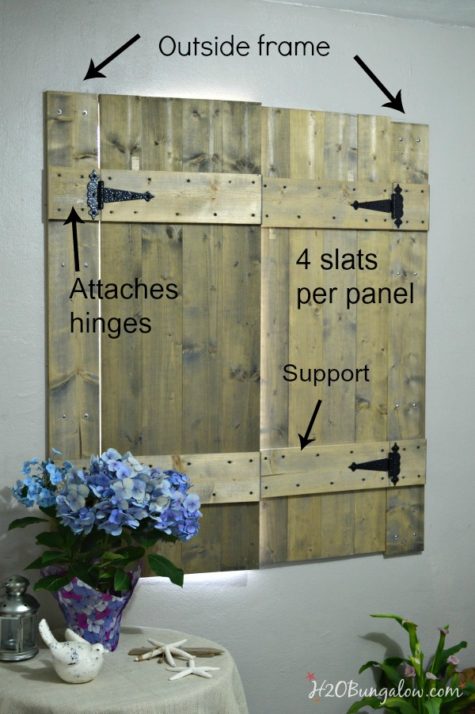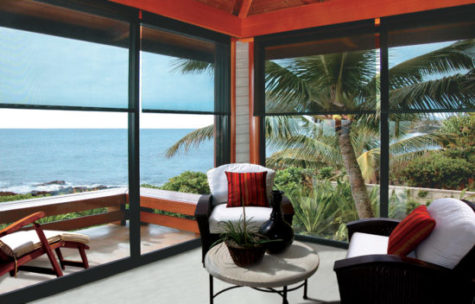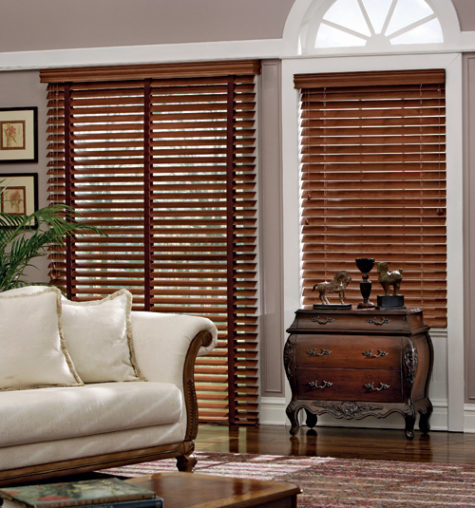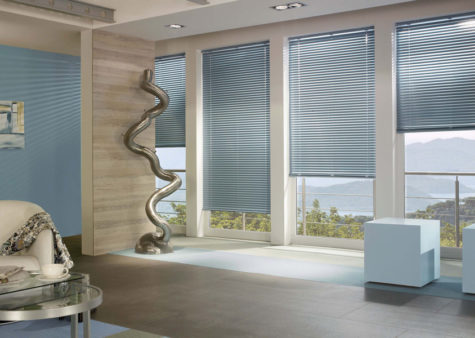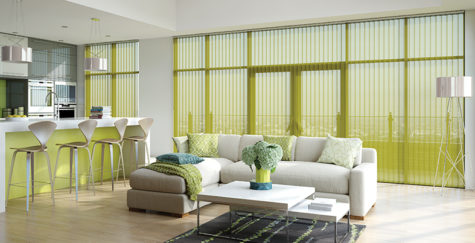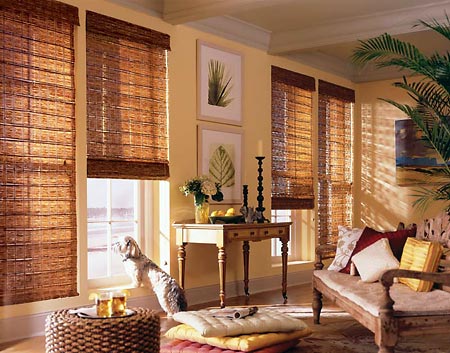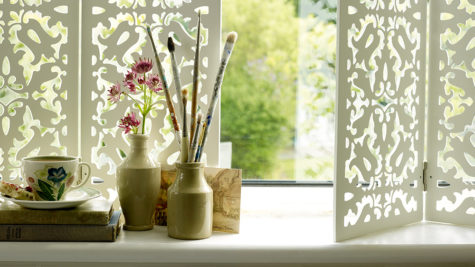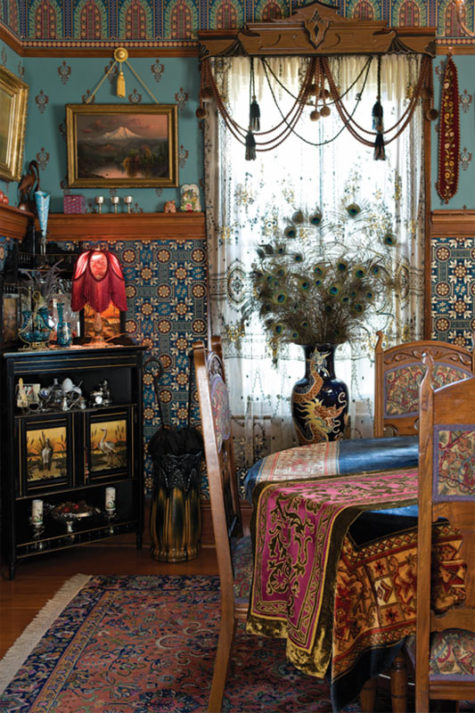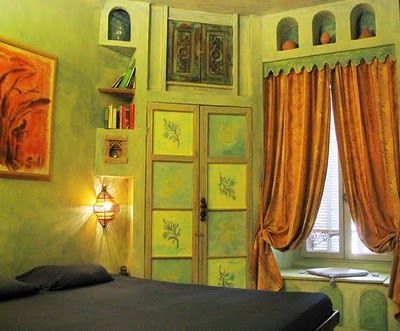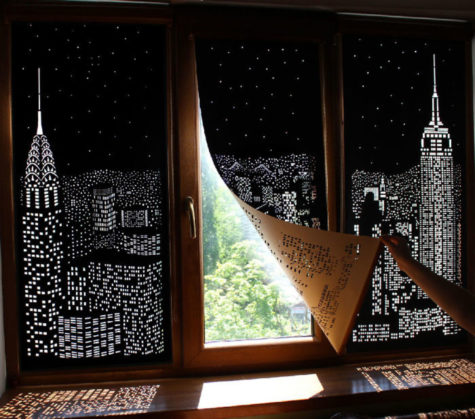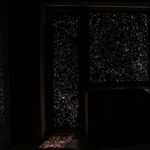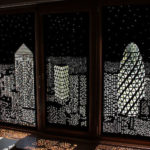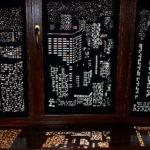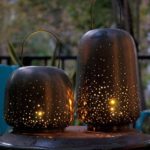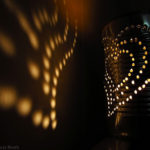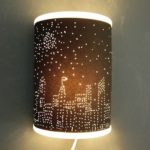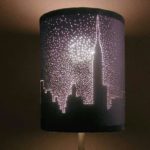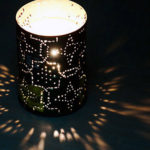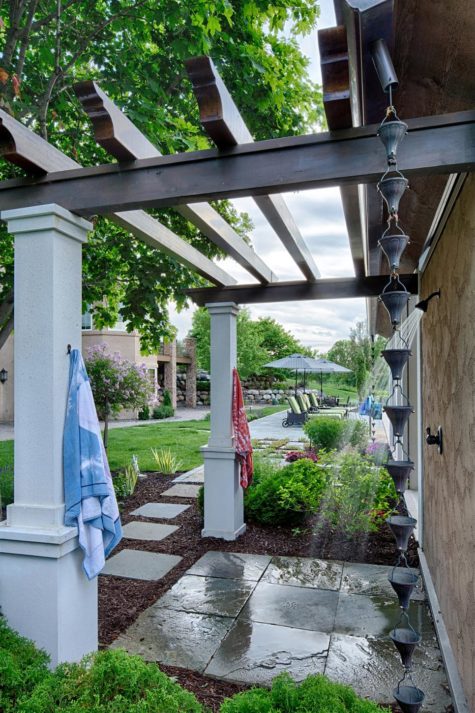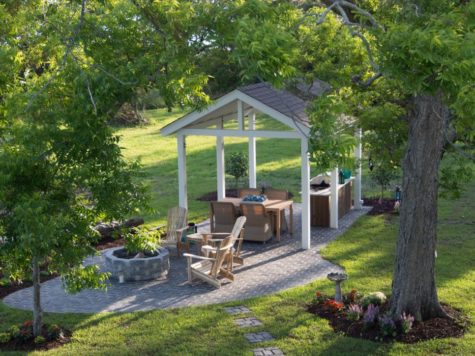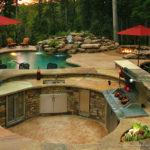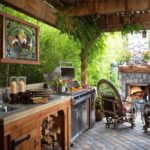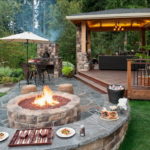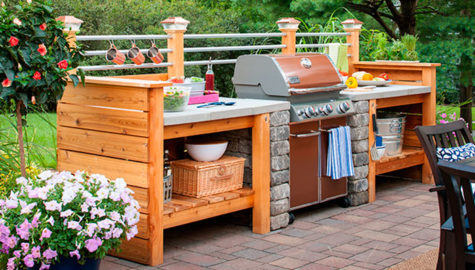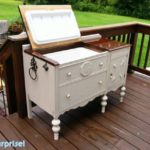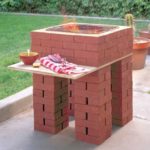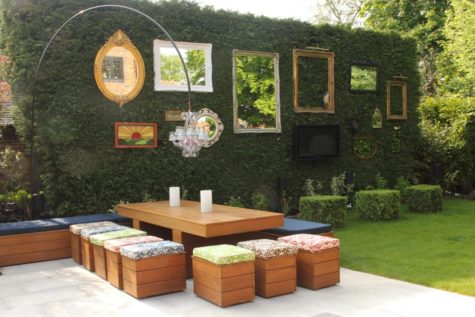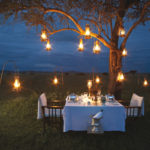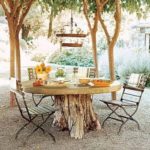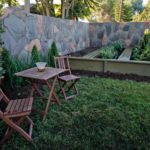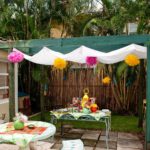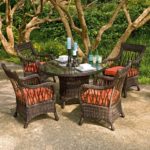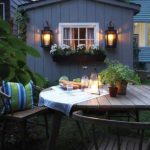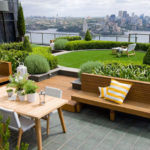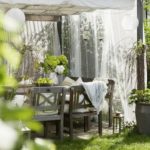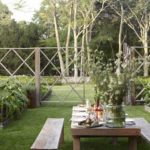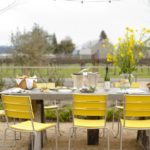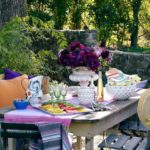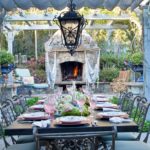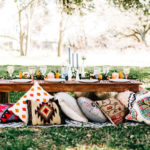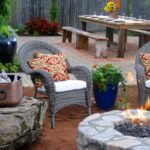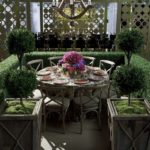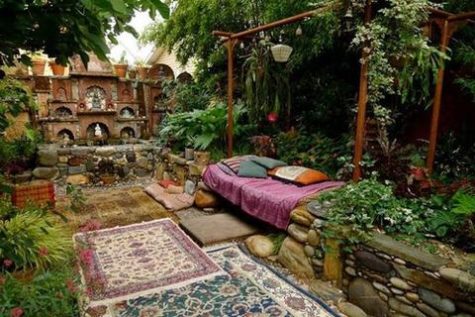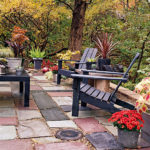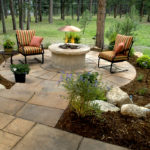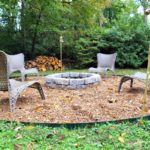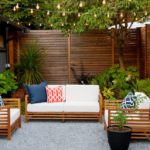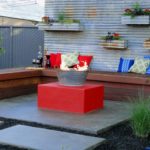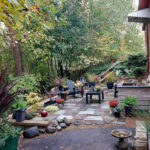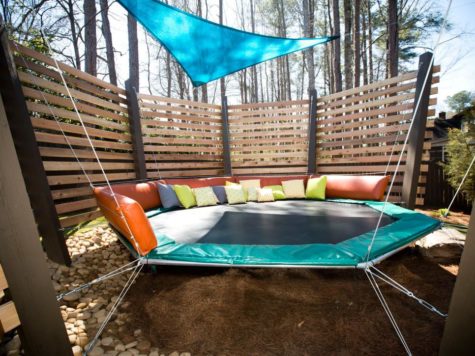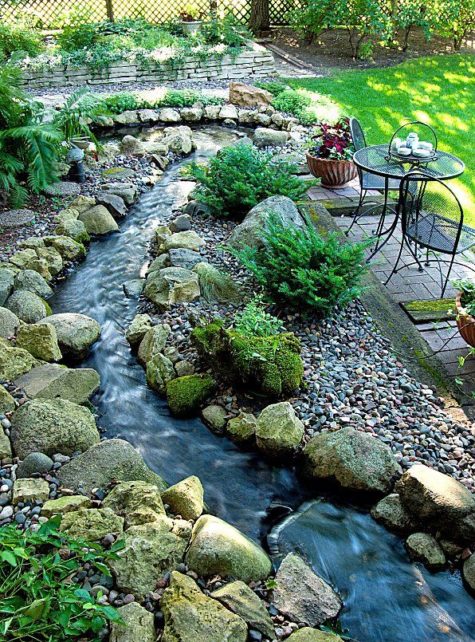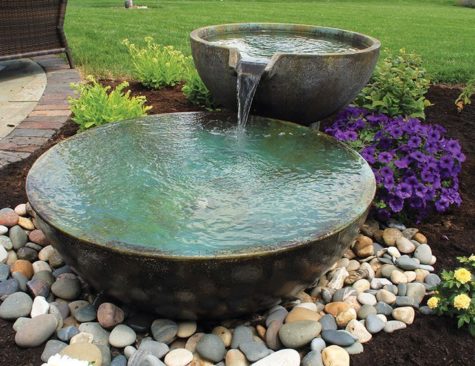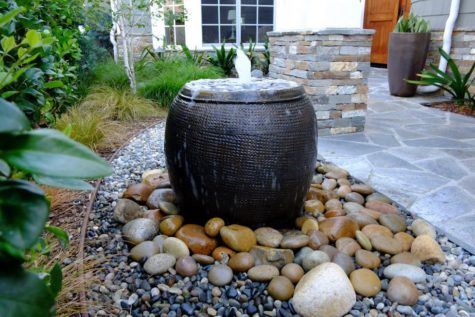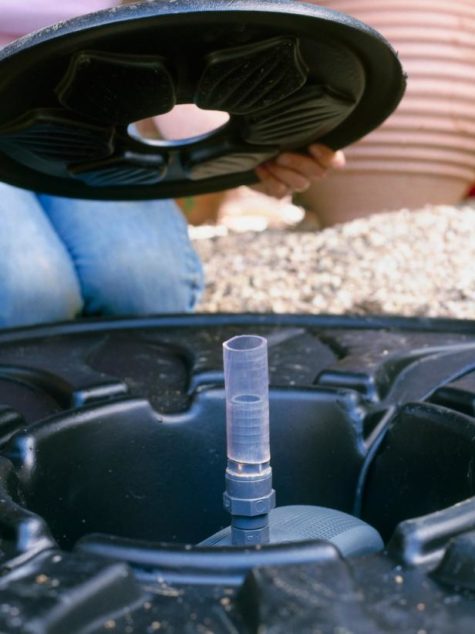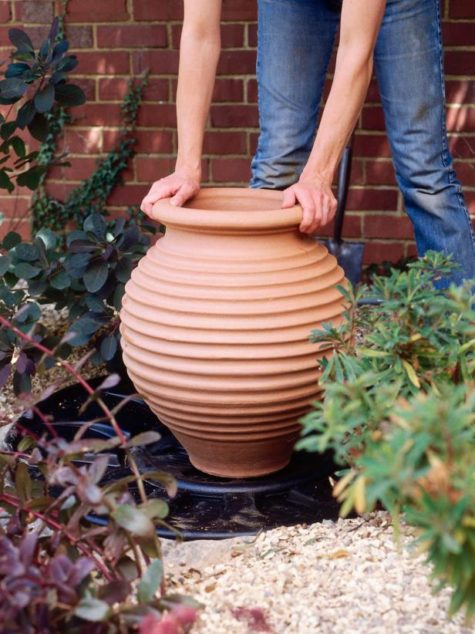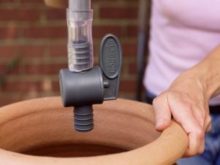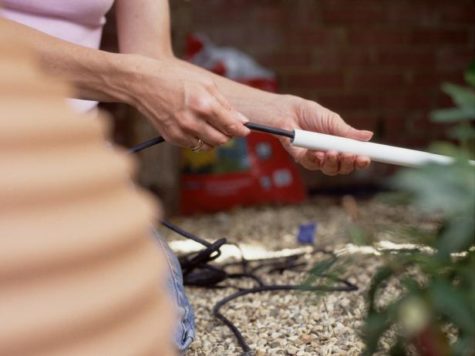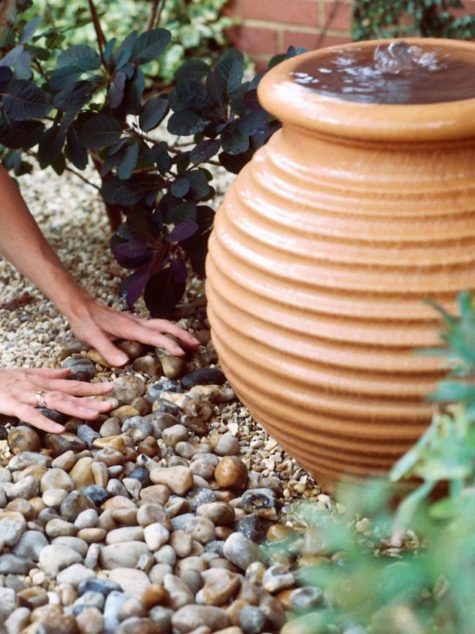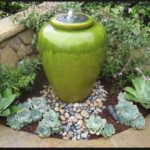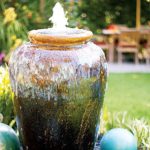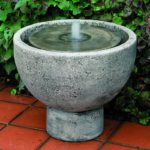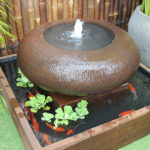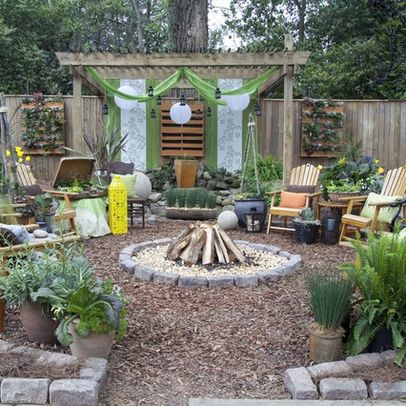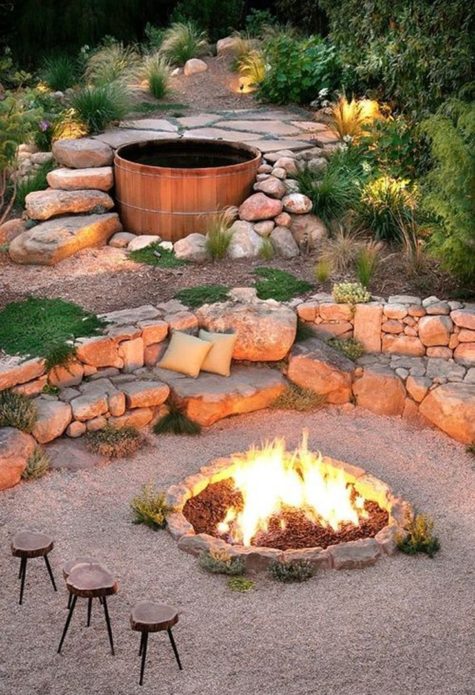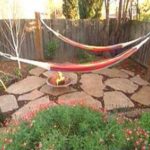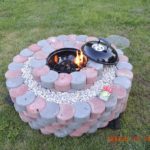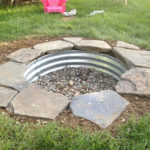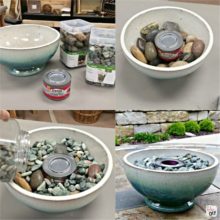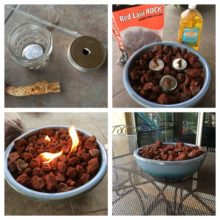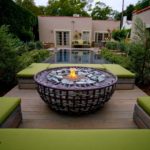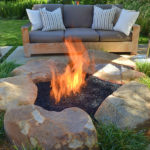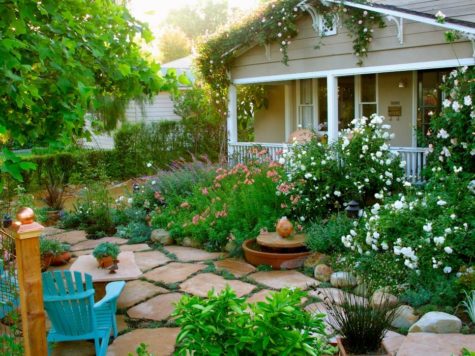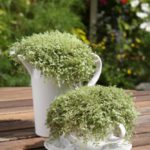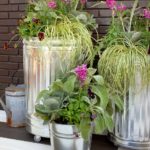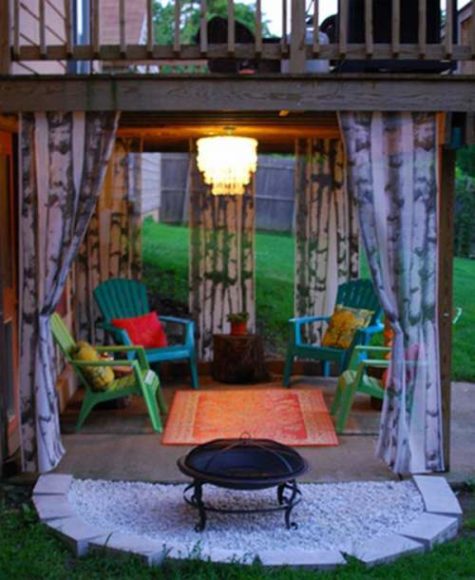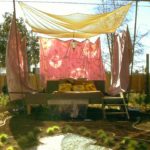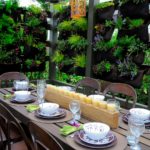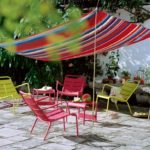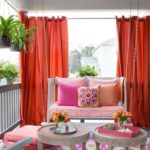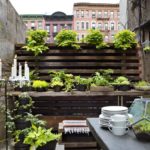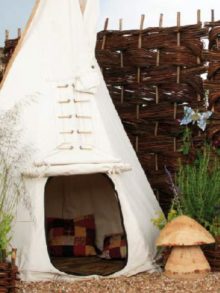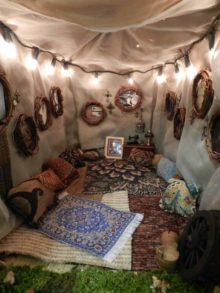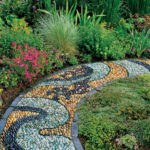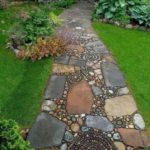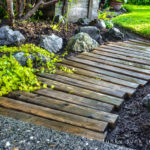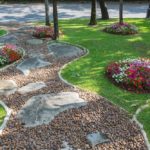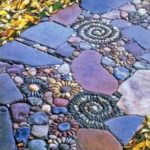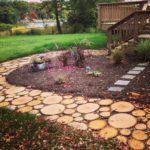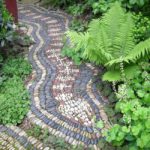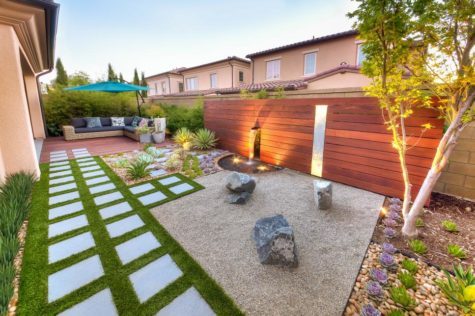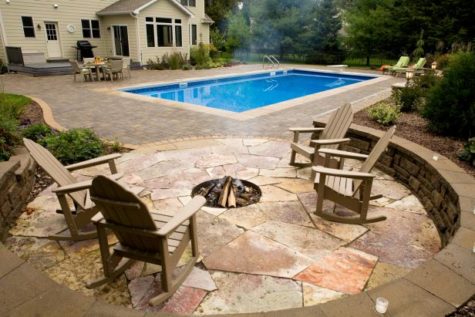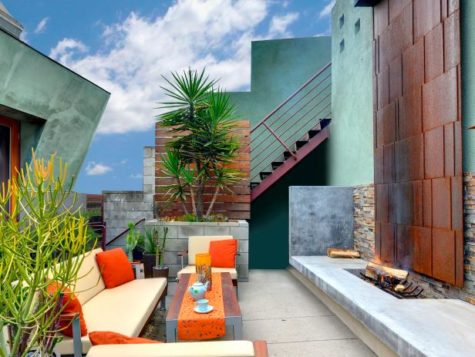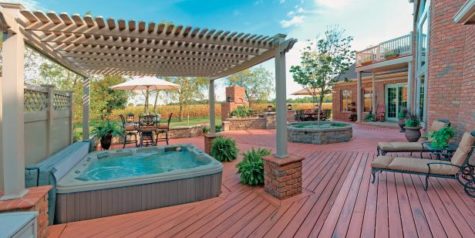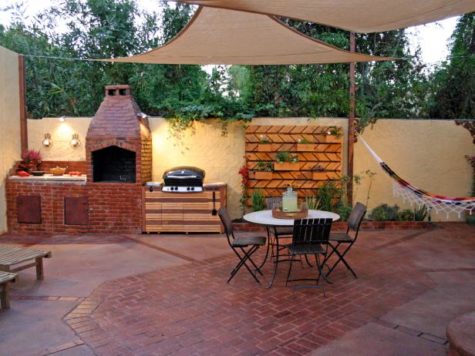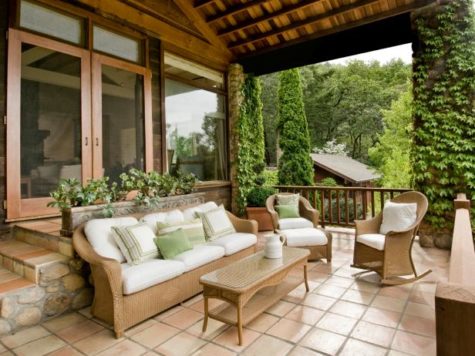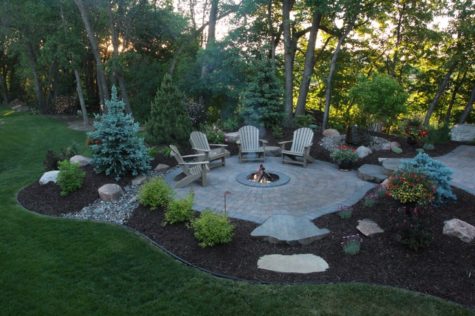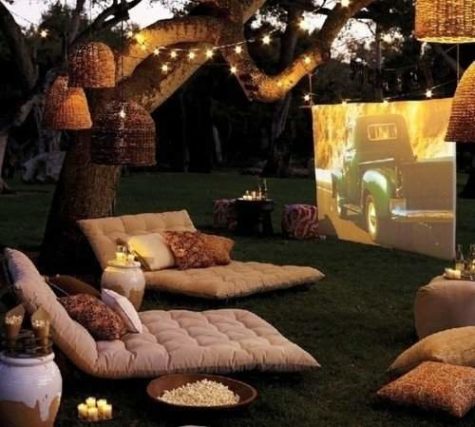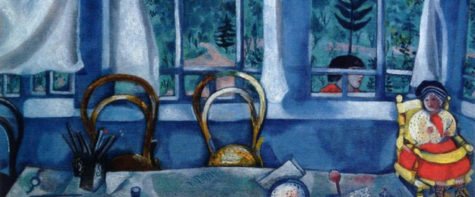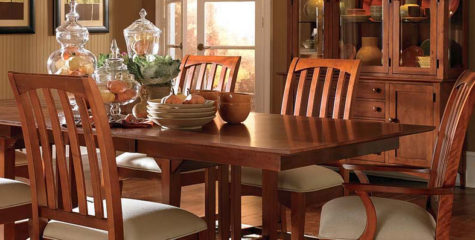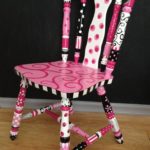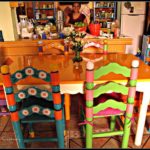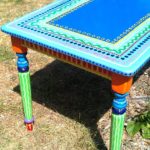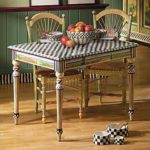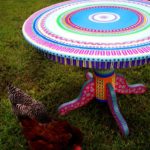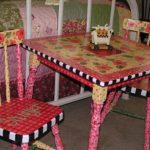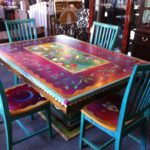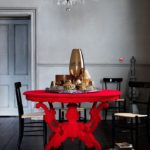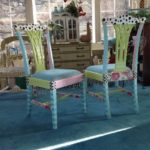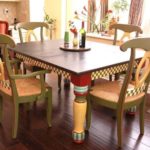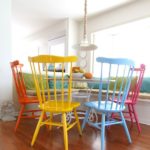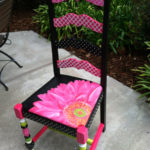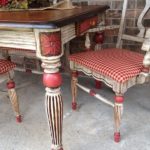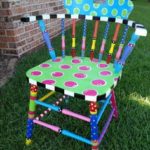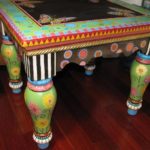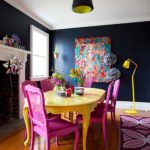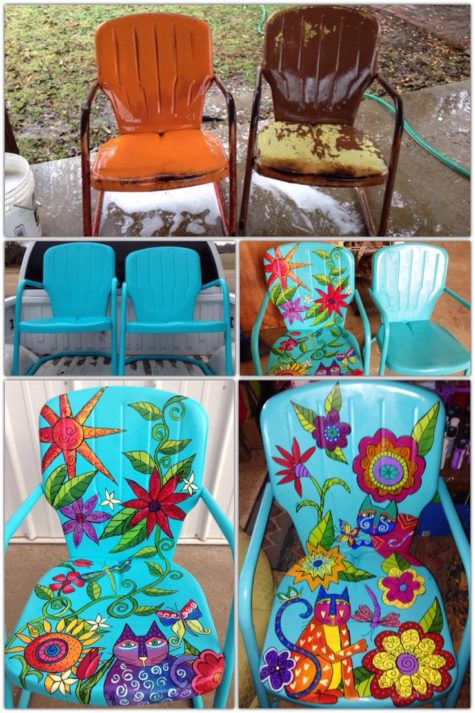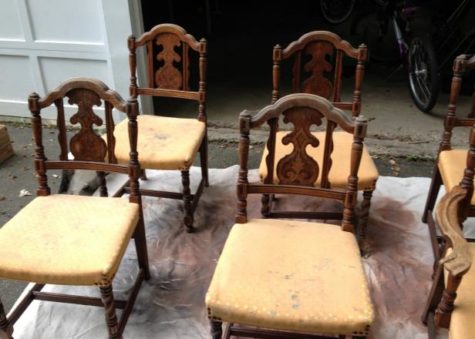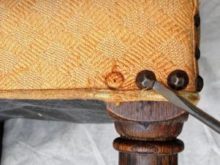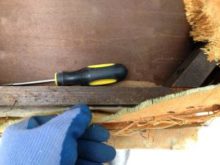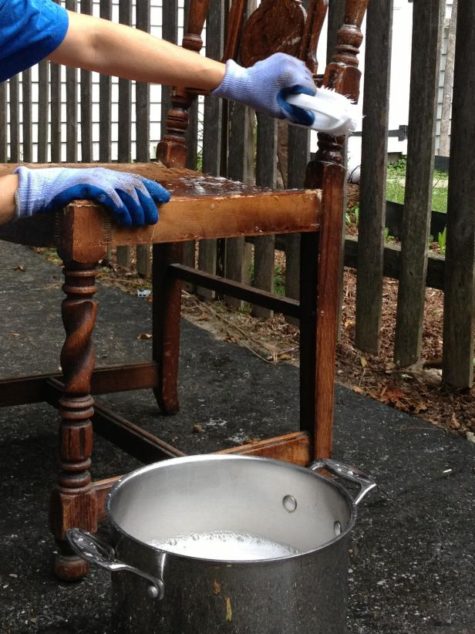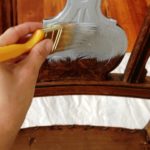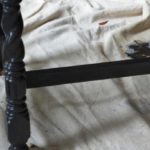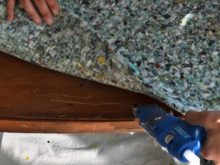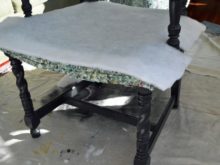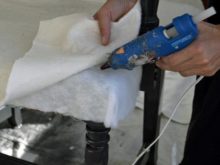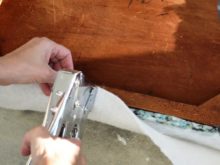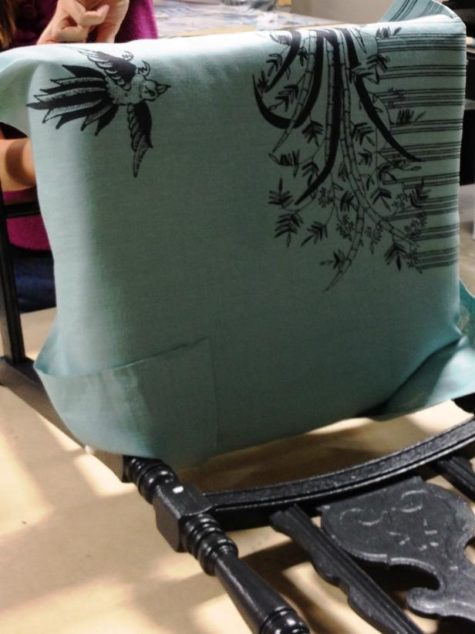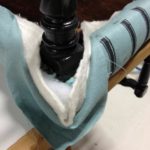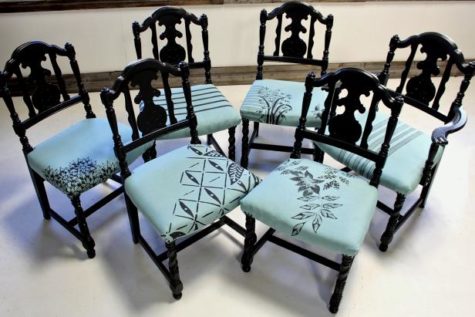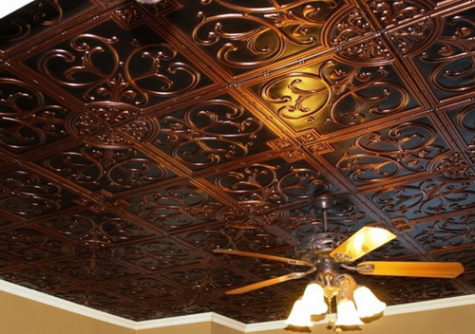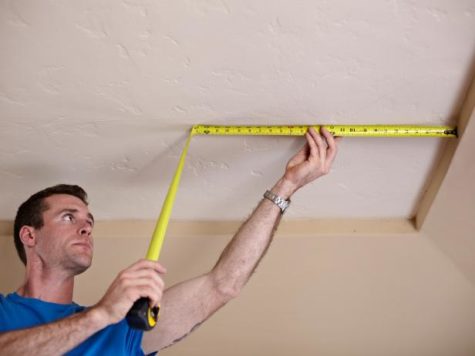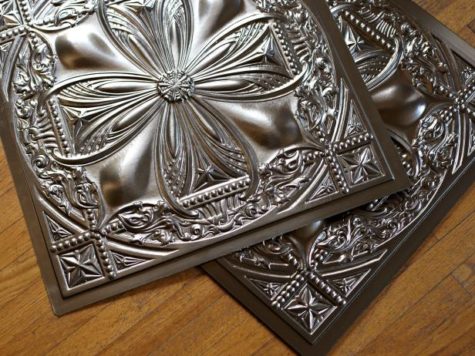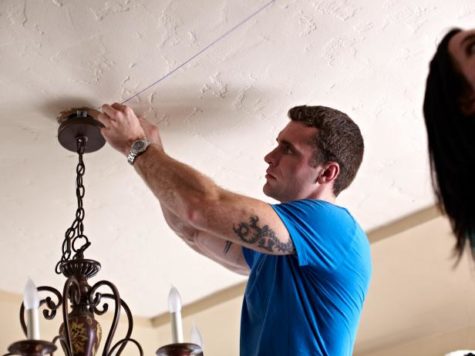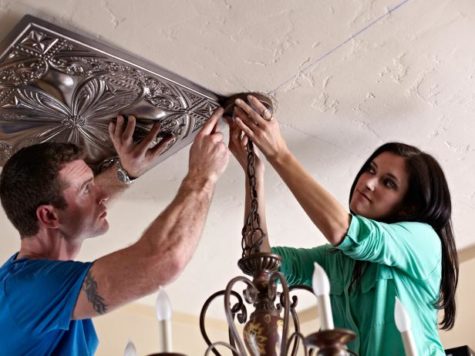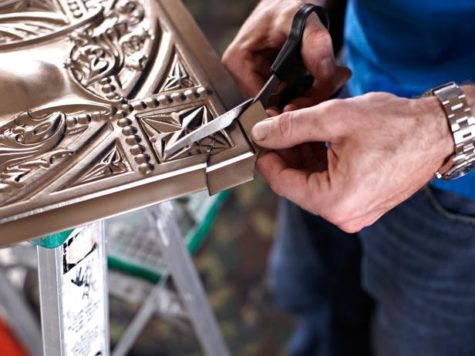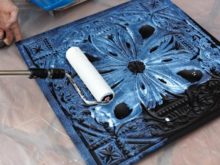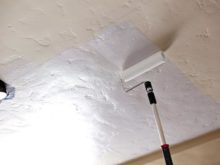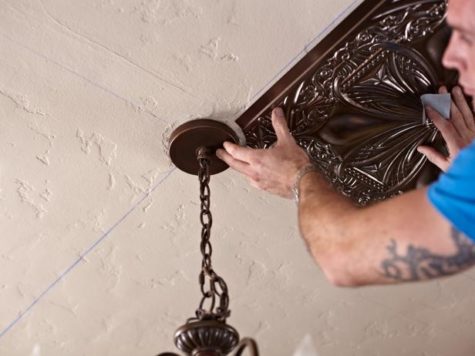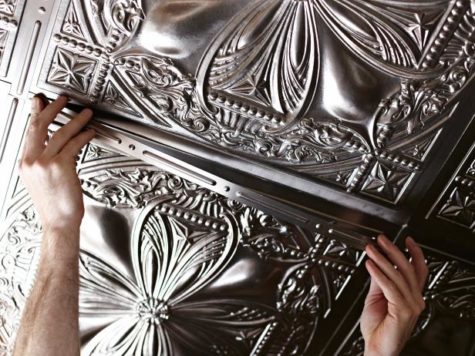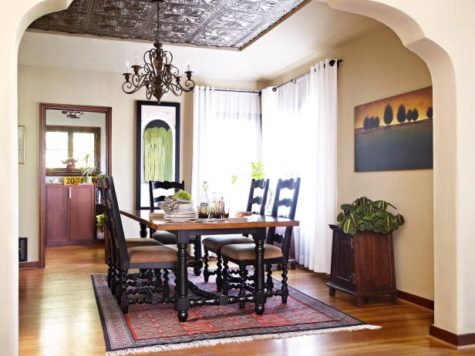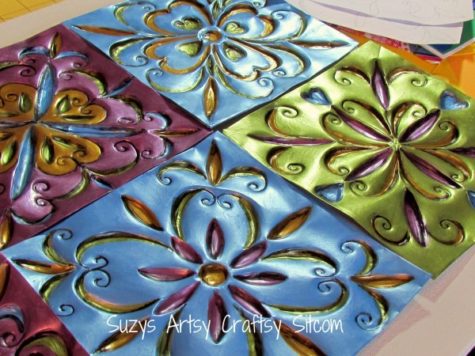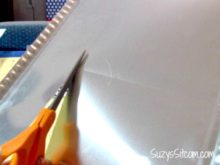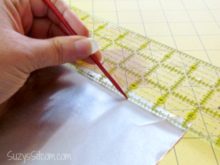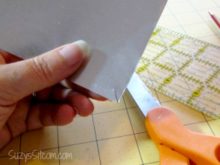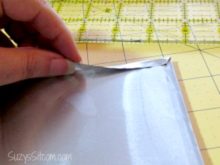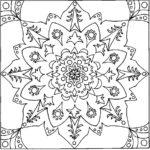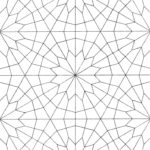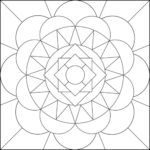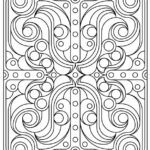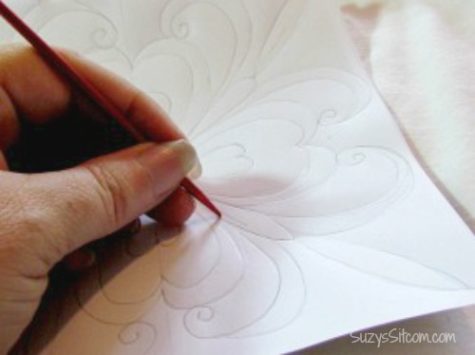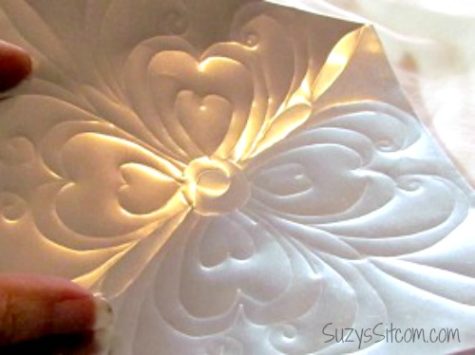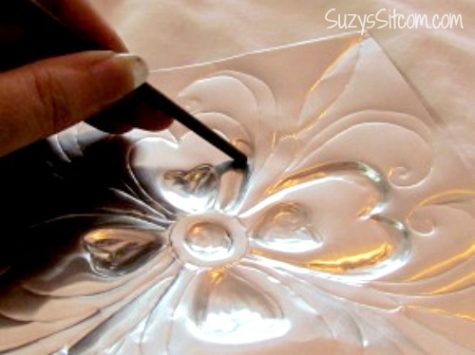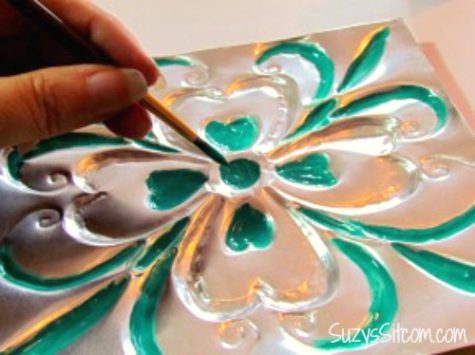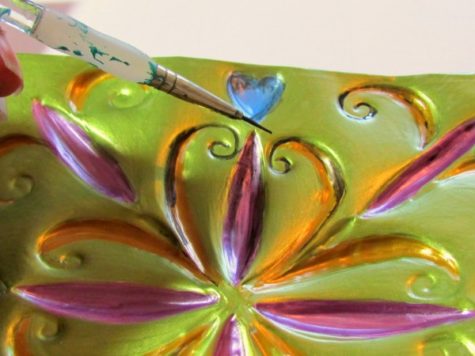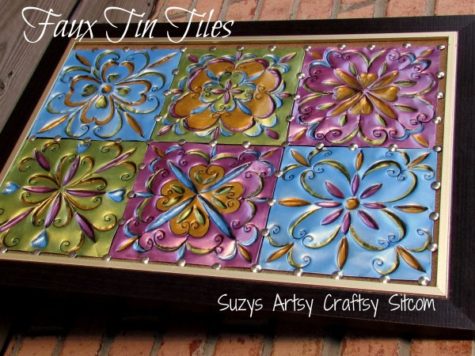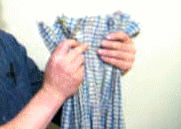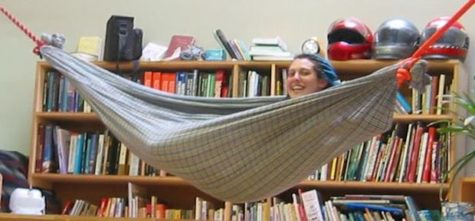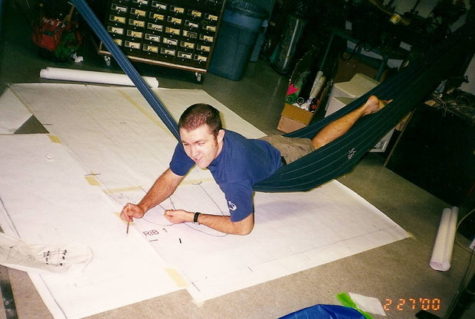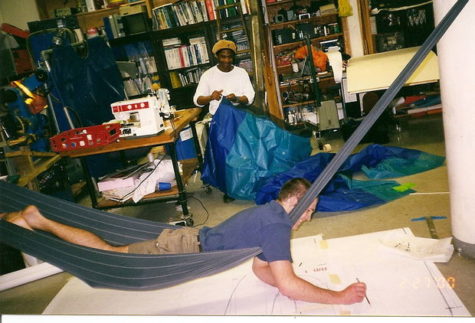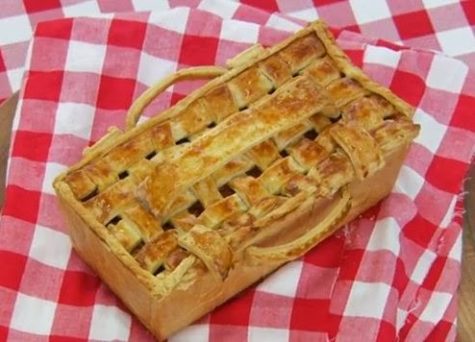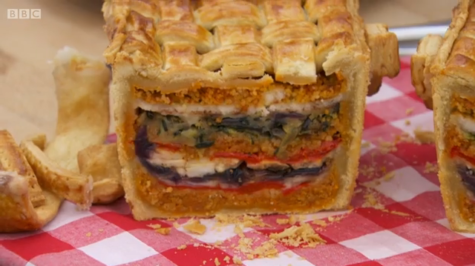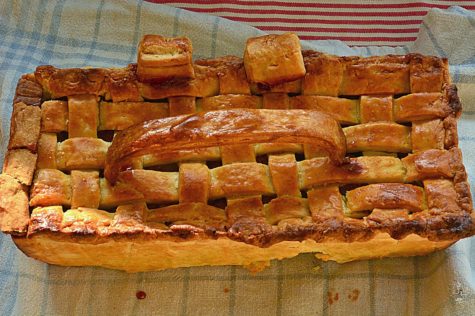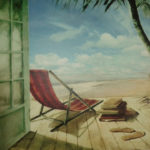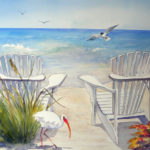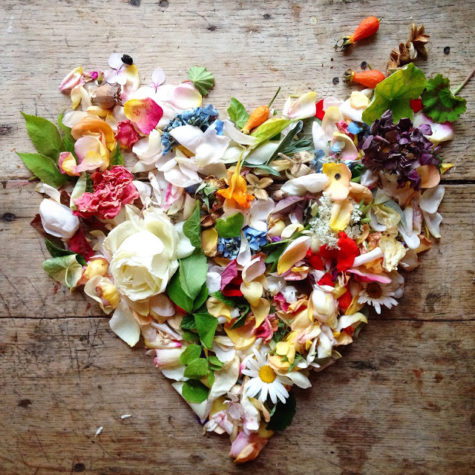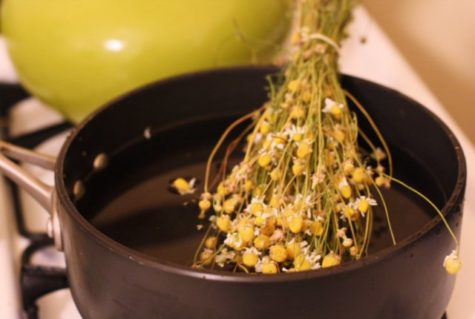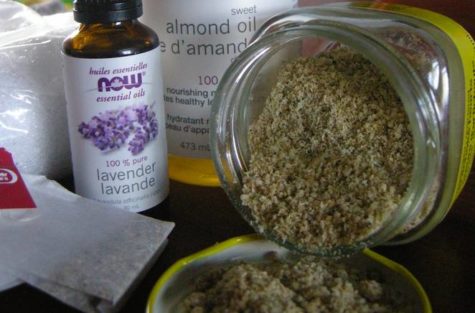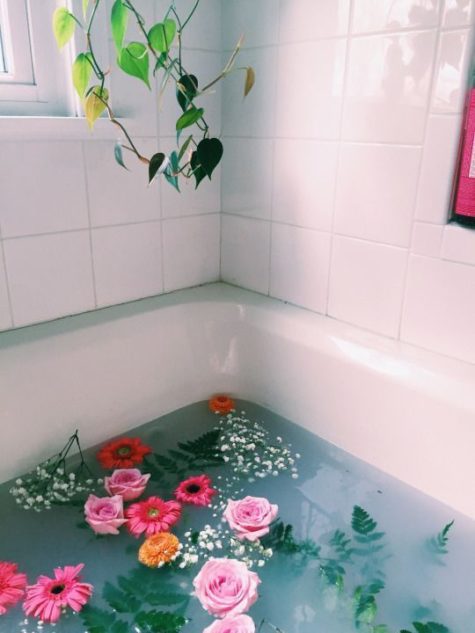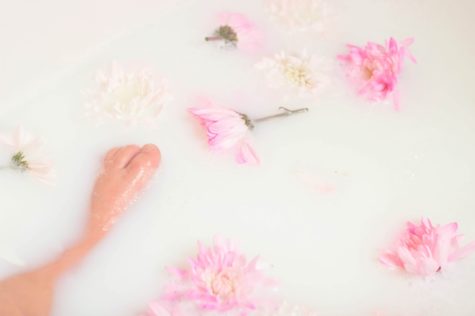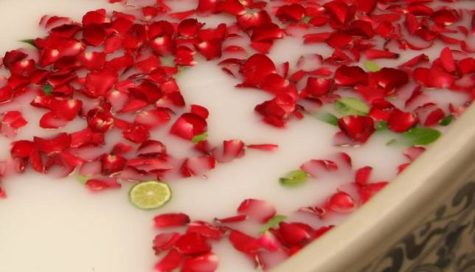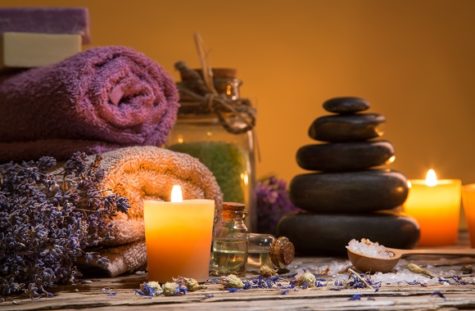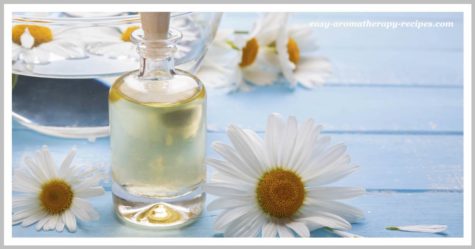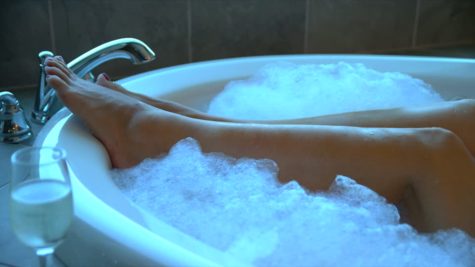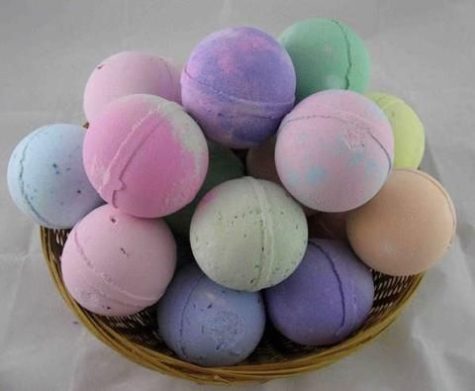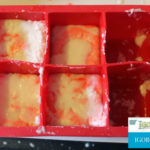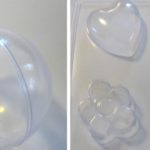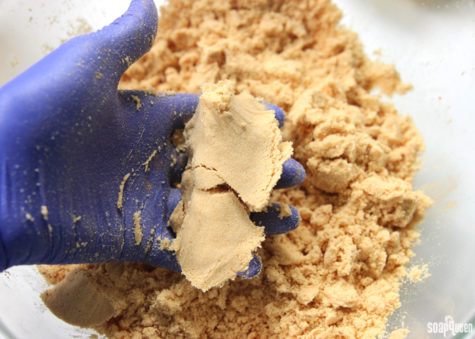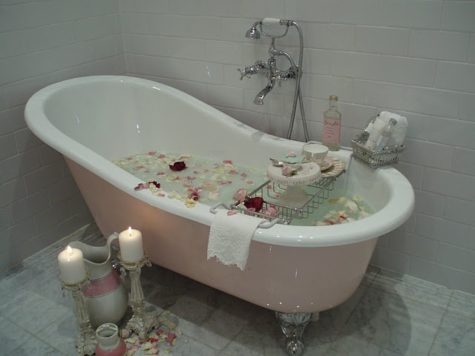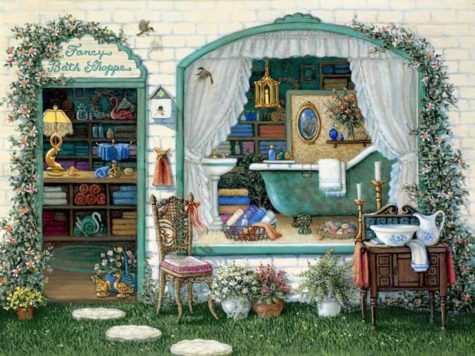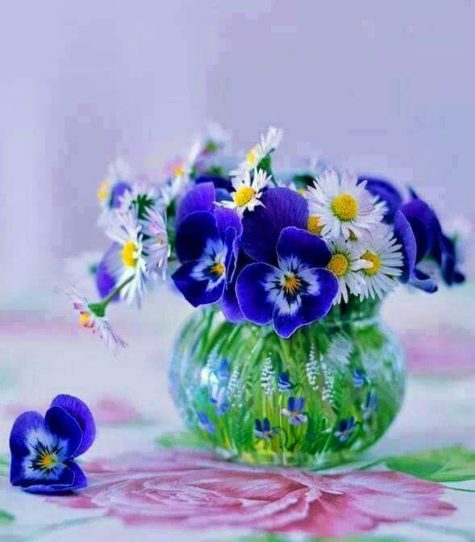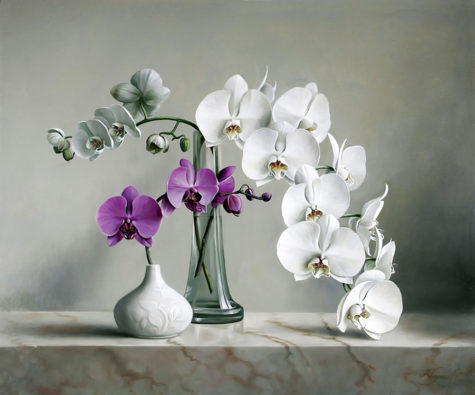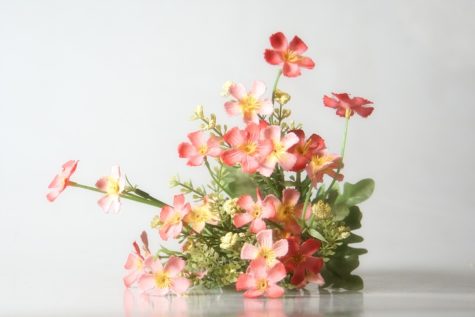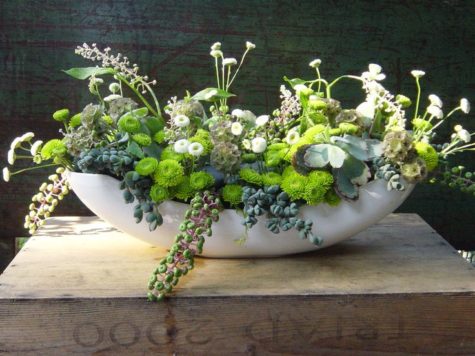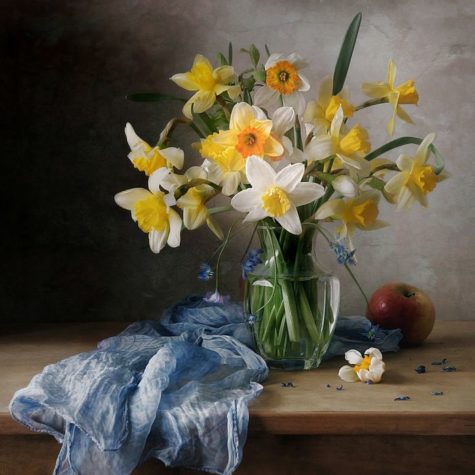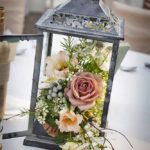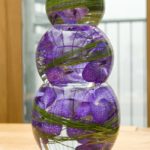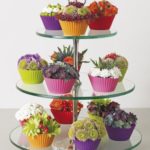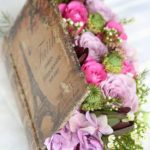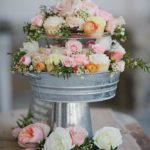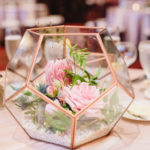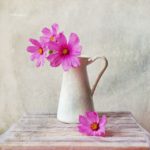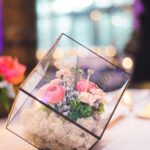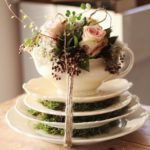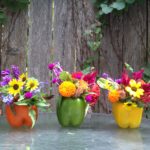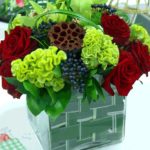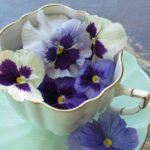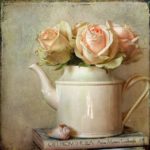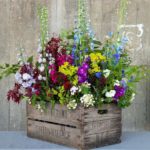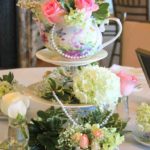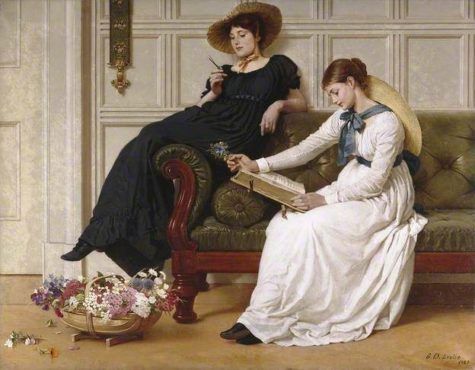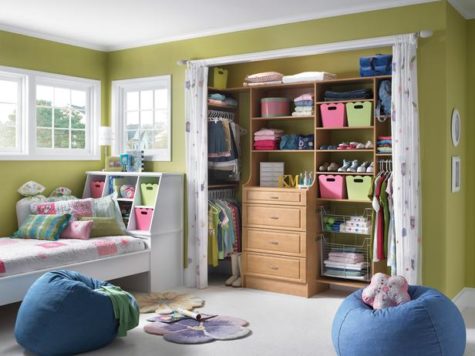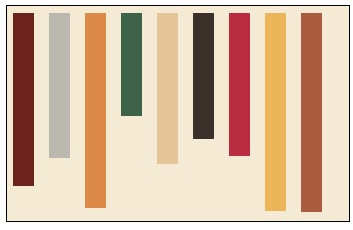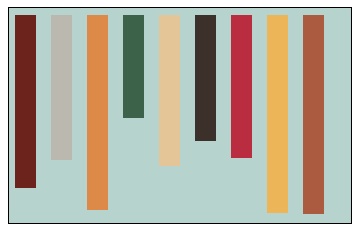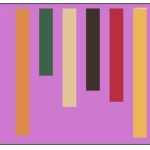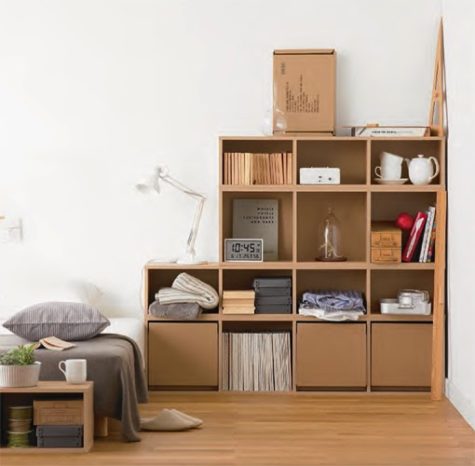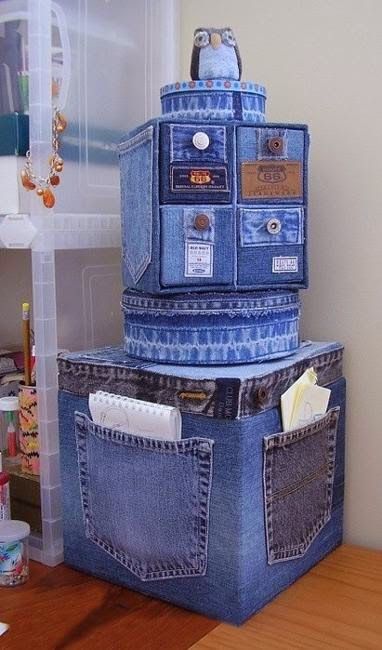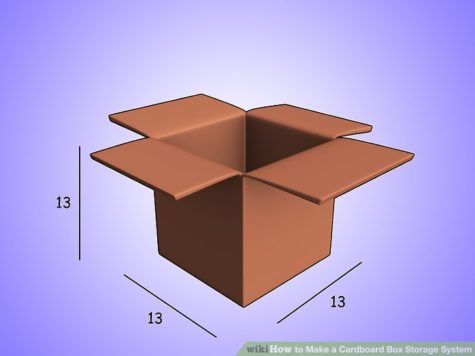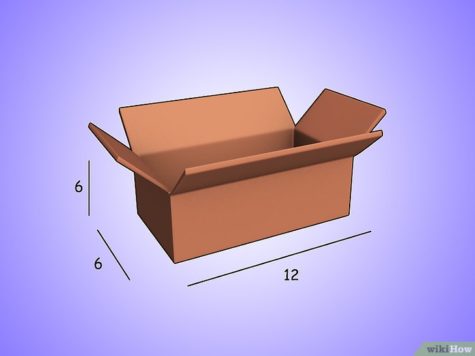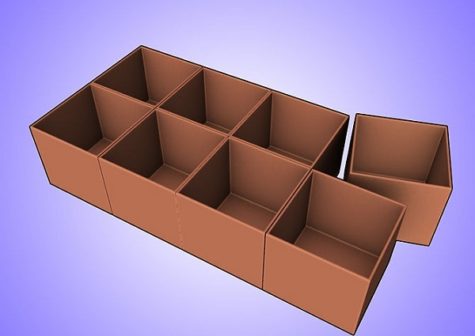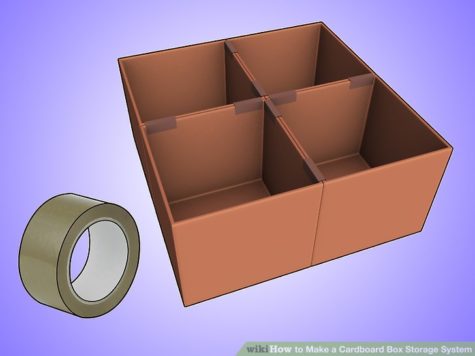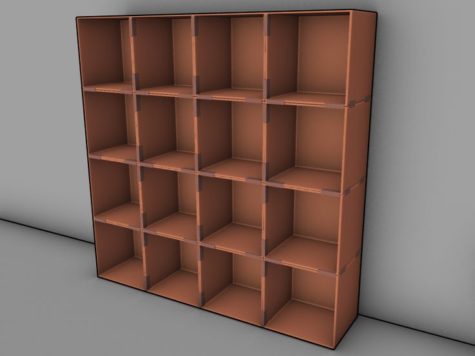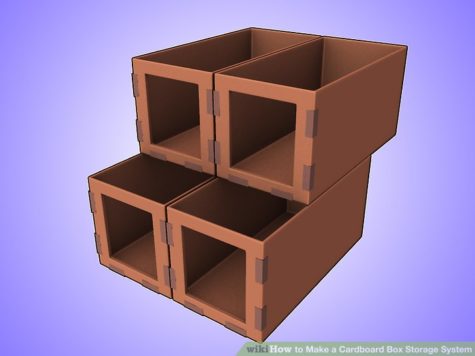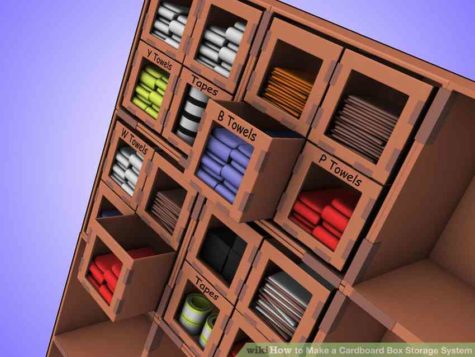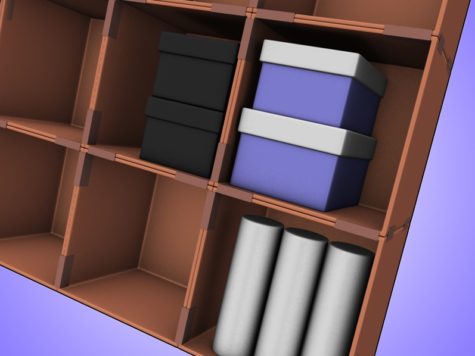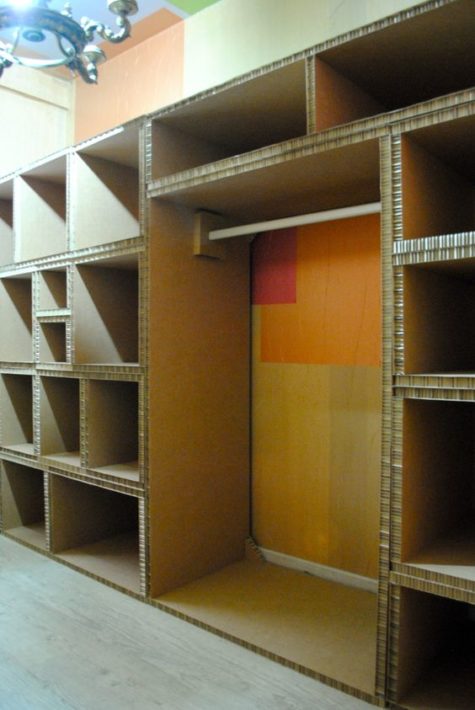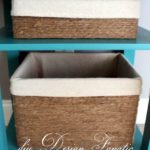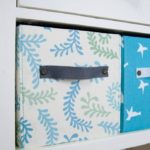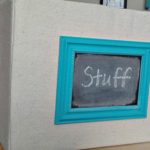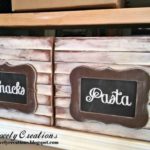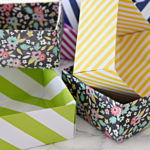DIY
It’s A DIY Roundup
There was so much information packed into each of our Living As If… project posts, and it occurred to me that going back to find a specific how-to might be more than a little bit challenging! So I thought it would be a good idea to provide the images as a sort of DIY gallery and sneak peak.
- From our post: Deliciously Aromatic Cleaning Products
Recipes for cleaning products that not only do a good job of cleaning, but also are easy, inexpensive, and smell great!
- From our post: Let’s Clean Up Our Act
This wonderful little printable list makes all those overwhelming household chores seem easy by putting it into a schedule that makes sense.
- From our post: Getting Mugged
In this post, we explored how to decorate mugs using sharpie pens. There is a detailed how-to and a bunch of useful tips from people who have tried it.
- From our post: Leave Your Troubles At The Door
This post is all about leaving your troubles at the door, and one of the things we learned was how to make a dream catcher with a doily and an embroidery hoop. Super easy… and it looks great!
- From our post: Out Of The Closet
We cleaned out our closets, and then found a boatload of cool ways to upcycle all of our old t-shirts, jeans, sweaters, and yes… even flipflops and crocs. This post is loaded with ideas and how-to’s.
- From our post: Back In The Closet
This post was all about how to use cardboard to easily and cheaply create sturdy, practical, and usable storage spaces in your home and closet. Lots of great ideas here!
- From our post: Tea and Crumpets
This post features a recipe for crumpets, and a tutorial for making a great pot of tea.
- From our post: Luxuriously Delicious Ideas For The Bath
This post was jam packed with ideas for the bath, recipes, and how-to’s. Among other things, we learned how to make bath bombs and milk baths. There is a bunch more on the post itself.
- From our post: For A Well Organized Kitchen
These are some super cool printable ideas for kitchen organization.
- From our post: Almost A Vacation
In this post, we learned a very easy way to make a super simple hammock. Plus we discovered an amazing recipe for a picnic basket pie!
- From our post: Let’s Go To The Opera
A great recipe for opera cake! Looks super yummy if anyone has the courage to try it!
- From our post: Clean and Clear
A detailed how-to all covering ways to easily clear the energy in your home.
- From our post: Refurbishing The Dining Room
Ranging from making cool embossed tin (or aluminum) ceiling tiles to how to re-cover a dining room chair. The diy projects in this post were all about creating a super cool dining room.
- From our post: Let’s Go Outside
As part of this project we explored outdoor fire pits and also some cool fountain ideas… along with a bunch of other cool and interesting stuff.
- From our post: Letting The Outside In
These are some of the visual tutorials on making cool beaded curtains, and a couple of other things as well. The ones shown here are pretty complete in and of themselves, but there is a step by step tutorial on how to make a beaded curtain in the post.
- From our post: Is it nap time?
This post was all about getting a good night’s sleep, and included a cool LED optical fiber ceiling project. It’s not a step by step how-to, but it does give the basic idea of what’s involved.
- From our post: Come On In and Have A Seat
This post was all about the furniture, covering it up, reupholstering, and also painting it. Here is a collection of the how-to images. I didn’t include them all, just enough to give an idea of what’s involved. For the complete tutorials, you’ll have to visit the post.
Clean and Clear
Everyone likes fresh, new and vibrant energy. When you understand the importance of space clearing for good feng shui energy in your house, you might wonder how can you actually space clear your home without too much time and hassle.
Space clearing is easy and very enjoyable, especially once you get into the habit of it. Ideally, you will have at least one major feng shui space clearing session a year, and then simpler versions of it weekly or monthly.
- Difficulty: Easy
- Time Required: 15-20 min
Find a window of time when you will not be disturbed, ideally right after the house has been cleaned. Be sure you have easy access to all the required space clearing materials.
- Candle or candles
- Natural Incense
- Essential Oils Mist
- Sage Smudge Stick (optional)
- Music (optional)
Gather your materials on your dining room, or any other suitable space, ideally in the center of the house. Light the candle and the incense.
Use the essential oils airspray, or the sage smudge stick to go around the house in a clockwise motion and purify the energy. Pay special attention to the energy in the corners.
When finished, come back to the center and purify your own energy a bit by either misting your body with essential oils or letting the sage smoke purify your field.
Let the candle and the incense go out on their own. Take a moment to connect to your home and feel the difference in its energy. Yes, it is that easy.
- Tips
At times, consider adding some elements of the deeper feng shui space clearing session to your daily or weekly routine.
It is always good to do the feng shui space clearing sessions in a calm and clear state of mind, so as to be able to perceive the subtle energy shifts in your home.
Feel free to modify and change your space clearing sessions, and make absolutely sure you enjoy them! Once you start enjoying the space clearing process, you will use it more often; your efforts will result in fresh and clear energy for you and your home.
At the beginning, you might have to schedule specific times for your space clearing sessions. However, as you get more comfortable and skilled at doing space clearing, you will notice you can just do these sessions “on the fly”, so to speak.
Whenever the energy in your space feels stagnant, low, or even negative, you can quickly reach for your space clearing supplies and refresh the energy in no time!
Major space clearing ritual
In feng shui, it is recommended to do a deep space clearing at least once a year. It is also recommended to do space clearing after an intense negative event, such as a divorce, for example, or before moving into a house that might have many negative energies (as in a foreclosure house.)
Don’t let the word “major” scare you. Just read to understand the principles and basic methodology of a deep space clearing session and see if you can do it. Maybe you would like to change some elements, or modify and omit some steps. Experiment and see what works, but do not avoid the process completely.
- Difficulty: Average
- Time Required: 45 min to 1 hour
Step # 1. Think of best timing, plan and prepare for your feng shui and space clearing session. Find the best day and time when you will not be rushed or disturbed. The optimum time for a feng shui space clearing session is in between 11 am and 1 pm. Do not start later than 3 pm.
Step # 2. Be sure you have all the materials you need (listed below). Also be sure to prepare a spot that will center the energies – an altar – on which you will place all the needed space clearing tools. This can be your dining table, or the fireplace mantel, or something similar with easy access to it.
- CANDLES: Several (at least one for each room plus the altar)
- SOUND/MUSIC: Uplifting, healing
- BELL(S): Ideally two or three with different resonance
- SAGE: A smudge stick is ideal
- INCENSE: Frankincense, or Nag Champa, or Sandalwood
- ESSENTIAL OILS: Lavender and/or Mint, Lemongrass
- HIGH ENERGY ITEMS: Fresh flowers, crystals, specific images, etc.
Step # 3. Be sure you feel balanced, be sure your energy is calm and clear. See what works best to put you into the right frame of mind: it might be an early morning walk in the woods or maybe a yoga class. You decide.
Take a shower right before the space clearing session, and be sure to wear fresh clean clothes.
Step # 4. Do your best to set up your altar as a beautiful, inspiring energy spot. The very minimum for a feng shui space clearing altar are candles and incense (purifying Fire element) and fresh flowers (Wood element).
The other three feng shui elements can be presented as following:
- Water as a small bowl with pure water;
- Metal as a clear glass candleholder, plus the metal bells used for space clearing;
- Earth as natural rock crystals.
Use your sense of beauty while creating your energy spot – the feng shui space clearing altar. Do not fret over the rules, experiment and see what works for you.
Step # 5. Turn on the music and place at least one candle in each room. Try to sense the energy in each room and connect to it. You can also go into each room with your incense stick to spread the gentle sweet scent in preparation for the session. Be sure to have at least one window open to allow stale energy to leave and fresh energy to enter.
Now you are ready to start!
Step # 6. Roll up your sleeves (you will sense the energy better this way) and do the following: starting at the main door and moving clockwise, clap strongly into each corner of your house. A clap from the lowest level to as high as you can reach to the ceiling. You will feel a huge difference in the quality of energy as the sound of clapping will be different depending on the accumulated energy.
Be sure not to omit any corners in your house, and be sure to clap as much as necessary; some house corners will require more time.
Continue clapping until you feel a clear difference in the sound (it will feel more crisp and clear when the energy is cleansed). When finished, be sure to wash your hands up to elbows in cool water.
Step # 7. Use your sage smudge stick on the same pathway around the house to purify any energy residues. Be careful not to stain your furniture or flooring, be mindful that the sage ashes can burn fabric or slightly damage the floors.
If you prefer not to do smudging/use the smudge stick, use an essential oil spray with sage or any other purifying essential oils, such as lemongrass, for example, or sandalwood and cedar.
Choose the best oils from what is available to you. Spray the essential oils around the house, especially in the corners. Personally, I like to do both the smudging and the essential oil steps.
Step # 8. If you decided to use bells, now is the time to ring the deepest sound/vibration bell into each corner, and wait slowly for the sound to really penetrate the space. You can ring a couple times in each corner, going in the same clockwise fashion. Then use the next, higher vibration bell(s) in the same way, waiting for the sound to completely dissolve until you ring again.
Take several deep breaths and do it slowly. The lightest vibration bell will feel like the sweet sound of faeries; this is the time to focus on spreading the good wishes for your home and infusing it with positive energy.
Step # 9. Technically, this is it! You’ve done the basic steps of a deeper feng shui space clearing session. There might be a lot of information about the house coming to you during space clearing, take the time to process and honor the info. Do not rush to finish the session, let the music still play for a while and let the candles and the incense burn on their own accord.
Just be in that clear space and see what else comes up. Maybe your living room needs more attention, or maybe it’s your front door. Pay attention. If all is well, then make yourself a nice cup of tea and enjoy a job well done!
I hope you enjoy the process of space clearing, and I know you will definitely enjoy the results!
Feng Shui Energy Tips for A Successful Space Clearing Session:
- Do not overdo the session and do not try too hard.
Your goal is to feel out the energies and purify your home. You might not do it perfect for the first time, but you will sure gain a greater awareness of the energies in your home. Be honest, be real and enjoy it; it is a beginning of a whole new level of awareness for you.
- It is Ok if you feel you have to do another session soon
There is no such thing as “too much” of space clearing. Again, feel free to experiment and try it as many times as you think it is necessary to purify the space; until you find your style and everything clicks, so to speak. You will have more confidence after you have done space clearing several times, as well as a know how often your house needs to be space cleared.
Source: The Spruce
Come On In And Have A Seat
Today, it’s all about the seating. My living room furniture is the most poverty stricken area in my house with the exception of the bathtub with the missing faucet. I have been looking forward to exploring what can be done about it ever since the beginning of this particular project.
When we cleaned out our closets, I got really excited about all the cool stuff that could be done with blue jeans, and it occurred to me that it would be really fun to recover my sofa and chair with old blue jeans. For example:
Pretty cool, huh? And, sadly, it’s going to be complicated… and require courage, a sewing machine, plus a learning curve of unknown proportions. But it’s something that I want to try to do, so with that in mind, here are a variety of tutorials on how to recover sofas and chairs.
Let’s start with the easy stuff first. There are a number of tutorials for covering sofas and chairs with drop cloths. The biggest expense here is the drop cloth. On the up side, drop clothes can be dyed in a variety of cool ways, and if you were so inclined, you could even make curtains to match. Doesn’t look too difficult.
The simplest way is to just do a simple cover up by tossing the drop cloth over the couch. Voila! Even better if it has been dyed and decorated and looks super cool. The following tutorial is from Home Talk, and it shows how to stencil and dye a drop cloth to make curtains. I don’t see why this method couldn’t also be used on a throw for your couch.
Stencil and Dye Your Own Drop Cloth Curtain
We take a look at a wonderful DIY project by Stephanie Jones. She shares how she took a regular canvas drop cloth and gave it some stenciled style and color with Chalk Paint® decorative paint by Annie Sloan. She says: “I wanted to add a little softness, warmth and boho pizazz to a less-than-lovely window at our studio.”
Stephanie started by washing and drying her 4×15 canvas drop cloth. You can easily find one at your local hardware store. This step helped soften up the fabric, which allowed it to more easily take the Chalk Paint dye she would use later on.
Using Old White Chalk Paint, a roller and a large Moroccan-inspired stencil, Stephanie, along with her team of helpers, stenciled an allover pattern onto the drop cloth. To help everything stay in place as they worked, they smoothed the drop cloth onto a flattened-out box that had been spritzed with low-tack adhesive.
“To avoid seepage, don’t forget to off-load excess paint from the roller onto folded paper towels before rolling,” notes Stephanie.
Since the look she was going for was a bit faded, she chose to stencil before dyeing; however, if you’re looking for a crisper, brighter look, you’ll want to stencil after dyeing.
Next, she mixed Florence Chalk Paint® with a little bit of Provence Chalk Paint® and poured it into a large plastic tub filled with water. Stephanie used a mix ratio of 1 part paint to 20 parts water and let the loosely bunched drop cloth soak for about an hour.
Once finished soaking, Stephanie hung the drop cloth on a clothesline outside to drip-dry overnight. She then used a steam iron to soften it.
When all was dry and ready to hang, Stephanie draped the finished drop cloth over a plumbing-pipe curtain rod and scooted it to the side to hide an awkward corner in her studio. Voilà – hardware store chic!
If you don’t like that loose look, or if you’re already covering up your sofa like this, and want something a little more permanent looking, here’s a tutorial on how to make a loosely fitted slip cover (once again using a drop cloth).
Cover A Sofa With No Sew Drop Cloths
Here’s a simple tutorial from A Beach Cottage:
- Buy the biggest drop cloths you can find and then cut them up, you get more bang for your buck this way
- Take all the cushions that you can off of the sofa
- Lay your drop cloth over the sofa seat area only and roughly estimate what’s the best way to cut the drop cloth fabric to best fit the seat area of the sofa double folded and with a big enough overhang to tuck and fold into the crevices of the sofa
For example: With the drop cloth I had I simply folded it down the middle and cut it in half giving me two pieces of double folded fabric
Important note: You want the fabric double folded because a single piece of fabric will slip around much more (ask me how I know this or ask a Beach Cottage kiddo if they sat on a sofa with a single piece of drop cloth and promptly the whole lot slid to the floor)
The amount of fabric you have to tuck in is key to it not slipping and sliding around when you actually want to sit on the thing.
- Cut your fabric – don’t worry about edging you won’t see that
- Fold your drop cloth piece so it is double folded, lay it on a table or floor and smooth it out and line up the edges…trust me do this bit.
- Lay this piece of fabric over the seat of the sofa, smooth, smooth, smooth
- Push and tuck, push and tuck- all the over-hang fabric needs to be squeezed tightly into the crevices of the sofa.
Note: this tight pushing and squeezing is what will stop the ‘cover’ slipping around and falling off when you sit on it
- Lay the other piece of fabric out and put the cushions on it, now wrap up the cushions like a parcel, leaving the bottom of the cushions with the opening of the fabric
- Place cushions on the sofa and then put your hands underneath and again squeeze and push the excess fabric in tightly so the fabric won’t move around too much when you sit down.
- Add texture to the arms of the sofa with crochet, knit or stripe, smooth and tuck this tightly into the sofa too
- Add lots of pillows and cushions in different shapes and patterns for interest and depth.
Your couch or chair will look better, and hold up longer under normal wear and tear if you put the cushions on top of the couch cover. Like this one from In My Own Style:
You can also add ties at the arms to give a more finished look. I don’t think it would be too hard to figure out how to add the ties, and the cushion covers are pretty easy too. The ones in the picture are made from a bed spread, and tied underneath.
- Here’s what she had to say about the cushions
“I am all about easy and a believer in what you can’t see can easily be faked. I found white quilts on clearance at the store I used to work at. I used them to make cushion covers. I sewed covers for the bottom cushions that are semi – boxed covers that are tied on with ribbon on the bottom.”
“Here is the underside of the cushion. The cover is more like a gently fitted wrap around cover. You can see I had to really scrimp on the amount of quilt fabric I had. I was determined to make it work. It is uneven, but no one sees it. I used these same covers with the old slipcovers I had on this sofa/chair. I have washed them many times and the ribbons and uneven edges don’t matter one bit.”
Alternatively, you could also make a “couch wrap.” This is a cool idea and a great way to keep a loose couch covering in place and looking good.
This is really super simple. The hardest part will be to figure out what to use for the heaver covering. Here’s a visual tutorial:
Keeping that pesky slip cover tucked in:
To keep a one-piece slipcover from moving and getting un-tucked, push cardboard tubes into the crevices to hold the extra fabric down. Here I used a long tube that fabric came on and a tube from a roll of foil. Both are more rigid than a paper towel tube. You may have to use different size tubes depending on how big your crevices are.
Push the tubes back into the crevice as far as they will go. If slippage is still a problem, you can wrap rubber bands around the tubes. The rubber helps to keep the fabric from slipping. You could also use PVC pipe.
To hold pleats in place or any part of the slipcover that won’t stay the way you want it – use twist pins. You can find them at any sewing store or online. These are clear plastic, but they also come in decorative shapes and finishes that look like nail-heads.
You just screw it into the pleat or fabric you want to stay in place.
If you have a small couch and a large fitted sheet, you could opt for this method. I like how simple it looks, and after a bit of research, I realize that it’s actually a stretchy pre-made couch cover. 🙁
That being said, I don’t see why a person couldn’t use a stretchy knit fabric, or even a sturdy fitted sheet and do the same thing. It would probably work even better if the bottom cushions were on top of the couch cover.
If you like this tailored look, you could make a fitted slip cover yourself. I have a great tutorial for that as well. It’s from Maggie Overby Studios.
A Blue Velvet Sofa!
It is no secret that I have a thing for blue velvet sofas. I have been drooling over them for a while now but guess what? I finally got my own, well sort of…
My blue velvet sofa is actually an Ikea Hack!
Here is what I started with, my 8-year-old mid-century style sofa with brown tweed upholstery. I love the straight lines of this sofa but what was I thinking buying a brown sofa? Oh yeah, that was 8 years ago when I had small children with grubby hands… Now I have big children with grubby hands but at least they understand when I say not to eat on the sofa. (If only I could get them to listen.)
After hemming a pair Ikea SANELA curtains for a client I had a bit of fabric left over, and I got the idea that this pretty blue velvety fabric might just work on my sofa. I ran a piece of scrap through the washing machine and was pleasantly surprised to find it washed beautifully.
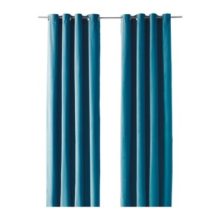 I’m sure your thinking why didn’t I just buy velvet fabric? Well, nice velvet is very expensive and the inexpensive options usually have a shine to them that just looks cheap. Also the nicer silk and cotton velvet (velveteen), needs to be dry cleaned. These curtains were machine washable, exactly what I needed.
I’m sure your thinking why didn’t I just buy velvet fabric? Well, nice velvet is very expensive and the inexpensive options usually have a shine to them that just looks cheap. Also the nicer silk and cotton velvet (velveteen), needs to be dry cleaned. These curtains were machine washable, exactly what I needed.
So my blue velvet sofa is actually a slipcover made from curtains in dark turquoise. They cost only $70 for two 55″x 118″panels, minus the grommet tops one pack gives you over six yards of beautiful velvety fabric. For my slipcover I used four panels (two packages) and had quite a bit of fabric left over.
When I started working with the fabric I also noticed that it has a bit of stretch to it, perfect for the tight-fitting slipcover I was looking to make.
This is not a slipcover sewing tutorial but I will give you a few personal pointers if you are considering sewing our own but have never sewn a slipcover before.
1. When fitting your slipcover, pin you fabric on the sofa inside out ( I like a tight upholstered look so I pin mine tightly.) Once pinned remove the slipcover and sew right along the pin line, removing the pins as you go. I do this in sections and keep adding on, usually taking the slipcover on and off several times as I sew.
Since I was using curtains I tried to take advantage of the hemmed edges. I ran the finished edges of the curtains along the bottom of the sofa it saved me the step of hemming the slipcover at the end.
If you want to take an extra step towards an upholstered look, add a strip of Velcro along the bottom edge of your sofa and slipcover so you can tuck the edges under for a tight fit.
This last tip is specifically for sewing velvet. Watch that you keep the direction of the velvet going in the same way whenever possible. Velvet will look dark in one direction and lighter in another. If you are not careful you may have one cushion looking like it is a different color than the rest.
The end results look like this… After a days work and $140 investment in fabric, I have my very own blue velvet sofa. Add few new pillow covers and I have a whole new look.
This seems like a fair amount of work, and would require a sewing machine, and I thought it might be fun to share a vision of the possibilities:
Ok, yes, that chair isn’t covered with a slip cover, but I think a person could make one that was similar. But what if your couch or your chair is a total mess and needs to actually be reupholstered? Then what? Well, if a trip to Craig’s List isn’t in your future, or if you’ve always wanted to know how to reupholster a couch or chair… hang on to your hats, because I have a tutorial.
It probably isn’t as hard as it looks. But it does have a certain fear factor, and I’m sure there’s a learning curve. So, before I share the tutorial, I’m going to share a gallery of some super cool upholstered couches and chairs. Hopefully this will get us over the hump and inspired to take on a challenge.
I love these, and with my idea for a blue jean covered couch in mind, I thought I might figure out what size the individual pieces would need to be, and then sew blue jean pieces and parts into appropriately sized squares of “upholstery” material. Here’s an example of what it might look like:
So, are we ready for the tutorial? I’m sure it’s way easier than it looks. The scariest part is that you have to take your furniture down to the bare bones… After that it’s just a matter of measuring, cutting, layering, and attaching it. Here’s a step by step tutorial from Do It Yourself Divas.
DIY Strip Fabric From A Couch and Reupholster It
I don’t exactly have $$ right now to buy the couch of my dreams, but lucky for me, my husband and I were able to reupholster this beauty. We found a living room set that included a large sofa, love seat, chair and a half, and an ottoman for $50. Engineer hubby and I totally transformed the sofa AND an ottoman for $200. We are going to go through the steps of stripping the fabric off of the couch and reupholstering the couch.
This proves that almost anything can become something new.
Use your imagination when finding the right couch. The diamond in the rough is usually really rough at first. So, look past dingy, pastel colored, floral fabrics and look at the general shape and structure of the piece to find the right candidate for reupholstering. Here are some things to consider when looking for the right couch:
Step back and look at the couch to determine how many “sections” you will be reupholstering. The “visible” sections for my couch were arms, back of back rest, front of back rest, sides (under arms), front bottom, pillows, and cushions. There were two “hidden” sections which included under the couch and under the seat cushions.
Typical upholstery fabric is sold on a large bolt that is about 54″ wide. Knowing this may help you estimate how much fabric you will need per section.
- Cost to reupholster.
A sofa can take anywhere between 12-20 yards of fabric depending on its size and shape. Keep that in mind when choosing fabric; things can get pricey. We used 16 yards on our couch.
- Is the structure sound?
Can I reuse the tack strips or any upholstery hardware? Will the feet need to be replaced or renovated? Are the foam cushions worn out or do they have plenty of body left? Is this couch more comfortable than a $200 couch I could buy new? Will any odors remain once the fabric and batting have been removed?
Our couch was easy to reupholster because the seat cushions and the pillows were detached. I imagine it would be harder to reupholster a couch that had cushions and pillows sewn onto the body of the couch, but I’m sure it can be done with a little determination.
You will need:
- Couch
- Heavy Duty Upholstery Fabric
- Inexpensive fabric to use in “unseen” places, i.e. muslin
- Staple Gun/ Staples
- Cereal Box Cardboard (we will explain later)
- Batting
- Spray Glue
- Zippers, thread, or anything else needed to sew cushion covers
- Any replacement items for worn out material, i.e. foam or feet
- Pliers
- Hammer
- Sewing Machine or a friend who has one
- Fabric Scissors (hands down, the best fabric scissors.)
- Measuring Tape
- Any other job specific tools
Here’s the criteria we used to find the right fabric…
No continuous pattern. Patterns, such as stripes, can be difficult to line up during reupholstering and may require more material to make patterns align.
Fabric with a sturdy weave. This may go without saying, but make sure to get a durable fabric that is meant for furniture if you want your legacy to last.
How much? Remember the sections I talked about? Measure the length of each section and add a few inches extra on each end so you have enough fabric to work with. It would be bad to not have enough, so measure a little generously. We didn’t have to worry about the width since 54″ wide fabric fit each section on our couch perfectly. As I mentioned above, we used 16 yards on our large sofa.
- Price point.
We are on a budget and the fabric had to fit within that budget, so we didn’t waste time looking at fabric above a certain price point. Our fabric was about $9 a yard.
Strip it down
Unfortunately I didn’t take a picture of the fabric on the sofa before is was ripped off. Hubby was anxious to get going and started ripping off fabric, batting, and foam, so to give you an idea of what it looked like with it’s original fabric, here is the love seat.
Here is the sofa all stripped down with the seat cushions and pillows set aside. Engineer hubby ripped off the fabric, the batting from the whole couch which he thought was holding in all the odors. He also removed the foam from the arms. When we realized that foam is really expensive, we salvaged the original foam and “Lysol-ed” it liberally 😉 All that remained of the couch when we were done stripping it, was the wood structure, cardboard on the arms, springs, the blue mesh material covering the springs, foam (foam not pictured), and metal tack strips.
In our case, the next step was to put the foam back on the arms. Foam only covered the front, sides, and tops of the arms. Sadly, I don’t have a picture of this so just use your imagination. I did however attach a photo of a roll of foam you can purchase. It’s called High Density Urethane Foam 1″x24″x30″.
Remember, any staple dimples or irregular shapes in the foam may show through when you cover it with new batting and fabric, so use spray glue on the back and try to staple it nice and evenly on the edges.
New batting stapled into place. You will notice some dimples caused by the staples, but these were not too severe and were easily smoothed out once the fabric was stretched over it. We used about 3 packages of 8oz batting that had been pre-cut for a queen size quilt. (10oz would have been better but it wasn’t in stock). You can buy it at Walmart.
Roughly cut it into pieces that cover each section of the couch. Sections meaning, front of arms, around each arm, front of couch, and back of couch. Just go for it, it doesn’t have to be perfect.
Notice the feet have been removed. Also notice all the yucky stuff that came out of the couch when it was stripped. Among the “treasure” was 75 cents, “the lost sock”, cocoa puffs, the top hat from a Monopoly game, and much more.
We first attached muslin over the seat cushion springs/base (see finished product below).
Locate areas on the frame of the couch where you can staple the muslin. Cut muslin to fit. Be generous and give yourself plenty of fabric to work with.
Use the cardboard trick, described two paragraphs below, along the front edge of the couch in order to hide staples and give a uniform edge.
Fold the muslin over the stapled cardboard strip and tuck under the arm and back.
Pull the muslin tight and staple to the frame. You will be working under the couch at this point in order to staple the muslin to the frame.
Drape a large piece of fabric over the arm of the couch and staple in the joint. Notice how we have a lot of extra fabric hanging off the front and back of the arm. That fabric will be folded into a fan later on.
Use the cardboard trick to attach the fabric to the front of the couch. The cardboard makes it so you don’t see any staples and you will see how.
- Place the fabric “right side” to the muslin and a couple inches away from the edge of the couch.
- Cut a few strips of cardboard (cereal boxes work great) about 1/2″ wide and as long as the couch goes.
- Staple through the cardboard and the edge of the fabric into the wood frame.
Flip the fabric over and you have a nice, clean, finished look for the front part of your couch.
Staple the fabric to the bottom. Wrap and staple the fabric around the sides of the couch about 5 inches.
Notice the front bottom piece. It is tightly secured with staples, no raw edges showing. The back fabric piece is just draped over the back for fun at this point; the next step is to work on the arms again.
Arms. This is the trickiest part.
- Start from the outside of the arm and work your way up, around, and down creating small folds.
- Staple as you go; you can always pull the staples out and readjust.
- When you get close to the end, fold the fabric under to give it a clean finish and staple in place.
- Don’t staple on the front of the couch, just pull the fabric tight and staple it in place on the sides of the couch.
- The fold at the bottom of the arm should cover the fold you made earlier on the front bottom piece.
Trim away bulky fabric as needed. Notice where we stapled. All these staples will be covered by the side fabric piece.
Move to the back of the arm and follow the same process creating a fan with the extra fabric.
We applied a little bit of super glue behind the small fan folds to keep them in place. So far so good four months and three kids later!
Here is an overview of what you will be doing to attach the side piece. Notice the order.
- First, use the cardboard trick to attach fabric under the arm curve.
- Second, staple fabric around the back of the couch and staple in place.
- Third, use a tack strip to secure fabric in place on opposite side. This little strip of metal allows us to create a finished edge much like the cardboard trick.
- Along the edge, push tack strip through the back of the fabric.
Fold it over so that the back of the tack strip is against the back of the fabric.
Hammer the fabric and tack strip into place along the side. Wrap and staple bottom edge of fabric onto the couch.
This is what the side should look like finished.
Attach fabric to the “front” of the back rest.
- Use cardboard trick to staple fabric in place along the top of the back frame.
- Flip fabric over to the front of the couch, pull it tight, tuck in bottom, and staple to frame. Make sure the “right side” of your fabric is showing once you flip it over.
- Fold under raw edges on the sides and staple to frame from behind the couch.
Add back piece.
- Use the cardboard trick along to top of the back. Flip fabric over.
- Begin working on the bottom.
- Wrap bottom fabric under couch and staple. The staples under the couch will be covered by muslin later.
- Then work on the sides of the back piece using tack strips. All staples should be hidden.
Here is a closer view of the back rest so you can see more clearly what we did and where we used the cardboard trick. Notice that the “front” back piece actually wraps over the top and down the back of the couch a few inches. Then the “back” back piece is stapled on top of the “front” back piece.
Attach the muslin to the “unseen” underside of the couch. No need to make it look pretty. Just cut a piece to fit the bottom and just staple it on. Start on one side and work your way around. Then attach the feet.
Here are the feet Engineer Hubby designed and made since we didn’t like the original feet. We really liked the blonde look, but you could always stain them.
We added the center block for extra support.
Wrap cushions in new batting as pictured.
Use spray glue to secure the batting to the foam cushion. Now for the cushion cover… I used THIS tutorial.
How to Make a Cushion Cover
Start with these four pieces:
- The two main pieces-top and bottom of cushion
- The middle band
- The zipper piece you created from this zipper tutorial
To get your top and bottom of your cushion, set your actual couch cushion on top of the fabric you want to use and trace around it with a fabric pen. Then cut it out, about a 1/2-1″ out from the line you drew (for your seam allowance and piping.) Cut two.
Note: If you are tracing an asymmetrical piece you will need to make sure that you keep the RIGHT sides opposite. To sew piping onto your fabric, follow this piping tutorial. The middle band you create by measuring the height of the cushion (for the width) and the perimeter around, minus the zipper length. Give yourself several (like 5-6) extra inches tacked onto the perimeter.
I’m not going to share the whole tutorial here, but I think this will give a basic idea of how to do it. The full tutorial can be found at Honey Bear Lane.
The finished product looked like this:
Make Pillow Covers.
I made simple envelope pillow covers so I didn’t have to sew on a zipper. I used this tutorial from Make It Love It.
I didn’t want the corners of my pillows to poke out, so I just sewed them down into the form.
All done! I promise this look isn’t too hard to achieve. Just have patience and always over estimate on your fabric so you have enough.
Wowsers! Well, if that looks too complicated, you could always knit something!
Knitted upholstery !!
Your cat will love it, I promise! LOL! Here are some more knitted sofa and chair covers just for fun:
Or You Could Just Paint It!
Here’s a video about how to paint a velvet sofa and keep it soft! If your sofa or chair is in decent shape, and still comfortable, maybe this is a viable option!
And yes… it’s true! You really can paint your upholstered furniture!
Painting velvet requires more patience than painting other fabrics. Maison Decor gave the chairs three coats of paint. They watered down the paint slightly by using a wet brush and spritzing the velvet lightly with a water bottle mister. Watering down the paint helped it spread evenly. Amy explains that watering also kept the fabric from soaking up too much paint, which can lead to cracking.
“The nap of the velvet needs to have the paint worked into it, but not so as to disturb the way it lies,” Amy adds.
Following the three coats of paint, with drying time in between coats, Amy and her team sanded the surface with 600 grit sandpaper, which helped restore the fabric’s smooth feel. Then they waxed the upholstery, which created a smoother finish and protected the chairs.
Amy explains that she used a 50/50 mix of Annie Sloan’s Soft Clear Wax and odorless mineral spirits, and applied the mixture with a wax brush. They waxed in the direction of the nap, wiping away excess. The key element was allowing the wax to dry completely, which required three weeks.
As for people skeptical of sitting on waxed velvet, Amy assuages any fears. “Often people ask, can you sit on a waxed chair? Won’t it come off on your bottom? The answer is no!” She attests, “In our house we have a pair of painted and waxed chairs in our dining room, and it’s been two years now of daily use with no wearing off of paint or wax. Now that’s something I can feel comfortable recommending to everyone.”
Ok… I think that’s about enough of that!
Letting The Outside In
 The Ultimate Guide to Window Treatments
The Ultimate Guide to Window Treatments
Whatever style of home you have, windows are one of the first things you notice and the way you treat your windows creates an ambiance which enhances your particular style. Window treatments are simply swaths of material, arranged or draped or pleated over an opening to the outside, a space waiting for you to unwrap!
- Creative Window Treatment Ideas
The sky is the limit with how creative you can get with your window coverings. Literally put any design you want on a shade—a photograph, a logo, or your art. A print-on –demand program provides you this outlet for a totally personalized shade that creates a memorable picture from your own photograph gallery, or design a menu or logo or capture any moment in time to view everyday.
Here are some ideas using ribbons and scarves:
If you’re the DIY type, you can get cracking at your own stitched or no-sew drapes or roman shades. Add ribbons, cloth tapes, iron on hems, bows, ruffles, contrasting fabric with trim or sew together vintage scarves, tablecloths, napkins or stencil away with your favorite shapes. Your imagination is only a shade away.
- Elegant Window Treatment Ideas
To achieve a graceful look on windows usually starts with your fabric choice. Roman shades and drapery are a no-brainer here. Softness, layers and deep, decadent folds are the key.
Oversize drapes that hang floor to ceiling are particularly elegant since they make your room appear to have higher ceilings. You can also easily add a shade behind the drapes to give the layered effect. Bonus points: use different textures and colors on the layers and your elegance factor shoots up.
- Unique Window Treatment Ideas
It’s time to get out of the boring blind and shade funk of thinking you can only do a neutral, blah window covering. Get unique and think top down bottom up shades that let you decide when and how much light to let in from above and below the shade.
Check these out:
For unique drapery ideas, I suggest holdbacks, jabot corners, drapery swags or dual material drapes either in color-blocking or wide stripes. Or, if you want off the beaten path blinds, think mirrored, etched glass, leather (yes, really) bulletproof (yes, also, really), or have any design your heart desires printed on a shade.
You can also use blinds and shades in other places besides the window. Think room dividers, inside awnings in alcoves, canopies around beds and focal points behind headboards.
- Inexpensive Window Treatment Ideas
Window treatments don’t need to leave your pockets empty with no change for your morning latte. Lots of inexpensive choices can perk up any room with a little knowledge and ingenuity. Mini blinds are a popular and reasonably priced option. Mini blinds are easy to install and are available in endless colors and textures and are often the first choice for many of us who want a “no nonsense “ window treatment, simple, plain and goes with everything.
Vertical blinds are another economical choice, but offer a bit more variety. For a traditional, clean look, roller shades fit the bill. They are usually made from vinyl or polyester fabric, come in various patterns and colors. I call these, “rollers”, as they are simple window treatment and you don’t have to be “rolling in money” to afford them. If you are looking for a more modern look for your home, try cellular shades.
For those with a do-it-yourself attitude, get your sewing machine, staple gun, and fabric ready. Make easy, inexpensive curtains with your favorite fabric (a sheet, YES, I did say that, or a tablecloth offers more whimsy). Just measure and hem one end big enough for a drapery rod.
Decorative window film looks especially hip on paneled windows and doors and is perfect for renters or those who like to redecorate their space often, since the film can easily peel off if needed. Voila! You now have custom and inexpensive window treatments that are uniquely you.
Your window treatments do not need to have a cookie cutter look. Add your own style and be creative with curtain rods, tie backs, and valances. These little finishing touches can make your windows quirky or quiet.
A Look At Window Treatments:
Window treatments are divided in 3 categories:
- Hard window treatments are made of hard materials like wood or vinyl. Such as: shades, blinds and shutters.
- Soft window treatments: anything made of soft materials such as: sheers, curtains, drapes, swags, valances, roman shades – from flat to hobbled styles.
- A combination of both is called a layered window treatment.
Treatments applied to directly to the glass include:
- Frosted glass
- Smart glass
- Stained glass
When looking at the different types of window treatments, remember that child-safe features including cordless and motorized operation are available for all categories.
Before you make a choice about which window treatment to use, consider what you will be doing in each given room. Whether you are sleeping, playing or cooking, you can customize your shade to match your style and provide all of the functions you need.
- Austrian shades
Fabric shade that is gathered in scallops when down and pulls into tighter scallops when raised. It has a touch of luxury. Can be made out of different materials including sheer fabric.
- Beaded Curtains
For a colorful hippie style look, beaded curtains are a great way to dress up a small window. Made from beads of all shapes, sizes, and materials, beaded curtains are simple to make and will add artistry to your room. They can get pretty expensive to buy, however. Luckily, they are fairly easy to make. Best of all, you can customize your curtains by choosing what color, size, and shape the beads are. You can even choose what material they are made out of!
How to make a beaded curtain:
Here is a nice little tutorial from WikiHow. It starts with a how to on making your own curtain rod. I’m going to assume that we can figure that part out.
You will need:
- Fishing line, or something to thread your beads onto. Fishing line is nice because it is clear, sturdy, and easy to use.
- Scissors
- Measuring tape
- Beads – lots and lots of beads
- Rings to hang the strands of beading on.
- Curtain rod and related hardware
Alternatively, you could drill holes in a yardstick size piece of wood. Either way, you’ll need something to hang your strands of beads on. In which case, you will not need the rings. Here’s a visual on how that works:
If you are using a curtain rod, hang the curtain rod first. Hanging the rod before you bead will allow you to determine how long your curtains will be. It will also keep the strands from getting tangled while you work on them.
Measure and cut your fishing line.
Measure how long you want your curtains to be, starting from the top of the curtain rod. Double your measurement and add 12 inches to it. Cut your fishing line accordingly. You are cutting your fishing line twice as long because you will be folding it in half and inserting two strands inside each bead. The extra 12 inches will allow you to finish off the curtains.
Cut and work on one strand at a time. If you cut too many strands at once, the fishing line may turn into a tangled mess.
If you don’t have any fishing line, you can also try using strong, sturdy thread, colored string, or even wire. Whatever you decide to use, make sure that it is thin enough to go through your beads.
Tie the fishing line to a ring.
Find the center of your fishing line, then slip it through the ring. Tie 2 to 3 knots beneath the ring to keep the fishing line secure; you can also use a slipknot instead. Make sure that the fishing line is centered, and that both strands are the same length.
Work on one ring at a time. Hang each ring onto the rod as soon as you finish it.
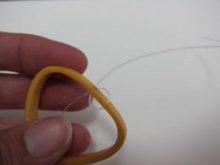 Note: If you are opting for the alternative method, the strand of beads will be attached to the wood hangar last instead of first.
Note: If you are opting for the alternative method, the strand of beads will be attached to the wood hangar last instead of first.
String on one bead at one end. This will be the last bead of your first strand. Make multiple loops through the hole of the bead and tie a knot to secure it. Start your first strand.
In case you’re wondering, this is the finished beaded curtain in the alternative method. She uses large wooden beads of various shapes and colors, with rings at the end.
Get some beads.
You will needs lots of beads, more than you think you’d need. They don’t all have to be fancy glass beads; they can be plastic, wood, or even homemade. You could even take apart costume jewelry, and use the beads from that. The funkier the beads are, the better!
Colored glass beads are wonderful for this project because they are translucent and catch the light well. If you are using colored string, consider using clear beads for a cool effect.
Consider getting some 2-hole beads for the end of your curtain strands. You will one 2-hole bead for each strand.
Start stringing your beads.
Take your first bead, and thread it onto the fishing line. Make sure that you are putting the bead through both strands of fishing line. Pull the bead all the way down to the split ring, and add the next. Keep doing this until you have about 12 inches of string left.
Your beads don’t all have to be the same size. Play around with different patterns. For example, you could use mostly small beads on your curtain, and use a large, chunky bead every couple of inches/centimeters.
Add a 2-hole bead at the end.
This time, put one strand of fishing line through each hole, and tie them together. Tie about 3 knots under the bead, then bring the ends of the fishing line back through the holes. Thread the strands back through the first couple of beads, then trim them off.
If you do not have any 2-hole beads, use a larger bead instead. Turn the bead so that the holes are pointing to the side instead of up-and-down. Take one strand of fishing line, and pull it through the left hole. Take the other strand of fishing line, and pull it through the right hole. Tie the knots above the bead.
If you are using the alternative method, tie the beads to the wood, loop the excess open end of the fishing line around the wood four or five times. Make a knot between the wood and the first bead. If you used precut holes in your wooden hangar, run the fishing line up through the holes, like you would with the last bead, one through one side, and one through the other, and then tie them off.
Tying the knots.
Consider placing a drop of superglue over the knot. This will make it stronger and less-likely to slip. Now run your excess fishing wire back through 4 or 5 beads and snip to make it disappear.
The knots are the trickiest part, especially when they are at the bottom of your strand. Here are a couple of pics to help visualize how to tie them:
Hang the beaded strands.
Hang the strand on the curtain, and start on the next one. It may sound like a lot of work, constantly getting up and sliding the ring onto your curtain rod, but it will help keep your work from getting tangled.
If you are using the alternative method of tying the strands to a wooden hangar, you will need to be careful and organized to ensure that the strands do not get into a tangled mess. Working on a table with a thick fabric (like a towel) underneath will help.
Design elements
Play with symmetry and figure out your pattern. If you plan on making a ∧ or a ∨ shape, making 2 strands at a time in the same length is more time efficient, and can be very helpful if you want to make sure the lengths match.
Finishing it up
Continue cutting and beading your strands until you have as many as you like on your curtain rod. They do not all have to be the same length, but remember to add 12 inches to each strand so that you can finish it off properly. A great idea would be to make your curtains a angle upwards in ^ shape.
Hang the curtain rod in place. Make adjustments as needed to ensure that the curtain is hanging evenly. If you used glass beads, the light behind the curtain will catch the colors of the beads and make them glow—just like a suncatcher.
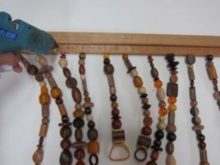 If you used the alternative method: After moving your strands to the desired spacing, hot glue another piece of wood exactly on top of the panel. The final width for this project was 16 inches wide so the 13 strands were all a little over an inch apart.
If you used the alternative method: After moving your strands to the desired spacing, hot glue another piece of wood exactly on top of the panel. The final width for this project was 16 inches wide so the 13 strands were all a little over an inch apart.
Once you get the hang of it, you could add beaded curtains to just about any door or window in your home!
Tips and Tricks
You will need a lot of beads for this project, but keep in mind, the bigger the beads and longer the strands, the heavier the curtain will be.
Take apart jewelry you are not wearing for some fun nostalgic pops, find strands of beads at thrift stores, or look through your grandmother’s jewelry chest.
I really loved this idea, and found a bunch of images and ideas… here they are:
And even better… we are not limited to beads. I also found this cool idea for using old CD’s:
And also some ideas featuring pom poms, wine corks, ribbons, and more:
But wait, there’s more! Here’s a nifty tutorial for making beads out of paper for a really inexpensive, albeit time consuming beaded curtain:
Ok, that’s enough of that!
- Café curtains
These are straight curtains hung from rings that slide along a rod. May cover the lower portion of the window or the entire window. It is great when you need to allow lots of sight into the room while keeping lower part of the room (above dining table, or in the bedroom) private.
They are very easy to make. Here’s a short tutorial for cafe curtains:
Time: 15 Minutes
Cost: $5.00
Difficulty: Easy
Since I was going to Ikea anyway, I picked up 6 extra of my favorite dishtowels, and had my mom whip up 2 panels using 3 tea towels for each panel. Add to the top a one inch rod pocket and I had some rustic, casual cafe curtains!
- Cellular shades
Cellular shades are the best insulators of all energy-efficient window treatments. They get their name and insulating properties from their fabric honeycomb cells that trap air between the window and the room. This unique design maximizes energy efficiency and insulates your home .This results in heat gain in the winter and heat loss in the summer.
Cellular shades come in single cell, double cell, and triple cell. They also offer different levels of light control from light filtering to blackout. Unlike window blinds which are made of hard materials, they are made of a soft paper- or cloth-like materials. Typically spun lace and bonded polyester are used, but other fabrics can be used during the manufacturing process.
For insulation and energy efficiency, cellular (honeycomb) shades, with their little pockets of cells (think beehive and honey) keep your temperature serene. All of those little pockets trap air and help keep the heat out in the summer and the warmth in during the winter. Those bees are smart little hummers!
Available in every possible color, they’re an ideal fit for most rooms and the cordless options make them great for families with kids or pets. Top down bottom up features are a must have option for maintaining privacy while still letting light stream in.
- Drapery
Drapery adds style and elegance to your home while also providing functional light control and privacy. Panels hang vertically from hardware at the top to your desired window treatment length.
Also referred to as curtains, can be used to create an elegant, casual or a sophisticated look. May draw across the rod or remain stationary on either or both sides of the window. Curtains come in a variety of shapes, materials, sizes, colors and patterns, and they often have their own sections within department stores, while some shops are completely dedicated to selling curtains.
Curtains vary according to clean-ability, ultraviolet light deterioration, oil and dust retention, noise absorption, fire resistance, and life span. Curtains may be moved by hand, with cords, by press-button pads or remote-controlled computers. Measuring curtain sizes needed for each window varies greatly according to the type of curtain needed, window size, and type and weight of curtain.
Available in many different styles, fabrics, colors and patterns, you can easily coordinate drapery to layer with any existing window treatments or simply use panels only
Drapes and curtains are the most decorative window treatment and the terms are often used interchangeably as full length panels of material. Drapes add extreme personality to a space, transforming a room in the form of breezy sheers or lush velvet. While decorative, they also filter or block light and may be lined for thermal insulation.
Hung high near the ceiling and draped near the outer edges of a window, drapes can make both the room and the window feel larger.
Drapes become a perfect companion when paired with another window treatment such as a timeless wood blind, an insulating cellular shade, or a rustic woven wood shade. Drapes are the dessert of window treatments!
- Mini Blinds
If you’re looking for the lowest cost option in window treatments, mini blinds are your answer! They are a basic blind that does the trick of providing privacy and controlling the light with a simple twist of the wand.
Mini blinds are available in an array of colors, different materials (aluminum and vinyl) as well as different thicknesses to solve all your light issues. Mini blinds offer minimal treatment. They can also be painted. These rainbow mini blinds are pretty cool.
The DIY is very simple. Take down the blind and clean it really well. When it is thoroughly dry, spray with a primer and then when that’s dry, spray paint it with the color of your choice. If you opt for the rainbow blinds, each slat will have to be painted individually. I’d recommend a foam brush and a good quality paint.
- Outdoor shades
Outdoor shades are innovative, lightweight and just shout easy living. Made from a solar screen material, outdoor shades block the heat, glare and damaging rays. The airy fabric lets the wind move through for a cool breeze, yet protects and offers privacy.
If you live in a climate with extreme sun, outdoor shades can be mounted to the outside of the house to prevent the sun from even reaching your windows and heating the place up like an oven. Outdoor shades are de rigueur (means you gotta have them) for patios, porches, and other outdoor spaces for ultimate outdoor living and entertaining.
- Panel track blinds
Panel track blinds are made out of a series of fabric panels that slide back and forth to give you optimal light control and privacy. Sometimes called sliding window panels. Offer a simple, versatile and stylish solution for sliding doors or picture windows.
These blinds are a modern alternative to vertical blinds for covering large windows or sliding glass doors.
Panel track blinds are the best thing to happen to sliding glass doors and large picture windows since vinyl vertical blinds! You can’t beat these when covering a large space. A cross between drapery and vertical blinds, a series of panels slide open and closed on a track system. So cool.
When mounted to the ceiling, panel track blinds can also be used as a room divider. The variety of materials offered range from basic vinyl to solar screens to natural woven woods. Once your sliding glass doors are outfitted with smashing fabric panels, you will become a panel fan.
- Pleated shades
Pleated shades are made from a single piece of fabric with pleats that collapse and stack neatly as you raise the shade. This slat-like effect gives your home a casual, semi-sheer look that allows a considerable amount of light to filter through the window.
A more affordable alternative to cellular shades are pleated shades which are actually constructed with crisp pleats cascading down your window. The insulation benefits don’t match a cellular shade but the look is quite similar. Many people object to the light that comes through the holes made by the cords as the shade is lowered. However, an option is now available to decrease those unsightly slivers of light, the “no holes pleated shade.” You don’t need an iron to keep those pleats sharp!
- Roller shades
Roller shades are one of the most affordable options when it comes to covering your windows. These shades roll up neatly onto a tube, making them appear minimal and discreet when raised. With blackout and light-filtering options, you can choose the amount of light control that you wish for any given room.
Roller shades, also called roll up shades or roller blinds, are an easy and economical way to add color, style and texture to any decor. Constructed with modern fabrics and offer simple functionality for ease of use.
The idea of a roller shade is pretty simple. When lowered, the shade hangs flat near the window pane and when raised, it rolls up onto a cylindrical rod. Lots of fabrics are a plus here: blackout material, sheer fabric, and linen and a palette of patterns. Technology today even allows you to print your own images, photos, art or design on a roller shade.
A cordless lift option creates an additional clean look. Roller shades are a straightforward, budget friendly window treatment option.
- Roman shades
Roman shades consist of one continuous piece of fabric, featuring horizontal folds down the length of the shade. These folds lay flat against the window when down but fold up nicely when raised, combining the soft look of fabric drapery with the functionality of a shade.
Provide privacy, light control, and offers insulating qualities; can be made in any fabric. Roman shades are usually opened with a cord mechanism, allowing the user to adjust the height of the covered area. Many different kinds of materials, from wood to fabric, can be used to create Roman shades, as well as natural materials such as bamboo.
Roman shades give the rich impression of drapery with the functionality of a shade that opens and closes easily. When closed, they hang like a panel, like a good solider and when raised, they fold up and look similar to a valance, like a cloud.
Roman Shades are available in so many fabrics, creating a burst of color or texture in your room. Different styles fit seamlessly into décor styles such as traditional, family-friendly, and even contemporary. And don’t think form wins over function. With roman shades, there are options galore to choose from like top down, bottom up or cordless or thermal liners. Romans are happy to roam on all of your windows.
- Sheer Curtains (Net Curtains)
A sheer or net curtain is one that is made from translucent (sheer) fabric. The sheerness of a fabric is expressed in 3 main characteristics (extremely rare, very thin, barely visible). The materials which can be made translucent include gossamer, silk, rayon or nylon.
Sheer fabric comes in a wide variety of colors, but for curtains white and shades of white, such as cream, winter white, eggshell, and ivory are popular. They are sometimes referred to as privacy curtains; during the day they allow you to see from the inside out whilst preventing people outside from seeing directly into the space.
- Sheer shades
Sheer shades are an elegant window covering. These popular window treatments feature two sheer fabric facings over soft fabric vanes.
When vanes are open, diffused light is let inside, and your view to the outside is preserved. When closed, however, room-darkening styles of sheer shades will completely block out light.
Sheer shades are the best 2 for 1 window treatment on the market. You get the look of a fabric shade with the functionality of a blind. They are light and airy and elegant. When the shades are closed, the vanes can be tilted open for a filtered view or completely closed for privacy.
Of course, sheer shades can be raised for a full view of your beautiful garden or kid’s playground or rambunctious pets. Beautiful in living and dining rooms, your bedroom is just as important, as sheer shades in a room-darkening fabric guarantee you the sleep you deserve.
- Shoji Panels
Used in Japanese decorating. Can be used as room dividers, doors and window coverings. These screens are made of wood or bamboo with a translucent rice paper, which is porous and easily allows light into the room.
It can be also used as folding screen (free- standing furniture). It consists of several frames or panels, which are often connected by hinges or by other means. It can be made in a variety of designs and with different kinds of materials.
- Shutters
Shutters are a classic window treatment choice, adding architectural design directly to your windows. Shutters are a great value when you consider they actually add value to your home.
Louvered or fixed slats. Attached with hinges so they can be opened and shut. Made of wood or plastic. Shutters may be employed for a variety of reasons, including controlling the amount of sunlight that enters a room, to provide privacy, security, to protect against weather or unwanted intrusion or damage and to enhance the aesthetics of a building. The term window shutter includes both interior shutters, used on the inside of a house or building, and exterior shutters, used on the outside of a structure.
The elegant design of shutters looks attractive from both the inside and the outside.
Shutters are dynamic as an architectural statement and are not only functional and beautiful window treatments, but they can also add value to your home.
I don’t think a simple shutter would be too difficult to make, so I found a bare bones visual tutorial in case anyone wants to try it:
Shutters help to control incoming light, offer privacy when closed and help to insulate against heat, cold, and sound. Shutters add timeless, traditional sophistication to any room. Shutters are so impressive; they make me feel like the Queen of England in my country manor or a totally hopeless romantic in my beach cottage.
- Solar shades
Solar shades are also known as “window sunglasses” for their opaque design that allows you to preserve your outside view while also providing considerable light control. Available in openness factors ranging from 3- to 14-percent, you will want to choose a higher openness to let in more light and preserve your view.
Solar shades are really just a roller shade made with a screen material. If you have a stellar view or just want to bring the outdoors and light into your house, but you need to cut the glare and control the UV rays that stream in from your windows, solar shades do the trick. They do a fine job of filtering the sun, yet your view to the outside is preserved.
Of course, the huge plus is the energy efficiency as we all want to save the resources of our planet while lowering our personal energy bills. Solar shades are another “on trend” window treatment in our light obsessed world.
- Wood blinds
Wood blinds are a classic choice for windows and outlast trends or styles. Made of real wood, using various grains and stains, wood blinds remain durable through the years. The warm look of wood blinds pairs well with other wood furniture, flooring and trim.
I initially think of wood blinds in a den or library, but really, they’re at home in most rooms. Wood blinds are simply natural wood slats that are either painted or stained. They are a classic treatment, complementing many decorative styles and their simple construction makes them easy to operate. Many finishes are available ranging from light pine to bamboo to richly stained ebony. Different slat sizes are offered depending on the degree of control you’d like with regards to privacy and light control. For a stylish look, layer wood blinds with drapery or top with a valance.
- Faux wood blinds
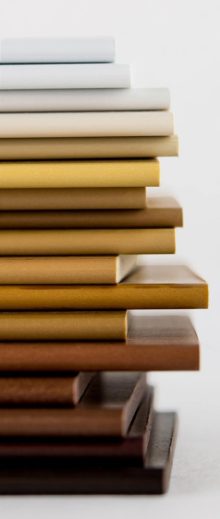 Faux wood blinds have the same look as real wood, but are more affordable window treatments because they’re made out of PVC, vinyl or composite wood material. Faux wood blinds are also moisture resistant, making them a great choice for kitchens and bathrooms where real wood would otherwise warp and crack.
Faux wood blinds have the same look as real wood, but are more affordable window treatments because they’re made out of PVC, vinyl or composite wood material. Faux wood blinds are also moisture resistant, making them a great choice for kitchens and bathrooms where real wood would otherwise warp and crack.
For the best value and for an uncomplicated look, faux wood blinds are a good first choice. Why? Here are some of my favorite words: affordable, efficient, attractive, and easy maintenance. That means no fading, or fraying and just a quick swipe now and then.
Faux wood blinds look and feel like wood blinds, but are less expensive and more durable. Since these blinds won’t warp or fade, they are the best option for humid climates or high moisture rooms such as bathrooms and kitchens.
- Venetian Blinds
Made of wood, metal or plastic. They are suspended by strips of cloth called tapes, or by cords, by which all slats in unison can be rotated through nearly 180 degrees. The slats can be rotated such way that they overlap with one side facing inward and then in the opposite direction such way that they overlap with the other side facing inward.
Between those extremes, various degrees of separation may be effected between the slats by varying the rotation. Slat width can be between 16 and 120 mm, with 25 mm being a common width.
- Vertical Blinds
Unlike horizontal blinds, vertical blinds are less likely to collect dust because they stand vertically. Since they draw to the side rather than lifting and lowering, they operate better on doors and windows that also slide from side to side. Generally they require less muscle strength, and are faster to operate. Are an excellent solution for covering windows that are extremely wide and for patio doors as well.
Fabric blinds are noise reducing and will insulate from the heat of the sun and the chill of the wind. Vertical blinds are available in flat plastic (PVC), fabric, embossed PVC, faux wood materials, metal, wood and also S-curved slats. Vertical blinds are also used for door ways in public spaces in order to keep the warmth inside the room and/or in warmer climates in order to discourage flies and some other insects from entering the building
- Woven wood shades
Woven wood shades, often called bamboo shades or matchstick shades, offer an exotic, natural look and are a great way to add textured, casual good look to almost any decor. Woven wood shades offer complex textures, exotic reeds, grasses, woods, and sophisticated natural colors.
Window treatment manufacturers make woven wood shades out of a variety of materials, including grasses, reeds and bamboo. You may add liners to increase privacy or include fabric trim to further customize the woven wood shade to your room.
Woven wood shades run the gamut from casual and rustic to tailored and elegant. Made out of renewable materials such as bamboo, reeds, or grasses, they are an environmentally responsible selection. Woven wood shades bring wonderful texture into a room and are effortlessly chic.
Other considerations:
- Kitchen window ideas:
The kitchen is your hub, your ground zero. We all have to eat, and let’s face it, as much as you may plan for guests and kids to gather in another part of your home, they come find you in the kitchen, because that’s where all the fun happens. It’s also the room where the temperature is up and down and experiments happen more often than not (I think of mine as more of a lab).
Since there is high moisture and potential spillage in the kitchen, faux wood blinds are a great choice since they will not warp or fade. They are natural ventilators and are durable even for the rowdiest of chefs. They also clean easily, to boot.
If you’ll be covering windows above sinks and stoves, consider a cordless shade in the kitchen. Long winding cords getting stuck in the disposal or singed off into your soup are no bueno. If your kitchen faces out on the street, you might like shutters since they give great curb appeal. Shutters are naturally cordless, too.
- Dining Room Window Ideas
This is where you celebrate the best things, either your nightly family ritual, or your big feast that comes a few times a year. If you’re going formal, think about tall drapes because you can do a floor-to-ceiling effect where you’ll bring a feeling of height and importance. It’s dramatic but still inviting.
If you’re going more laid-back, roman or roller shades will keep the space warm and private with a soft, homey feel. Cellular or pleated shades are a great pick for anyone in between who uses the dining room for all celebrations, big or small.
- Living Room Window Ideas
In here, you’ll be making a statement about your home, entertaining, and protecting large furniture that you don’t want to fade. Solar or cellular shades are the great protectors from direct sunlight, and you can pick how much light you want coming in while still preserving your view outside.
On stark bay windows, roman shades are soft and elegant. On tall windows, or ones you want to seem tall, pick any shade and then overlay long drapes to really give reach and a finished look. Add a valance and you’ll really have a wow window.
Think outside the box in this room—make it a signature room with color, bold patterns and mix and match fabrics. It’s your living room—make it feel like you want to actually live in it!
- Bedroom Window Ideas
Your bedroom is your sanctuary where you wake up and wind down every day. Bar none, your first thought should be privacy, and how much of it you want.
Blackout shades are great for pure darkness, especially if you don’t rise and set with the sun. If you are not a vampire and would like a little light, go with day/night shades that give you the best of both worlds—room darkening on one end and light-filtering on the other. These shades are way amazing and some of us think this is a secret blind, for the underworld.
Cellular shades are naturally calming with their soft diffusion of light and their fabric touch. They insulate during any season, and they come in patterns stimulating enough to wake up to, but still serene enough to fall asleep to. To keep it serene in this room, add motorization—your shades will practically operate on their own. In the end, a blind or shade that makes the ambiance feel warm to you is your best bet in the bedroom.
Wow! Check out these City Scape Black Out Blinds!
These are the perforated cityscape roll-up window blinds created by Ukraine based HoleRoll. They look like nighttime cityscapes when rolled down, look like whatever is outside your window when rolled up.
Their prices start at around $152 per shade, which is way out of my league, but I thought it might be fun and interesting to try to make them. I went on an exhaustive search for a DIY and came up with nothing. So…
How hard can it be? Start with some great roll up shades. Cover the front with black fabric, paper, or paint. Alternatively, buy some black out shades that are already black. And then cut them yourself. A night sky looks fairly simple and might be a good place to start. And then, be brave and get creative! Here’s a city scape image to get started with. Don’t forget to add stars… and maybe a crescent moon!
And if you need even more ideas. Black out shades are not the only things that can be super cool when painted black, back lit, with tiny holes punched in.
So, there you have it! Everything you ever wanted to know about window treatments and a little bit more!
Sources:
Let’s Go Outside!
Time spent outdoors is always time well spent, but when its a well designed space, it’s even better.

What is an outdoor living area? It isn’t just a patio and table anymore. Not just some plants on a deck. Today, the exterior of a home is literally turned inside out in order to create the feel of an indoor area. But how can you make the outside feel more cozy and inviting?
Creating an Outdoor Room
Whether you have a big backyard or a tiny patio, the key to designing for outdoor living is implementing your plan in steps, says Elyse Santoro, a Miami-based interior designer/decorator. “It doesn’t have to happen all at once, and it doesn’t have to be overwhelming or cost a fortune.”
- Where to Put Your Outdoor Room
First, go inside your house and check out the views looking out. Placing the room in a good relationship to the house helps give the feeling that your outdoor room is “an extension of your home,” Santoro says. “Make sure… you have easy access to get there,” she says, whether or not it’s physically connected to the house.
An outdoor room can include anything from an attached, screened-in porch to a gazebo to a landscaped area with a bench. If it’s an independent area, such as a gazebo, create a passageway with foliage or hardscaping to visually connect it to the house. “You want to erase the fact that you’ve gone outside,” says Atlanta-based landscape designer Patricia Thernell. She advises using the same flooring material outside as inside, or using plants to frame the doorway to your outdoor room.
- Defining Your Outdoor Space
“The best way to define an outdoor room is by the activity that will take place in it,” says Mary Donovan, an interior and landscape designer in Atlanta. Donovan interviews homeowners on what they plan to do in their outdoor spaces. Often the answer includes several purposes such as entertaining, family dining, playing games and reading. Figure out if you need one large space or several smaller rooms, each with its own purpose.
Multiple outdoor rooms don’t necessarily require acres of land, Donovan says. Postage-stamp sized front lawns and narrow side yards can be landscaped to be rooms in themselves and not just passageways. “It can be a shady quiet, meandering space with hydrangeas, hostas, moss and a dripping wall fountain, and other plants trained to grow vertically up against the house or on a lattice,” Donovan says.
An outdoor room has to be functional, but it also has to be engaging or you’ll never use it. Santoro asks clients to think about places they’ve traveled to that they absolutely love. “If they say they love Tuscany or the vineyards in northern California, I ask them to remember what it felt like there and to create their outdoor space with elements of that place.”
So, it all begins with the initial design. Do you want a pleasant patio, a quaint courtyard, a stylish gazebo, or a country-style porch? Next, try to harmonize with the backyard. Most of the time, you’ll want every area of the exterior to be a room unto itself, each with its own function and purpose while still creating a cohesive style.
The Floor Plan
You want to think of your backyard as a part of the house, which means it should come with its own logical layout. First off, if you don’t have them already, patios and decks are the most common exterior installations for homeowners because you have to have some kind of focal point to work around. But even when you have a central location, you need to organize and compartmentalize the space.
Here are some basic “rooms” to consider when planning your outdoor space:
- Kitchen
Cooking outside is a summer tradition, buy why limit it to grilling. Outdoor kitchens have become a popular renovation for any chef who wants to go beyond hot dogs and hamburgers.
If you have the a nice big budget, you could add some counter space and cabinets. Install an oven, a range, a wet-bar, or a sink. Of course, make sure these items are made out of the appropriate weather-resistant materials, such as sealed concrete and stainless steel.
Even on a smaller budget, a cozy cooking area is possible. Here are some creative ideas using brick, repurposed tables and cabinets, and what’s that? A volkswagon bug?
- Dining Room
After cooking outside, you’ll probably want to eat out there as well. This delightful patio in England designed by Cool Gardens Landscaping Ltd. is the perfect spot for afternoon tea. It features a towering hedge that serves as an organic art gallery wall complete with an outdoor TV screen and audio system.
Super cool huh?
I found a bunch of other equally cool ideas for dining areas outside. They range from the super simple to the elaborately luxurious. Here’s a gallery of pics to drool over and get ideas from:
Patio furniture is crucial. Tables, chairs, and umbrellas are important, but you may also want to think about other decorative touches such as gliders, porch swings, or a screened-in porch that keeps out the bugs.
- Family Room
Once you’ve eaten, it may be time to adjourn to a common room. Therefore it’s a good idea to have a relaxing retreat, a place to entertain.
Add a cozy outdoor fireplace for those chilly nights. Or, if you have the budget, a hot tub and a pool is a great addition: they’re fun, they’re attractive, and they add value to the home.
More cool ideas:
Oh, and here is something fun!
A trampoline isn’t just for kids in this backyard. A cushioned bumper and collection of throw pillows create a great space for lounging.
- Water Features
Landscape designers, interior decorators and architects all agree: Water is one of the most important elements in an outdoor room. The sound of water really creates a serene setting.
Even if you’re creating a room for entertaining and dining rather than meditating, it’s still nice to hear the splash when you’re sitting around the table. But you don’t have to spring for a pond or waterfall. A container water garden or a tabletop fountain works perfectly.
I found this great little tutorial for how to create a bubble fountain. It looks pretty easy, the biggest expense is the pump. I didn’t price them, so I don’t know how expensive they are.
How to Make a Bubble Fountain
Tools and materials needed:
- spade
- level
- bubble fountain kit
- decorative garden pot
- silicone sealant
- small pump with flow adjuster
- gravel
STEP 1 – Prepare the Site
First, hire a qualified electrician to install an electricity supply and an outdoor outlet to an easily concealed location close to the fountain. Then dig a hole larger than the reservoir.
Remove any sharp stones from the hole and pack damp sand around the edges, sides and base. Place the reservoir in the hole, and use a spirit level to check that it is level in all directions.
Pack more sand around the reservoir, as necessary, and check that it is level again. It is essential that your fountain is horizontal to prevent water from draining out, and to ensure that the pot on top will be stable.
STEP 2 – Place the Pump
When level, place the pump in the reservoir. You may need to fit an extension pipe onto the pump to reach through the hole in the base of the decorative pot. Put the lid on the reservoir, and over the pipe from the pump.
Place the decorative pot on the reservoir lid, making sure that the pump pipe passes through the drainage hole in the bottom. Seal the pump pipe in place with silicone sealant, and leave to dry and harden for 24 hours.
STEP 4 – Attach Flow Adjuster and Fill Fountain
Attach a long section of pipe to the water flow adjuster. Then attach this to the pump pipe in the base of the pot. Trim the water delivery pipe so it reaches just below the rim of the decorative pot.
Use a watering can or hose to fill the reservoir through the holes in the lid, and fill up the decorative pot to just below the delivery pipe.
STEP 5 – Protect the Cord
The electrical cord must be protected by special tubing, which an electrician can advise you about. Make sure that all electrical connections in the garden are fitted with a ground fault circuit interrupter (GFCI).
STEP 6 – Disguise Reservoir and Soften With Plants
Plug in the pump and check that it pushes the water over the top of the pot, and adjust the flow as necessary. Disguise the reservoir with pebbles and gravel, leaving a gap to allow you to fill it up; you need to do this once a week in summer.
Plant up around your pool, leaving a margin between your planting and the reservoir, to avoid dislodging it. Plants from the Mediterranean, such as euphorbias, lavender and rock roses make great companions for an urn. If you prefer a more traditional look, try roses, honeysuckle and daisies.
Here is a great collection of bubbling fountains to get your creative juices flowing. As you can see, the fountain does not have to be buried in the soil to be super cool and beautiful.
- Fireplaces
A cozy fire or fireplace is becoming a staple for outdoor rooms, because a hearth can extend the season of your outdoor room by several months.
Fire pits come in many shapes and sizes. They can be a permanent structure or a simple barrel that can be moved around the patio. Find the design that’s right for your backyard.
Fire pits are not hard to build. They do, however, require a bit of elbow grease and hard work. They can be created with concrete culvert spacers — aka doughnuts — intended to fill culvert gaps in city sewer systems, fire brick, metal containers buried in the soil or surrounded by brick or stone.
I found a couple of simple visual tutorials. Here they are:
Firepits can also be created from a variety of materials:
But wait, those look expensive and/or difficult. I want something super easy and inexpensive. So I went on another search and found these two visual tutorials. One uses sterno, the other is a variation of an oil lamp. Easy peasy.
- Plants
Plants soften hard edges (such as concrete flooring) and add a sense of life, warmth and comfort. Santoro, who’s also an expert in feng shui, likes jade plants, miniature orange trees and potted philodendron in sheltered areas, and pines and bamboo to define outdoor areas. Or, choose plants based on the feelings you want to evoke in the space.
For example, a meditative outdoor room works best in shade, surrounded with ferns and hosta with ligustrum to define borders. Left to grow naturally, a ligustrum hedge looks woodsy and informal, or you can trim it to define a more formal outdoor room.
There’s no need to spend big bucks on planters and flower pots. Look around the house or scour thrift stores and flea markets for unique vessels to hold plants, herbs and vegetables.
Shade and Shelter
One of the best ways to ensure that you have a luxuriously comfortable outdoor room is to ensure that you have shade, privacy, and a feeling of shelter and safety.
Curtains made from outdoor fabrics were used to create instant privacy on this charming porch. There are so many different ways to create privacy and shade with walls, screens, curtains and plants. Here are some great ideas:
Whichever your relaxation method of choice, an important consideration in any outdoor room is protection from the elements. In addition to shade from the sun or even a light rain, consider erecting screens or other wind breaks on wall-less structures.
- Backyard Tents or Teepees
If you’re worried about the kids spending too much time in the sun, put one of these in the backyard for a great place to cool off. A tent can be a luxuriously wonderful place to spend time in the back yard for the grown ups as well.
Tie It All Together with Flooring
Since flooring defines a space, put down some kind of hardscaping, whether it’s a deck or a stone floor or a concrete slab. If your outdoor room has a floor of grass, “you’ll never go out there,” says Santoro. “If there’s no floor it doesn’t feel like a room.
- Walkways and paths
Garden paths come in many styles, and it is up to you to determine not only which style fits your garden best, but which you can commit yourself to creating and maintaining.
Some take much more time, effort, and expense than others. For example, gravel and mulch paths are inexpensive, but stone and brick are more durable. Stepping stones add charm, while mosaics add elegance and beauty but are incredibly time-consuming.
Pea gravel is fairly inexpensive, and in my area there is an abundance of limestone rock that can be scavenged and scrounged. Also you might check with companies that make grave stones to see if they have a supply of broken or unusable gravestones. Other possibilities include beer bottles embedded in sand, bottoms up.
Outdoor Flooring Buyer’s Guide
What’s the best material to build your driveway, deck or patio? Here’s a look at five outdoor flooring choices and the cost, pros and cons, and ideal locations for each.
From brick to cedar decking to concrete pavers, outdoor flooring options can quickly get complicated, but when you consider the pros and cons of each, it’s simple to choose a type of flooring and style that fits your space and your budget.
The following info is from design experts Jeff Wilson, a home improvement expert who has hosted several shows for HGTV and DIY Network, and Morgan Grimball, ASLA, a landscape architect in Columbia, SC.
Natural stone
Pros and cons: Stone can be expensive to truck in and installation is labor-intensive. Local stone from your region (for example, fieldstone in the south or slate in the northeast) costs less and is more eco-friendly. Once installed, natural stone is extremely durable and almost maintenance-free.
- Cost: Varies by type of stone and region, but around $25-35 per square foot.
- Ideal location: Patios, pool decks, front porches, walkways, driveway accents
Design ideas: Use stones with an irregular shape to create a meandering mosaic pathway; for a more uniform appearance, select cut modular stones. Natural stones have beautiful color variations from gray to red to blue, which can form part of the pattern and overall design of your outdoor space.
Concrete
Pros and cons: A basic slab of concrete is inexpensive, low-maintenance and a good long-term option, though cracking is difficult to repair. Concrete pavers are easier to repair; simply pull up the damaged section and replace.
- Cost: $4-6 per square foot for basic concrete; $7-8 per square foot for pavers; $12 per square foot for stamped or acid-etched concrete
- Ideal location: Patios, driveways, pool area, garden paths, front porches
Design ideas: Coloring and stamping options make concrete resemble stone, bricks, or other higher-end materials. Concrete pavers are durable, low-maintenance, and come in a wide variety of designs from brick to flagstone.
Wood
Pros and cons: Wood decking is one of the simplest DIY projects, which lowers the cost substantially, but wood requires cleaning and sealing every one to two years.
- Cost: Around $8-10 per square foot for the least-expensive treated lumber; $18-20 per square foot for higher-end wood; $20-25 per square foot for inexpensive treated lumber, supports and railings. Composite decking runs about $35 per square foot.
- Ideal location: Ground level or raised decks, pool decks
Design ideas: Using local hardwood in deck building is greener and can be less expensive, since the wood doesn’t have to be trucked in. If your ground is sloped, consider building the deck in levels to follow the slope.
Brick
Pros and cons: Brick gives off a beautiful old-world look and is low-maintenance and relatively slip-resistant, but ground shifts over time can make a brick pathway or patio difficult to shovel snow because of the irregular surface.
- Cost: Approximately $15 per square foot, including the base
- Ideal location: Patios, garden paths or walkways, pool decks or fountains, front porches, driveways
Design ideas: Brick can be installed in a number of patterns, such as basketweave, herringbone and circular. Encouraging moss to grow between brick pavers fills in the cracks and helps prevent weeds, but can be slippery when wet.
Tile
Pros and cons: Ceramic tile installed outdoors must be highly slip-resistant and able to withstand freeze-thaw cycles. Look for tile specifically formulated for the outdoors, which is dense with low absorption ratings. Tile usually requires a sealant to protect the grout from cracking.
- Cost: $12-20 per square foot
- Ideal location: Front porches, patios, garden stepping stones, pool decks
Design ideas: Use accent tiles to create a border; lay contrasting tiles in a diamond pattern; create a pathway within a large patio by laying a contrasting color in a walkway formation; use smaller tiles in a mosaic pattern as a focal point.
- Note:
All costs for all materials are estimates that include labor and installation. Prices may vary by region, and installing materials yourself will cost substantially less in most cases.
But Wait There’s More!
And if you don’t want to go for something permanent, here is a wonderful and luxuriously cool temporary outdoor room:
Sources:
Refurbishing The Dining Room
Make your dining room a comfortable dining and conversation space for the family. Whether your style is formal or family friendly, here are some great ideas to update your dining room.
Clean It Up
First up, I think it’s a good idea to make sure that the wooden surfaces sparkle and shine. Here’s an easy recipe for a good wood cleaning product:
Apply this formula to clean and restore luster to wood furniture. It also may be used to help remove superficial water rings on wood tables.
You will need:
- Funnel
- Measuring cup and spoons
- Lidded 8-oz. plastic squirt bottle
- Microfiber cloth (or clean, soft rag)
Ingredients:
- 2 Tbsp. olive oil
- ¼ cup distilled white vinegar
- ¼ tsp. lemon oil (or fresh lemon juice)
Instructions:
Using funnel, pour olive oil, vinegar and lemon oil into bottle. Shake well to emulsify. Squirt polish onto microfiber cloth and rub onto finished-wood furniture. Always go with the grain and evenly distribute polish. Remove any excess polish with a clean cloth.
Colorizing Your Dining Room Furniture
Maybe instead of a good cleaning, your dining room furniture needs a spot of color! Here is a collection of super colorful and interestingly wonderful painted tables and chairs:
And if you have metal chairs, they can be cleaned up and painted too! Check these out:
If your taste and your style is more conservative, give them a new makeover with paint and fabric. A bold graphic pattern can bring a pop of color and life into a room. And the best part: It doesn’t cost a lot of money.
How to Re-Cushion Old Dining Chairs
These are the chairs we’re starting with:
Here’s a list of the tools and materials that will be needed for this project.
Tools:
- Staple gun and staples
- Hot glue gun
- Measuring tape
- Flathead screwdriver
- Scissors
- Small pliers
- Hammer
Materials:
- Fabric for chairs
- Black upholstery tacks
- Carpet padding
- Quilter’s batting
- Cotton batting
- Paint
Step by Step Instructions with pics:
- Remove Old Fabric
Use a flathead screwdriver and pliers to remove upholstery tacks and the staples underneath. Do not throw away fabric or cushioning, you can use them for templates. If seats are different, number the bottom of the seat as well as fabric that was removed.
- Clean Chairs
When fabric is removed, clean chair to remove dirt and greasy build up.
- Prime and Paint
When chairs are completely dry, apply a coat of primer to entire surface. A coat of primer will help paint better adhere to chairs. When the primer is dry, add your first coat of paint. Let chairs dry completely and then apply a second coat.
- Measure and Cut Padding
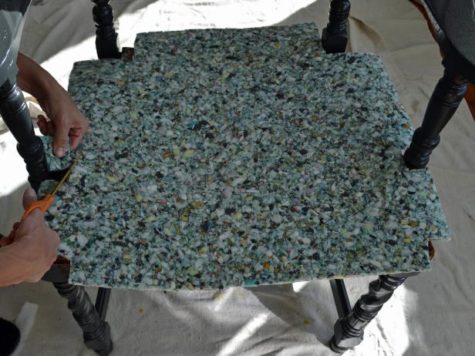
Use old fabric as a guide to cut a piece of carpet padding for the chair. Place padding on the chair and then cut in details you may have missed. Make sure there is enough overhang to go over the side of the chair, you can always cut excess off later.
- Attach Cushioning
Use a hot-glue gun to adhere padding onto seat and down the sides. Hold in place while the glue dries. To make it extra cushy, glue a second piece of carpet padding on top of the first one.
Cut a piece of quilting batting bigger than the carpet padding and lay it on top. Use a hot-glue gun again to adhere the batting to the padding.
- Attach Cotton Batting
Use cotton batting for the final layer. Cut this layer long so it hangs down past the bottom of the seat. Glue cotton batting onto the quilting batting on top and around the sides of the seat. After the glue has dried (usually just a few minutes), flip the chair over and staple the overhanging batting to the bottom of the chair seat.
- Cut and Prep Fabric
Again, use the old fabric as the template to cut the new fabric. Place the new fabric on the seat and make sure it is centered and smooth. You may want to stick a few straight pins in the top to hold the fabric in place. Place one staple in each side, in the middle. Turn the chair upside down. Pull the fabric a little taunt and continue stapling each side from the middle out to the corners. If needed, use a hammer to push the staples all the way down.
- Finishing Touches
Leave plenty of room around the corners and legs for folding in. You will probably need to cut some of the batting off to get the fabric to fold properly before hammering in the upholstery tacks. We used three tacks for the side of each leg.
- The Finished Chairs
I love how each one is slightly different, and I wonder if the fabric was painted or stenciled. Super cool, huh?
Not interested in recovering your dining room chairs? You can easily clean them up with this simple recipe:
Top It Off
Add texture and formality up above by applying tin tiles or embossed wallpaper to the ceiling. Having a little architectural interest on the ceiling will draw the eye up and make the room seem bigger. Get the look of 1920’s glamour on your ceiling with unbelievably real-looking fake tin tiles.
How to Install Tin Ceiling Tiles
People often think to decorate their walls with art and new paint colors, or their floors with fabulous rugs, but a famous designer secret to making a space special is to dress the ceiling. It isn’t called the fifth wall for nothing. We started this project with a bare, square ceiling over a Spanish-style dining room. With some simple calculating and installing, this faux tin ceiling makes a dramatic impact, and it keeps with the 1920’s style of the space. This plastic tile is made to look just like the real tin version. In addition to being easier to cut and work with, it’s cheaper, too.
Here’s a list of the tools and materials that will be needed for this project.
Tools:
- Measuring tape
- Chalk snap line
- Duct tape
- Scissors
- Paint roller
Materials:
- Faux tin ceiling tiles
- concrete sealer
Step by Step Instructions with Pics:
- Get Started: Plan, Purchase and Install
Find the square footage of the area you’d like to tile. Measure the length and width of the space. Next multiply those numbers together to find the square footage. This will be important for ordering enough of the product you select. If you’re working on a ceiling, have a friend help you measure if needed to get the correct dimensions.
- Order or Create Your Tiles
When picking faux tiles, think about the style of your home first. Look for a style that naturally blends with your space. Faux tin ceiling tiles come in several colors, and several faux metal finishes – it comes down to taste and color scheme. They also come in 6″ patterns up to 24″ patterns. We chose a larger pattern that had a Spanish-style vibe and ordered it in a dark, bronzed finish.
Purchase 15% more tile than you need, for any cutting mistakes and pattern matching. I also suggest ordering 1″ decorative strips in the matching material of your tile to cover seams.
To determine your installation needs, check the ceiling’s material. Many people prefer a glue-up install, so you can reposition tiles as needed while the glue sets up. Plaster, paneling and plywood work with glue, but check your manufacturer’s instructions for best practices.
- With a friends help, snap chalk line.
Two people should hold it taut in place, and one person should pull down and release the chalk-covered string to snap a chalky line on the ceiling.
Two people should hold it taut in place, and one person should pull down and release the chalk-covered string to snap a chalky line on the ceiling.
- Mark the Control Lines
For most spaces, the control line should be a straight line cutting your tiled area in half. Measure to find a halfway point on either side of your space. Use a snapping chalk line to connect the two points by stretching it from one side to the other at your halfway mark. Two people should hold it in place, and one person should pull down and release the chalk-covered string to snap a chalky line on the ceiling. This will serve as a reference line that you can use to ensure straight tile placement.
Once you’ve completed a line going one direction, rotate 90 degrees and create another control line to create a cross and form straight lines bisecting your middle point. Plan for your first tile to be placed in the corner created by the intersection of the two chalk lines. For this project, that intersection fell behind a light fixture in the center of the room.
- Dry Fit Tiles Before Installing
It’s always best to dry fit your tiles before gluing up. Before you apply adhesive, place your tiles on the ceiling and trace any fixtures you may have to cut around.
Duct tape on the back of your tiles will help hold it up while you trace and dry fit each tile.
- Make Cuts
Use scissors to cut tiles to fit your ceiling. We cut out rounded shapes, to leave room for the light fixture in the center of the room. Faux tin tiles are very easy to cut, but it is recommended to have a strong set of household scissors to do the job.
- Roll On Cement and Install
Apply an even coat to the back of your tiles. Apply an even coat of contact cement to your ceiling as well
The cement is applied using your paint roller. Apply an even coat to the back of your tiles. Contact cement has an open time of approximately 15 minutes. That means that once applied, you should let it sit for a few minutes to become tacky and the begin applying the tiles to the ceiling.
While they are setting up, apply an even coat of contact cement to your ceiling as well. The cement on both surfaces will bond with itself, creating a seal.
Apply the tiles on your reference line first and work out toward the edges of your ceiling. Measure and cut pieces of tile to fit any areas where a full tile cannot go. Stick to the pattern repeat for best results.
- Clean and Cover Gaps
Sometimes ceilings are not square, so you may find yourself having to adjust a tile here and there. The decorative strips that match the tile are very helpful for covering any gaps. Clean the tiles with a dry cloth and make sure any cement has been wiped off the surface before you apply the strips. They are not repositionable, so try to get it lined up perfectly the first time.
- The finished Ceiling:
I think it looks pretty cool, and if you have nice sturdy tile to use, it’s probably not that difficult to do. I did, however, think that the cost of the faux tiles was kind of high, so I went on a search and came up with a super cool and not very expensive faux tile project that looked really fun. Best of all, the tiles could be thumb tacked onto cork board and installed as a back splash.
Susy’s Artsy Craftsy Sitcom is the only place I could find with a tutorial to these tiles. I love how pretty they are. Recycled crafts are one of her specialties. Embossing disposable cookie sheets is an easy technique and creates amazing art. Beautiful faux tin tiles!
Make Beautiful Faux Tin Tiles With A Cookie Sheet
I’m always on the look out for interesting things to make out of the unexpected. Disposable aluminum cookie sheets can be found at your local party supply store. This simple embossing and paint technique turns a disposable pan into a work of art, and this project comes with free downloadable patterns!
For this project I used:
- 2 disposable aluminum cookie sheets
- Patterns ~ Faux-Tin-Tile-Patterns and More Faux Tin Tile Patterns
- A knitting needle
- Paintbrush
- Various metallic acrylic paints
- Spray primer
- A cork bulletin board
- Thumb tacks
Begin by measuring out and cutting (3 ea.) 7″ squares from each cookie sheet.
Use a ruler to measure them and mark the cookie sheet by pressing a knitting needle along the ruler, then simply cut them out with scissors. Take the ruler and score 1/4″ from all four sides of your square using the knitting needle.
Use the scissors to clip a notch in each corner. Fold the metal over carefully along your scored seam. This will create a smooth finished edge for each tile.
- Print out the patterns.
You can either use the ones that come with the tutorial, or surf the internet for ideas of your own. Here are a few that I found in a google search for “simple geometric patterns to color” :
Lay the metal tile on top of a folded towel and use a knitting needle to press the design into the metal. For your convenience.
Here the metal tile is shown with the pattern scored into it.
Keeping the tile on the folded towel, then use the end of a paintbrush handle to gently rub indentations into the metal where you want them. The more you rub, the deeper they can be, just be careful not to use a ton of force as the aluminum is very thin metal.
Once the piece is indented to your satisfaction, it is time to paint it. You could certainly leave it unpainted at this stage, but I’m all about color. Lightly spray each piece with a layer of primer. Once it is dry, begin painting the indented areas using metallic acrylic paint.
Once all the indentations are painted, add a base color to the raised areas. Add details by watering down some metallic acrylic black paint and adding it to lines and edges of the indentations, giving it an antiqued look.
I used the same color scheme for each tile, so that they all worked together.
There are many ways to display your finished tiles. I chose to use a cork bulletin board and lined them up carefully, pinning them down with thumbtacks. This resulted in a great piece of wall art that will definitely surprise anyone when you tell them it started out life as a couple disposable cookie sheets.
Note:
I love this project. It does look time consuming, and the finished tiles are probably a bit flimsy. The idea of using thumbtacks to attach them seems easy and I like the way it looks. I bet this could be thumb tacked and also glued (just to be safe) to Styrofoam panels and attached to the ceiling.. That would be super cool and also add some great insulation.
Sources:
Almost A Vacation!
If we were actually rich, we’d be able to hop on our private jet and fly off to the beach whenever we wanted. Then we could relax, and live the good life, and it might look something like this:
That’s a nice fantasy, so how do we convert it into “living as if…? ” I have a few ideas.
Maybe we can’t actually jump on a private jet and fly off to a secluded island or amazing beach, but what we can do is relax and enjoy a video or two… maybe even hang out in a cool hammock, have a picnic, enjoy a fancy beverage, make a cool meal, and imagine that we are actually there.

Here is a relaxing “almost a vacation” YouTube video:
But wait… Hammocks are the ultimate symbol for the outdoor rest fan. They’re portable beds, easily strung up between two sturdy long structures from trees to poles.
Instant Hammock in 9 easy steps:
Here’s how to make a hammock in a minute from a sheet or any big piece of cloth. It’s the simplest method, and does not require a sewing machine or any complicated directions… here ya go:
First bunch up the ends and tie knots in them as shown. If you don’t have much cloth, are skilled with rope, or don’t care if you fall you can skip this step.

Next, tie a rope to each end with a lark’s head knot, just like this, or tie whatever knot you like best. If you don’t fall it means you did it right.
Hang it up, get in, and relax in utter comfort. For extra coziness pull the hammock around you like a cocoon. And since you can hang it up indoors as well at out, why not enjoy some relaxing waterfall and jungle sounds.
For a Working Vacation:
So if your budget doesn’t allow for a bonafide working vacation at the beach, you can use your hammock for a workstation for large drawings, or if you are painting a cool mandala on the floor, or anything else you can think of that would be fun to do in the comfort of a hammock…
If you do have to work, be sure to have this video playing so that you can pretend that this is a super cool hideaway… complete with beach and waterfall:
Outdoor fun:
Here is a cool triangular hammock. It’s a bedspread tied at the corners to three trees.
Helpful tips:
A king size sheet is a good size for an adult. Your local thrift store has used sheets in fun patterns for cheap, just give them a good wash.
Yes, the tutorial images show how easy it is to make a hammock, but they don’t look all that luxurious. So here is a small collection of images that might give some ideas on how cool it could look given the right choice of fabric. Say, for example, a super cool king size bedspread…
Now add some cool outdoor decor, some fun lighting and voila!
A Picnic
Why not have a nice little picnic to go with our relax at the beach theme:
Here’s a list of items you don’t want to forget to bring to your nifty picnic lunch!
- Frozen Bottles of Water
The main rule for outdoor eating is to keep hot foods hot and cold foods cold. Ice packs will get the job done, but frozen bottles of water do double duty. After they melt (and the food’s been eaten), you’ll have cold drinks on hand for everyone.
- Corkscrew/Bottle Opener
If you’re packing wine, beer, or bottles of soda, be sure to toss a corkscrew with a bottle opener in your bag. (Bonus points for packing plastic cups with sturdy, flat bottoms too.)
- Wet Wipes
Pre-moistened wipes will keep hands clean and help clean up sticky spills, even if there’s no running water nearby.
- Salt and Pepper
Seasoning is a small thing, but goes a long way in making your picnic feel more thoughtful—especially if you happen to be eating fried chicken.
- Paper Towels
You never know when you might have a big spill on your hands. And a roll of paper towels won’t blow away like a stack of napkins will.
- A Tray
If you’re eating on the ground, a lightweight plastic or enamel tray will provide a smooth surface to prevent drinks from toppling over.
- Serving Spoons
Cutlery is essential, of course, but don’t forget a large spoon or two for serving food.
- Folding Knife
A small folding knife will come in handy for a variety of jobs, and is essential if you’re serving meats and cheeses.
- Cutting Board
A lightweight cutting board is also a good idea if cheese is on the menu, or if you’re slicing sandwiches or fruit.
- Trash Bags
Always throw a trash bag or two in your bag for easy clean up when the picnic’s over. Even if there are plenty of trash cans nearby, your own bag will save you from having to walk back and forth to throw everything away.
Don’t have a nifty place to go for a picnic? Easy peasy! Just play this video and pretend. It doesn’t even have to be a beach, it could be a beautiful waterfall in the heart of the rainforest.
All this traveling around from beach to rainforest is making me hungry. Here’s a cool recipe for a picnic basket pie.. super cool… not so easy to bake, but definitely worth the effort.
I saw this on The Great British Baking Show, and I’ve been wanting to try it ever since.
Picnic Basket Pie
Ruby’s Picnic Basket Pie recipe appears in the The Final episode of Season 2 of The Great British Baking Show. It’s a savory pie filled with layers of deliciousness. Here’s a pic of what it looks like inside that yummy little picnic basket pie.
This recipe is for a savory pie, but I think it would be equally yummy if it had layers of apples, walnuts, and cinnamon. The most important aspect when it comes to the filling is that it not be juicy. If it gets juicy while baking, the crust will be soggy. So if you opt for a fruit and cheese filling – cook the fruit first.
Ingredients
For the pastry:
- 600g/1lb 5oz plain flour
- 300g/10½oz unsalted butter, at room temperature but not soft
- salt
- ½ tsp baking powder
- 50ml/2fl oz milk, to brush
- 1 free-range egg, beaten, to glaze
For the roasted vegetables:
- 2 tbsp sunflower oil
- 2 medium red onions, chopped
- 2 garlic cloves, in whole cloves, skin on, lightly crushed under fork
- 3 Romano red peppers, chopped
- 1 large courgette, chopped *(see note below)
- 1 aubergine, chopped into 1cm/½in cubes *(see note below)
- salt and freshly ground black pepper
For the filling:
- 100g/3½oz couscous
- 90g/3¼oz sun-dried tomato paste
- 250g/9oz halloumi *(see note below)
- 100g/3½oz mozzarella, grated
- small bunch fresh oregano
- small bunch fresh basil
For the caramel
- 100g/3½oz caster sugar
Directions
Preheat the oven to 200C/400F/Gas 6.
For the pastry, rub the butter into the flour using your hands until it resembles fine breadcrumbs. Add 150ml/5fl oz water and bring the mixture together to form a dough (be careful not to overwork it). Wrap the dough in cling film and leave to rest in the fridge while you prepare the filling.
For the roasted vegetables, lightly oil a roasting tray with sunflower oil, and arrange the onions, garlic, peppers, courgette and aubergine on the tray. Toss to coat the vegetables in oil.
Roast for 30-40 minutes, or until the vegetables are tender. Season with salt and freshly ground black pepper. Set aside to cool.
For the filling, put the couscous in a bowl and add enough boiling water to just cover it. Cover the bowl and let it stand for 5-10 minutes.
When the water has been absorbed, use a hand-held blender to blend half of the couscous with the sun-dried tomato paste. Combine with the unblended couscous. Season with salt and pepper and set aside in the fridge.
Slice the halloumi, pat dry with kitchen paper and dry-fry until brown spots appear. Flip it over and fry the other side in the same way. Leave to cool.
To make the pastry basket, divide the pastry dough into four portions: 350g/12oz for the case, 300g/10½oz for the lattice ‘basket’, 150g/5½oz for the lattice lid, and 100g/3½oz for the handle and other extras.
Roll out the pastry dough for the lattice to about 3mm thick, keeping the pastry cold (return it to the fridge for five minutes to chill if required).
Cut five strips 2cm/1in wide. The strips need to be long enough to go down one side of the tin, across the width of the base and up other side of tin, leaving a slight overhang each side. The strips will be about 25-30cm/10-12in long (depending on the size of the tin).
Lay the strips inside the tin – spacing the strips evenly along the length of the tin.
Cut four strips also 2cm/1in wide and the same length as the tin (two strips for each long side of the tin). Place one strip flush with the tin’s base and the other about two-thirds of the way up. Weave the strips in an out of the vertical strips to make a lattice. Where the strips overlap, brush with a little water or milk and press into place.
Freeze the tin with the lattice inside.
Meanwhile, roll out the pastry for the case into a rectangle big enough to line the base and sides of the tin. Transfer the pastry rolled pastry to the fridge to rest.
Make a rectangular lattice for the hamper lid, cutting long strips of pastry, and interweaving them (it’s best to do this on a baking tray lined with greaseproof paper). Leave small gaps between rows so there are holes in the lid where any steam can escape during cooking. Rest the pastry in the fridge.
Make a basket handle and two buckles out of the remaining pastry (you can mould the handle over a piece of scrunched up tin foil). Transfer to the fridge to rest.
Brush the inside of the frozen lattice with milk and line it with the rolled pastry case, pressing lightly to stick the case to the lattice. Rest it in the fridge for 15 minutes.
Remove the garlic cloves from the cooled roasted vegetables and discard.
To fill the pie, lay half of the couscous on the bottom (this will soak up any liquid) and pack it firmly by pressing it down. Layer the vegetables, halloumi and grated mozzarella on top. Sprinkle over the oregano and basil. Top with the remaining couscous, again pressing down. Make sure all layers are tightly packed.
Brush the edges of the pastry with milk, then slide the lattice lid into place from the greaseproof paper. Press the edges to seal. Brush the top of the pie with beaten egg.
Bake for 50 minutes.
Bake the pastry buckles, hinges and handles separately for 10-15 minutes towards the end of the pie’s cooking time.
Remove the pie from the tin and brush the sides with beaten egg. Return it to the oven and bake for another three minutes. Remove from the oven and leave to cool.
For the caramel, melt the sugar in a pan with a couple of tablespoons of water. Do not stir. Let it reach a light golden-brown colour.
Dip the handle ends and buckles into the caramel and stick them to the pie (caution: melted sugar is very hot. Take care not to burn yourself). Hold in place while the caramel sets.
Tips/Techniques
- Equipment and preparation:
You will need a 900g/2lb loaf tin (preferably with straight, rather than curved, sides) and a hand-held blender.
Notes:
- What is a courgette?
Zucchini (/zuːˈkiːniː/, American English) or courgette (/kʊərˈʒɛt/, British English) is a summer squash which can reach nearly a meter in length, but is usually harvested immature at 15 to 25 cm (6 to 10 in). In the British Isles, a fully grown zucchini is referred to as a marrow.
- What is an aubergine?
Brit term for what is called an Eggplant in the US. Also refers to the deep purple color associated with the commonly available type of eggplant.
- What is Halloumi?
Halloumi is a Cypriot firm, brined, slightly springy white cheese, traditionally made from a mixture of goat and sheep milk, although these days cow’s milk is also used.
Here’s a pic of the finished basket:
Cocktails anyone?
Sweet and fruity with a hint of coconut, it is just the thing to sip on a warm beach while you watch the waves come in.
Fantasy Island Cocktail
Ingredients:
- 2 ounces coconut rum
- 1 ounce melon liqueur
- 2 ounces pineapple juice
- Pineapple chunk
- Maraschino cherries
Directions:
Combine rum, melon liqueur and pineapple juice in an ice-filled shaker. Shake well, strain into martini glass. Granish with pineapple wedge and cherries.
Makes one drink
Beach Art
I also thought it might be fun to browse google for beach art, and find some images to use as wallpaper for my computer, or my phone. Maybe I’ll even post some as a “where I’d rather be” on Facebook. Do you see anything you like?
Not big on the beach art? No worries… here’s some cool hammock art to choose from:
Sources:
Luxuriously Delicious Ideas For The Bath
In yesterday’s post, we learned that Flower cleansing baths purify and uplift. So, I thought it might be luxuriously fun and interesting to explore the world of do it yourself bath products.
Some of the oldest beauty treatments in the world incorporate flower petals and oils. Flowers not only enhance the fragrance of DIY recipes and can be used for aroma therapy, but they also have chemical properties that can be used to benefit your skin and hair. On this page, you’ll find different ways to add some flower power to your DIY beauty routine.
Some of these recipes use oils, fresh petals and dried flowers. Regardless of whether you’re picking your own flowers or buying them, it’s important to avoid blooms that have been treated with pesticides. Look for organic ingredients whenever possible, because commercial flowers can be subjected to particularly heavy pesticide treatment.
A Floral Facial
Facial steams can help improve circulation to the face and open pores, while this blend can help soothe skin. Plus, treating yourself to a facial steam can be incredibly relaxing. The petals of the calendula flower, also commonly called marigold or pot marigold, are anti-inflammatory. The chamomile has been shown to have calming properties.
Ingredients:
- 1/4 cup dried calendula petals
- 1/4 cup dried chamomile flowers
Instructions:
Boil 2 quarts of water and remove from heat. Add the flowers and let them steep for two minutes. Then, place your face at least 12 inches over the pot (getting too close can burn), and drape a towel over your head to create a tent over the pot.
For an even more relaxing experience, you can add a few drops of lavender or peppermint essential oil. Allow the steam to bathe your skin for a minute and then come out for a few breaths of fresh air. You can repeat this process about five times.
After the steam, you can rinse your face with cool (not cold) water or a mild cleanser, and follow with a moisturizer.
Oatmeal Almond Facial Scrub
“If you wouldn’t eat it, then don’t put it on your face.” Skin is porous, and everything that goes onto it eventually makes its way inside. Since all conventional facial cleansers, scrubs, and moisturizers are full of toxic chemicals, it’s best to avoid them completely. By sticking with edible ingredients – items that you already have in your kitchen, or can buy easily – you’ll rest assured knowing that you are not harming your body over the long term.
Best of all, there are no nasty plastic microbeads to contaminate the local water supply.
This homemade facial scrub leaves your skin feeling refreshed and silky smooth. The oatmeal exfoliates, the almonds moisturize, and the lavender-chamomile combination is soothing.
Homemade Oatmeal Scrub with Almonds, Lavender, and Chamomile
- 1/4 cup raw almonds (or 2 tbsp almond flour)
- 4 tbsp oatmeal
- 1 tbsp cornstarch
- 1 tbsp chamomile flowers (I used the contents of chamomile tea packets)
- 2 tsp sweet almond oil + 5 drops lavender extract — OR — 2 tsp lavender oil
Chop raw almonds in a spice grinder or food processor until they are a fine meal. Skip this step if using almond flour. Add remaining ingredients and blend well until mixture is a soft granular powder. To use each morning, put half a tablespoon of this mixture in your palm and add just a couple of drops of water. Rub hands together to make a paste. Gently rub and massage it onto damp skin in circular motions to exfoliate. Wash off with warm water and a warm, damp washcloth; end with a splash of cold. Keep the scrub in a well-sealed glass jar and it will stay fresh for months.
Luxurious Baths
People have been bathing in various things for years; Cleopatra bathed in asses’ milk while Mary queen of Scots preferred to soak in a tub of hot wine.
Even today most of us won’t even contemplate getting in the tub without adding a little something to it! Unfortunately, most of us end up adding a few cheap bubbles that have absolutely no value to our skin what so ever, and why when we can transform our bath into a heavenly therapeutic experience.
A Delicious Milk Bath
A milk bath is a bath taken in milk instead of water. Often other scents such as lavender, honey, and essential oils are added. Cleopatra, Elizabeth I of England, Elisabeth of Bavaria, and others have historically acclaimed the beautifying benefits of these baths.
Cleopatra was definitely onto something when she indulged in daily beauty treatment milk baths. It turns out the natural lactic acid found in milk is a form of alpha-hydroxy-acid (an ingredient which can be found in some of the most expensive exfoliating products). This type of acid gently dissolves proteins to exfoliate dead skin cells, which reveal fresh, younger looking skin underneath.
The lactic acid found in milk is extremely mild, so don’t worry, it won’t strip or irritate the skin. In fact, milk is quite soothing on dry skin.
Milk is also rich in vitamins and minerals — most notably Vitamin E and zinc — which help slow the process of aging and retain skin’s natural elasticity.
Milk baths seem to be making a comeback in modern times as well. Many upscale spas in major cities offer a number of milk treatments such as hot milk and almond pedicures! That sounds divine!
But you don’t have to spend a lot of money at a fancy spa (or travel back in time) to reap the benefits of milk in your beauty routine. Milk bath recipes are some of the quickest, easiest homemade bath products you can make.
A Simple Scented Milk Bath
Here is a simple recipe that you can mix up in minutes and add your own scent to as well.
Ingredients
- 2 cups whole powdered milk
- 1/2 cup cornstarch (soothes and relieves dry, itchy skin)
- 1/2 cup baking soda (skin softener)
- Essential oil of your choice (I put in about 10 drops of lavender)
Directions
Combine the powdered milk, cornstarch and baking soda in a large glass container. Put the lid on and shake the jar until the powders are completely mixed.
Remove the cap and add the essential oil. Re-cap the jar and shake to combine. Let sit for 24 hours before using, to let the ingredients and the essential oil completely combine. Store in a cool, dark place.
To use, pour 1 to 2 cups of your milk bath under hot running water. Lie back and relax!
A couple of tips:
- This is one time when lowfat is NOT your best bet. The higher the fat content of the milk, the more nourishing it is for you skin.
- Goat’s milk and cow’s milk have higher amounts of fat which provides more conditioning, but you can also use rice, soy or coconut milk (great alternatives for vegans.)
- Also, lactose intolerant folks don’t have to worry about bathing in milk. The milk isn’t being drunk, so there won’t be any digestion problems.
Make up your own recipe:
It’s very simple to experiment with your own recipe, all you need is powdered or fresh milk. You could even experiment with a can or two of goats milk. From this base, you can branch out and add one or more of the following:
- Honey
- Oatmeal
- Essential Oils
- Herbs – fresh or dried
- Spices – nutmeg, allspice, etc
- Flowers – fresh or dried
- Seaweed
- Sea salt
A Floral Feng Shui Bath
To create essential yang chi and clear your mind and rejuvenate your body, simply bathe in a bathtub that has been sprinkled with the petals of at least five different flowers in the five colors of the five elements. There should be pink, yellow, white, blue, and green petals from flowers or herbs, like rosemary, in your bath. You may also wish to include Bach flower essential oils in your bathe to help create a beautiful aroma as well, or use fragrant flowers such as lavender, jasmine or gardenia to perfume your water. This uplifting ritual will help to infuse your body with beautiful yang energy and soothe your mind.
Luxuriously Aromatic Bath Oils
Adding essential oils to your bath water is one of the best aromatherapy treatments there is, more aroma molecules are released from the oils whilst in the bath than during a massage. As you soak in the bath the hot water softens the skin which in turn speeds up oil absorption, this allows the essential oils to become more effective and potent on both the mind and body.
They are not just a simple and easy way to add a touch of luxury to your bath; they will moisten and nourish your skin, along with treating the everyday ailments that you may be suffering with.
You will also notice the aroma of the oils is so much stronger in the warm water; it’s almost like sniffing a bunch of flowers. So the next time your thinking of having a bath add a few drops of your homemade bath oil, lie back, close your eyes and enjoy.
The basic principle in making bath oils is to select essential oils for their properties and fragrance, then add them to 4 tablespoons of base carrier oil.
The easiest base oils to use in your homemade bath oils are the light base oils such as Castor Oil, Almond Oil, Jojoba Oil or even simple Sunflower Oil.
Pour your base oil into a dark or clear glass bottle or jar. If using a clear glass jar you will need to protect the oils from waning by storing the finished oils in a dark place, a bathroom cupboard is perfect for this.
Add about 20 drops of your chosen essential oils cover and shake well.
Leave the homemade bath oil to blend and mature for about 2 weeks before using.
How To Use Your Bath Oils
- Simply add 1 tablespoon of scented oil to the bath and swish around to disburse. Once in the bath use a sponge to massage the oil into the skin.
- For an extra beauty treatment whilst soaking in the bath, mixing a few elderflowers with some live yogurt will make a great little face pack that can clear the skin and help prevent wrinkles.
Bath Oil Recipes
Happiness Bath Oil
This homemade bath oil leaves you feeling warm and happy inside!
- 4 tablespoons of base carrier oil combined with:
- 10 drops Sandalwood
- 5 drops Jasmine
- 5 drops Rose
- 5 drops Bergamot
This bath oil has a wonderfully rich and floral fragrance. A simple combination that will leave you feeling very calm and relaxed.
- 4 tablespoons of base carrier oil combined with:
- 20 drops Jasmine
- 8 drops Orange
Revitalising Oil
All of the essential oils in this recipe have been chosen to help relieve stress and depression. This uplifting oil will defiantly to put a spring back in your step.
- 4 tablespoons of base carrier oil combined with:
- 12 drops Geranium
- 6 drops Sandalwood
- 6 drops Lemon
- 2 drops Clary Sage
Relaxing Oil
Very Sweet, very fresh and very relaxing, what more can I say!
- 4 tablespoons of base carrier oil combined with:
- 12 drops Sandalwood
- 8 drops Orange
- 4 drops Rose
- 2 drops Pine
- 2 drops Lemon
Alcohol Based Bath Oil
Adding a small amount of spirits will help to distribute the oil in the bath more evenly. You will need to combine;
- 3 fl oz (100ml) Castor Oil
- 4 tablespoons vodka or brandy
- 10 drops essential oil(s) of your choice.
As with the other bath oil recipes, pour into a dark or clear glass jar or bottle (protecting the oils from daylight if using clear glass) shake well and leave to mature for 2 weeks.
Add 2 tablespoons to each bath and swish it about.
Shampoo Based Bath Oil
Baby shampoo is another very efficient carrier of oils, again helping the oils to disburse quickly and evenly in water.
- 4 fl oz (125ml) base oil (Almond Oil or Sunflower Oil
- 4 tablespoons mild baby shampoo
- 10 drops essential oil(s) of your choice
Pour the base oil into a glass bottle or jar, add the shampoo and give it a good shake.
Add the essential oil, shake again then leave to mature for 2 weeks, not forgetting to protect the oils from daylight. Add 2 tablespoons to each bath and swish it about.
Singular Bath Oils
Adding oils to a bath really doesn’t need to be completed, you can start by adding a single essential oil to your bath water. Essential oils normally last about 2 years if kept in a cool dark place and you literally only need a few drops so they are very cost effective.
I’ve listed below those that I would recommend as the best singular all rounders that can be used and enjoyed at any time of the year.
Tips
- Before adding any oils to the bath make sure you close the bathroom door so that you can keep as much of the scent in the room as possible.
- Add the oils drop by drop and don’t be tempted to add more, working on the theory that adding twice as much will get rid of a headache quicker doesn’t work and may just end up irritating the skin.
- On average you will need about 10 drops per bath, but with some of the stronger smelling oils you will only need 5 drops. Stronger smelling oils include; eucalyptus, peppermint, bay, basil, lime, lemon, thyme, rosemary.
10 Best Essential Oils for the Bath
- Bergamot for depression – 5 drops
- Chamomile for insomnia or itchy skin – 7 drops
- Frankincense for sedative, calming and mood sweetening – 8 drops
- Geranium for relaxing yet uplifting and energizing – 10 drops
- Jasmine for apathy, stress or fatigue – 8 drops
- Lavender positive, soothing and relaxing – 10 drops
- Neroli for hypnotic with antidepressant properties – 8 drops
- Patchouli for energizing and invigorating – 5 drops
- Rose for happiness and pleasure very romantic – 10 drops
- Sandalwood for sensual and mellowing a good aphrodisiac – 8 drops
How to Make Bath Oil Beads
Bath oil beads are easy to make at home using a few specialty ingredients that you can find at natural health stores and drug stores. They can be used to promote relaxation, and healing essential oils can be used for various skin types and conditions. This recipe for bath oil beads yields approximately 10-20 beads, depending on their size.
- Step 1
Grind 2 teaspoons Epsom salts and 1 teaspoon sea salt in a clean coffee grinder or spice mill until a fine consistency is reached.
- Step 2
Combine 3 teaspoons baking soda, 1 teaspoon citric acid, 2 teaspoons corn starch, 1 ½ teaspoons goat milk powder, and the ground-up salts in a small mixing bowl. Mix thoroughly.
- Step 3
Combine 1 ½ tablespoons cocoa butter with ½ tablespoons virgin coconut oil in a small saucepan. Heat the mixture over low heat until completely melted, stirring occasionally.
- Step 4
Add 6 tablespoons of the dry ingredient mixture to a small mixing bowl, and stir in the melted cocoa butter mixture slowly. Add 20-25 drops of essential oil of your choice, or a combination of essential oils, and then mix thoroughly.
- Step 5
Form the resulting mixture into several small, round bath oil beads with your hands. These can be any size you like, but the smaller you make them, the more you’ll have to use per bath.
- Step 6
Add a handful of bath oil beads directly to your warm or hot bathwater, and soak in the tub to enjoy. Store the bath oil beads in a glass jar with a tightly-fitting lid and keep it in a cool, dry place.
Bath Salts Basics
Bath salts are easily prepared, and are much preferable to the commercial mixtures, which tend to be irritating to the skin. They are also an easy alternative to using herbs in the bath, as this tends to be messy. The basic ingredients are table salt, baking soda (sodium bicarbonate) and Epsom salts (magnesium sulfate). Some herbalists also use borax. Add the ingredients to a large bowl or plastic bag in these proportions:
Basic Recipe For Bath Salts
- 3 parts Epsom salts*
- 2 parts baking soda
- 1 part table salt (or Borax)
Mix thoroughly. From this base, you can create any fragrance bath salts you desire. You can make up a large quantity of your favorite bath salt, or two or three fragrances, if you prefer. Simply divide the above mixture and set aside those portions to be separately mixed with the fragrance and colors of your choice.
It’s wise to add the power of colors to bath salts. Use plain food coloring for this purpose, letting it fall drop by drop onto the salt base. If two or more colors are required to mix an exotic hue (such as purple), mix these in a spoon first and then add to the salts to avoid creating a two-toned product.
Recommended colors for bath salt mixtures are included in many of the recipes. For those who read “Color: White,” you can simply leave them untinted. Add many drops for a darker colored bath salts; fewer for a lightly hued bath salts. Mix the color into the salts with a spoon until it is evenly distributed. Or, if you are using a plastic bag, you can shake and work the bag until you are satisfied with the color.
Now add the essential oils drop by drop, one ingredient at a time, until the scent seems right. Mix with a spoon (or shake) until all salt particles are moistened. Be prepared to spend some time doing this, perhaps a half hour or so. Here is where the plastic bag comes in handy!
If the Bath Salts are mixed for a ritual purpose, visualize the energies within the oils merging with each other and with the salt as you mix. Keep the salt’s goal in mind while you stir. Use or store until needed.
You can make your own bath salts blends using essential oils and oil blends for specific purposes, or you can follow this tag for specific bath salts recipes: Bath Salts
Golden Buddha Bath Salts
Lightly mix the ingredients together and place them in a jar for storage. A great prosperity blend.
- 1 cup salt
- 8 drops lotus oil
- 2 drops cinnamon oil
- 8 drops sandalwood oil
- 3 drops myrrh oil
- 2 drops allspice oil
Prosperity Dragon Smoke Bath Salts
Lightly mix the ingredients together and place them in a jar for storage.
- 1 cup salt
- 5 drops cherry oil
- 2 drops anise oil
Lavender Mineral Bath
Mix all ingredients well (adding the essential oil last) store in a glass jar or tin and use ¼ cup per bath.
- ½ cup solar dried sea salts
- ¼ cup Epsom salts
- ¼ cup dead sea mineral salts
- 40 drops lavender essential oil
Magickal Uses: clairvoyance, cleansing, consecration, happiness, healing, love, passion, peace, peace of mind, protection, psychic protection, purification, tranquility.
NOTE: Epsom Salts should not be used by diabetics or any other person with circulatory problems.
Bubble Baths
Bubble baths are simple to make. All you need is a bottle of clear organic shampoo, essential oils, and a handful of fresh or dried herbs (optional). Here’s an easy recipe:
Lavender Bubble Bath
- 1 bunch Lavender
- 1 large bottle clear organic shampoo
- 5 drops Lavender essential oil
- Clean wide-neck jar with screw top
Place Lavender head down in the jar. Cut down to fit. Add shampoo and Lavender oil. Close and place in sunny window. Strain and re-bottle. Use 1 tbsp. in a bath.
Magickal Uses: clairvoyance, cleansing, consecration, happiness, healing, peace, peace of mind, protection, psychic protection, purification, tranquility.
Bath Bombs
When I was younger, I loved bath bombs, but avoided them as I’ve gotten older because store bought versions typically contain artificial ingredients such as dyes and fragrances.
These homemade bath fizzies are a great solution! Made from nourishing sea salt or epsom salts, alkalizing baking soda and fizzing citric acid with a nourishing oil and vanilla base.
These can be packaged for a great gift or made countless ways for relaxing baths anytime! They are simple to make with kid-safe ingredients and are completely versatile. Let the kids think of ways to mix up the scents, colors, and other customizations.
Bath bombs only take seconds to make, so it is important to have the ingredients on hand and measured before you start. Most of the ingredients are pantry staples in many homes, but make sure you have these on hand:
- Baking Soda
The backbone of this recipe is alkalizing baking soda. It is a necessary complement to the acidic citric acid and part of the fizzing reaction. Food-grade aluminum free baking soda is best.
- Citric Acid
The more obscure ingredient in this recipe that a lot of people don’t have on hand is citric acid. It is necessary for the fizzing reaction that makes bath bombs feel like bathing in champagne. You can find citric acid on amazon, here’s a link: Citric Acid
- Corn Starch or Arrowroot
Corn starch provides the silky feel that we all love from bath bombs. I usually use organic corn starch powder in this recipe. Arrowroot also works but doesn’t provide quite as silky of a finished product.
- Salt, Oil and Liquid
These are all very versatile and you can pick any combination that you have on hand. You’ll need some kind of:
Oil: Pick a simple oil like olive oil, almond oil or coconut oil or get more fancy with sea buckthorn oil, argan oil or apricot oil.
Salt: Stick to basic salt or take it up a notch with epsom salt or another favorite salt option.
Liquid: Basic water works, but I also love using organic witch hazel for some extra skin soothing.
- Scents and Colors
This is where the options get endless. Use your favorite essential oils, add dried herbs or make them scent free. You can even add some natural dyes to change the color.
- Other Equipment
These are easy to make with measuring cups and your hands, but for a fancier and more uniform product, it helps to also have a digital scale to get the proportions exactly right.
- Molds
For the easiest version, just form these into balls with your hands, but if you are making as gifts or just want fancier shapes, molds are the way to go. You can buy actual bath bomb molds at amazon if you’d like. But you could also use those plastic holiday ornaments that come apart or Easter eggs for the molds if you already have either of those on hand. Some tutorials recommend greased muffin tins. I think those silicone ice cube and candy molds would also work just fine.
Here are a bunch of different ideas for molding your bath bombs:
- Added bonus
It seriously makes your whole room smell amazing while you make these!
Bath Bomb Basic Recipes
I found two basic recipes and am including them both here:
Bath Bomb Recipe 1
- 8 ounces Baking Soda (about 1 cup)
- 4 ounces Citric Acid (1/2 cup)
- 1/2 cup (4 ounces) Sea Salt or Epsom Salt
- 4 ounces Cornstarch (about 3/4 cup)
- 2 tablespoons oil of choice (this is my personal favorite but any liquid oil will work)
- 2 teaspoons witch hazel (or water) plus a little more if needed
- 1 teaspoon vanilla extract (or more water)
- 30-40 drops of Essential oils or powdered dried herbs (ginger is great)
Bath Bomb Recipe 2
- 4 oz. baking soda
- 2 oz. corn starch
- 2 oz. citric acid
- 2 oz. Epsom salt
- 1 to 1 1/2 teaspoons water
- 1 teaspoon essential oil
- 1 1/4 teaspoon oil (I like coconut or olive oil here)
- 1-2 drops food coloring (optional)
Makes two bombs (you can easily double or triple this recipe).
Instructions:
In a bowl combine the dry ingredients. Whisk to remove any clumps, corn starch tends to be clumpy. In a small glass jar stir together the wet ingredients. If you’re using coconut oil, give it a quick melt in the microwave or stove top first so it will more easily combine with the other ingredients.
Slowly pour the liquid mixture in with the dry mixture, whisking as you go. If you see the mixture fizz or foam, you may be adding the liquid too quickly. Once all the wet ingredients are combined with the dry, take a small amount in your hand and squeeze it together.
Mixture should hold together when squeezed without crumbling. It should stick together fairly well in one or two big chunks.
If it’s still too powdery to hold together, just add a tiny bit more water (or witch hazel) and mix until it does hold together.
If you are using a mold that makes a ball, fill each half of your bath bomb mold with the mixture until it’s just overflowing a little. Press together, then gently remove one side of the mold. Place the bath bomb on a tray and allow to dry out just a little (10-12 minutes) before removing the other side. Once you are ready to remove the other side, gently invert the bath bomb so the uncovered side is facing down, then gently remove the other half of the mold from the top. The key word, if you haven’t noticed, is gently. These can fall apart on you very easily if you’re not careful. If a bath bomb does crack in half while you’re removing it, you can gently press it back on top of the other half, or remove all the mixture back to the mixing bowl and start the molding process again. I had this happen to a few, so don’t fret, it’s easy to fix.
If you are using tins or trays, quickly push mixture into the greased muffin tins or any other greased container. Press in firmly and leave at least 24 hours (48 is better) or until hardened. It will expand some and this is normal. You can push it down into the mold several times while it is drying to keep it from expanding to much. Using the metal molds will create a stronger and more effective final bath bomb.
Note: I have seen some reports of the bath bomb sticking to these type of molds and refusing to come out., so be sure it is well greased.
Once they are completely out of the mold, allow them to dry out for 8 hours or overnight. Once very dry, you can wrap them in plastic wrap and store in a dry place until you’re ready to use them, or you can gift them to friends.
Tips and Variations:
You can add dried flower buds, like lavender buds, to these pretty easily. Just remember to use food grade dried flowers to avoid flowers that might have been grown with pesticides as you don’t want to soak in a bath with that. No thanks! Do keep in mind that after using a bath bomb with dried petals, you will have to remove these from your tub. So if that bothers you, then leave the buds out.
If you want to create two tone bath bombs, just mix up your batter in two separate bowls and only add the food coloring to one. Easy!
Here’s a YouTube tutorial:
Bath bombs are a great way to relax in the tub after a long day of dealing with kids, cooking, and all the other activities that motherhood entails. If you’ve never tried them, I highly encourage it, as it’s one of my favorite things to do at the end of the day.
Fool proof homemade bath bombs These turned out to be a lot of fun to make, and they are even more fun to use! I highly recommend giving them a try, or you could make a batch to give away to friends or family. Enjoy!
Sugar Scrubs
Those expensive sugar scrubs you see in department stores and spas… they cost pennies to make! Sugar scrubs are a simple beauty recipe with countless variations, and they can be incredibly moisturizing and exfoliating to the skin.
They can be used on face, body, and (especially) feet, for silky skin. You can add endless ingredients for your desired outcome, and they take under ten minutes to make.
Ingredients
- 1/2 cup sugar (white or brown sugar- preferably organic)
- 1/2 cup oil (olive oil and coconut oil work great)
- Optional: essential oils of your preference
Instructions
- Mix all ingredients and store in an air tight jar.
- Use 1 tablespoon as needed in the shower. Scrub skin with the mixture and rinse will. it will leave your skin feeling like silk.
Sound simple? It is!
Variations
- Pumpkin Pie Scrub: 1 cup of brown sugar, 1/2 cup coconut oil, 1/2 tsp vitamin E oil and 1/2 tsp pumpkin pie spices (or just 1/2 tsp cinnamon)
- Vanilla Brown Sugar Scrub: 1 cup brown sugar, 1/2 cup almond oil, 1/2 tsp Vitamin E oil and 1 tsp real vanilla extract
- Lemon Hand Scrub (for after washing dishes): 1 cup white sugar, 1/2 cup olive oil, 1/2 tsp vitamin E oil, 15-20 drops (or more) of lemon or orange essential oil
- Vanilla Lavender Relaxing Facial Scrub: 1 cup white sugar, 1/2 cup almond oil, 1/2 tsp Vitamin E oil, 1/2 tsp real vanilla extract and 15 drops lavender essential oil
These last on the counter for up to 2 months (or more) and smell good enough to eat… Actually, they are good enough to eat, but don’t… sugar is bad for your intestines!
Salt Scrub
As an alternative to the sugar scrub, here’s a recipe for a salt scrub:
Pink Himalayan Salt Scrub
- 1 cup of Salt (your choice)
- ¼ to ⅔ cup of Oil (again, your choice, for this scrub I used equal parts of jojoba, avocado and coconut)
- 1 T Glycerin
- ½ t Vitamin E
- Approx 20 drops of essential oils (or more depending on oil and strength desired)
Instructions:
- Add ingredients to the bowl and mix well.
- Scoop into your jars and enjoy!
Variations:
For a grapefruit and ginger scrub, add the following ingredients to the basic recipe:
- 1 tsp grated fresh ginger,
- 1 tsp ground Frankincense
- zest of grapefruit
For a citrus and poppyseed scrub, add the following ingredients to the basic recipe:
- 1 tbsp poppyseeds
- zest of citrus fruit
10 Steps to Your Most Heavenly Bath Ever
- Find the Quiet
The most essential factor for total decompression? Silence. Leave your phone in the other room. Tune out the noisiness of the world. Breathe.
- Dim the Lighting
Turn down the lights for a soothing ambiance, then burn a candle (or three). The warm, flickering light and aromatic scent will make your bathroom feel much more spa-like.
- Set the Temperature
Run the water hot, but not too hot. Select your preference to the touch, but bare in mind that water temp should be no more than 95 to 101°F. Any hotter will actually irritate your nervous system and make it harder to relax.
- Add Some Salt
Sprinkle Epsom salts into your tub as it begins to fill. These small miracles dissolve in water to soothe aching muscles, ease cramping, relieve stress, increase circulation and even detoxify your skin. Trust us, you’ll feel the difference.
- Add Some Suds
Next, pour some grown-up bubble bath in right where the faucet stream meets bath water. Not only will this pamper your skin, the scent and comforting bubbles will help you reach a deeper state of relaxation.
- Sip and Soak
This is a time to sit back and fully indulge. Our indulgences of choice? A crisp glass of white wine or soothing herbal tea to drink at leisure, depending on the mood.
- Lather Up
Clean skin is healthy skin. Work a rich, moisturizing bar soap into a foamy lather and cleanse from head to toe.
- Exfoliate Well
Before bath time is over, use a soft bristle body brush or loofah to gently buff, rid dead cells and reveal your softest skin.
- Dry Off
Getting out of the bath is never easy. But it will be light years better if you’re wrapping up in a plush, cozy robe afterward.
- Seal the Deal
Once you’ve properly dried, treat your skin to one last layer of pampering: A restorative body oil to lock in moisture…then promptly crawl into bed silky smooth and squeaky clean.
My Sources:
I pretty much looted the internet for all this cool info. Here’s a list of links to all the places I found cool stuff. If I missed a few, well… I’m sorry!
Sources:
Stopping To Smell The Roses
One of the most powerful ways to improve your home and life is by adding plants and flowers.
Feng Shui and Flowers
Beautiful plants and flowers lift the energy of your home, bringing beautiful healthy growing chi. And the most auspicious part of plants? Flowers. They are are the yang expression of a plant.
Flowering blooms aren’t just lovely to look at, they can promote love and are regarded as symbols of good fortune and bring auspicious energy. You can use them to brighten up your home by displaying them in vases in your home. A mixed bouquet brings bright, happy yang energy to the house. Think of flowers as the way a plant smiles – and those smiles create happy feelings for you, your family, and visitors to your home.
Bear in mind, though, that dried flowers are generally regarded as dead energy, making them unsuitable for lifting chi. Here are some more important guidelines on flower feng shui.
- Display flowers as an offering.
If you’d like to imbue fresh, spring-time or renewal energy for yourself or your home, place flowers in a vase according to the energy you wish to inspire. For healing energy, select white flowers, for love choose pink, and for wealth, display purple or gold flowers.
- Offer flowers to those in need.
When friends or family members are ill, offer them a bouquet of white flowers, such as magnolia or lilies. If friends or family are in need of more prosperity, offer a bulb flower, such as narcissus to inspire greater wealth. Golden-colored chrysanthemum and narcissus are always a good choice, too, for promoting wealth chi, particularly when moving into a new home, beginning a new undertaking, or at the beginning of the New Year. Pink hued flowers represent fond affection and happiness and are perfect for friends and creating loving ties.
- Singles should display peonies.
The Chinese have long held that peony flowers are the flower of romance and many a young Chinese woman displayed red peonies, the ultimate symbol of youthful love and romance. Singles who wish to marry should display a vase of peonies or a painting of the blossoms in the living room, where they represent seeking love versus in the bedroom where the flowers are a symbol of carnal love.
- The lotus is the flower of enlightenment.
As a symbol of purity, the lotus rises from the muddy waters to bloom, symbolizing rising above the worldly problems. Buddhas are often shown seated in a lotus and the Buddhist chant Om Mani Padme Hum literally means “Hail to the Jewel in the Lotus.” As such, it’s highly regarded as a symbol of great good fortune and enlightenment. The flower represents unending success and ceaseless abundance. Display these in a vase or as a painting or figure to inspire your life and home.
- Orchids are the career flower.
Despite their reputation as fickle flowers, orchids are quite simple to raise and bring beautiful career chi to those who display them. Purple orchids bring opportunity and success and are regarded as the most beneficial color to display. In a living room, the orchid bestows family luck and harmony.
- Flowers to symbolize prosperity, success, and wealth.
Chrysanthemum seen so abundantly in floral shops and in fall gardens represents bumper harvests, abundant joy and a long, fruitful life. Other flowers that represent acquired wealth include bulb flowers such as narcissus, tulips, paperwhites, gladiolas, iris or lily.
- Flowering branches represent longevity, overcoming adversity.
Whether it’s a plum, cherry, or peach branch, flowering branches because they typically bloom in winter represent overcoming obstacles. These are wonderful reminders of succeeding after difficulties and of longevity.
- Flower cleansing baths purify and uplift.
To create essential yang chi and clear your mind and rejuvenate your body, simply bathe in a bathtub that has been sprinkled with the petals of at least five different flowers in the five colors of the five elements. There should be pink, yellow, white, blue, and green petals from flowers or herbs, like rosemary, in your bath. You may also wish to include Bach flower essential oils in your bathe to help create a beautiful aroma as well, or use fragrant flowers such as lavender, jasmine or gardenia to perfume your water. This uplifting ritual will help to infuse your body with beautiful yang energy and soothe your mind.
- Choose color combinations carefully.
Although beautiful, red flowers are not regarded as auspicious for giving to someone who is ill and should be avoided when visiting someone sick or giving at the beginning of a relationship as the color can be overpowering and “flame out” the romance. Red peonies symbolize passionate, amorous love and can reawaken a dormant sex life for a couple when displayed in the living room.
When giving flowers in a new relationship, opt for sentimental colors such as pink or yellow or a combination of these colors. Red and white flowers should never be put together, but a rainbow of colors is always a good color option as long as all colors are represented. Purple is regarded as auspicious and harbinger of prosperous times and success, as is gold. Purple, gold and white are especially harmonious and auspicious.
Have you ever gazed at a lush and beautiful floral arrangement and wished you knew how to pull one together? Now you can. We turned to a flower pro to give us her flower arranging tips, tricks, and styling shortcuts so you’ll never have to shell out money for a store-bought bouquet ever again.
Flower Arranging 101
- Create a foundation with foliage. This is the framework for the arrangement. Build a pleasing, asymmetrical shape that leans on the lip of the vase and has a high point in back. Make sure it’s not too thick, so there’s room for the flowers.
- Add large “face” flowers, cutting stems at different lengths so some blooms nestle low and others extend. The crisscrossed foliage stems in the vase work like webbing to hold flowers where you want them. Take your time, experimenting until it looks good.
- Weave in wispy elements, like climbing flowering vines or ferns, in three strategic spots: up high on one side, down low (spilling out of the vase), and in the middle, as if they’ve pushed their way through a cluster of larger blooms.
Flower Arranging Tips and Tricks
- Use opaque vases instead of glass. They hide messy stems and quietly complement flowers rather than competing with them.
- Mimic the randomness of nature. Think asymmetry, odd numbers, and varied depth and height when arranging.
- Don’t be afraid to cut tall flowers very short.
Playing with scale can give even a solitary bloom a lot of impact: Imagine looking down into the face of a single sunflower in a low, round bud vase.
- Clip backyard plants to make arrangements more interesting.
Shrubbery or garden foliage, like forsythia, coleus, begonia leaves, and ivy, can add depth to a display. And don’t dismiss beautiful weeds, such as Queen Anne’s lace.
- Opt for slender-necked vessels if you’re unsure about your skills.
Vases with smaller mouths do the work for you—holding flowers artfully without letting them plop—so even the most basic display looks gorgeous.
The Only Vases You Really Need
- A tall, fluted column, slightly wider on top than on the bottom, holds supermarket bunches, bouquets from guests, and any long-stemmed roses that come your way. A height of about 10 inches works well.
- A small footed urn is perfect for a centerpiece. It’s low, so it won’t interfere with dinner conversation, and it offers a nice view from above. Six inches tall by eight wide makes a statement but isn’t hard to fill.
- A trio of bud vases in complementary shapes can work as a cluster centerpiece or be separated to showcase single gorgeous blooms. Choose one medium-height, one tall, and one squat, all with narrow mouths.
Think Outside The Box
There are a wide variety of items that make for wonderful flower holders and vases. Some of them allow for a small jar or vase to be placed inside, others are watertight enough to be used alone. I found a bunch of images that I think will give us some really great ideas:
Some of these ideas might require some expertise and more than a little thought, but they really got my creative juices going. What about you? See any that you’d like to try?
The Language of Flowers
The language of flowers, sometimes called florigraphy, was a Victorian-era means of communication in which various flowers and floral arrangements were used to send coded messages, allowing individuals to express feelings which otherwise could not be spoken. This language was most commonly communicated through Tussie-Mussies, an art which has a following today.
I think it might be fun to make a flower arrangement with a message, here are some ideas. Much more can be found here: The Language of Flowers, and here: Dictionary of the Language of Flowers
- Domestic (happiness) – Honeysuckle (Sent Monthly); Holly;
- Encouragement – Golden Rod;
- Excellence (unpretending excellence) – Camellia japonica;
- Family (family union) – Pink Verbena;
- Feeling (warmth of feeling) – Peppermint;
- Feelings (warm feelings) – Spearmint;
- Friendship (everlasting) – Arborvitae;
- Friendship (lasting) – Pear Blossom;
- Friendship (true) – Oak Leaf Geranium;
- Fruitfulness – Hollyhock; Orange Blossoms;
- Gay Life – Peony;
- Gentility – Pompom Rose;
- Gladness – Myrrh;
- Good Luck – Camellia; Mugwort;
- Good News – Guelder Rose (Snowball-tree);
- Good Wishes – Sweet Basil;
- Goodness – White Zinnia; Snowball;
- Grace – Yellow Jasmine; Pink Rose; Multiflora Rose; China Rose;
- Gratitude – Campanula; Canterbury Bells; Dark Pink Rose;
- Happiness – Dandelion; Mugwort; Rose (Red and yellow together);
- Happiness (domestic) – Honeysuckle (Sent Monthly); Holly;
- Happiness (return of happiness) – Lily of the Valley;
- Happiness (rural) – Tulip-tree;
- Happy (love) – Bridal Rose;
- Happy (marriage) – Peony;
- Heart (light heartedness) – Shamrock;
- Hope – Flowering Almond; Hawthorn; Iris (Fleur-de-Lis); Star of Bethlehem; Snowdrop;
- Hope (hope in adversity) – Pine (Spruce);
- Hope (hope in misery) – Milkweed;
- Joy – Rose (Red and Yellow together);
- Joy (joys to come) – Celandine;
- Joy (of life) – Light Pink Rose;
- Lasting (pleasure) – Everlasting Pea; Parsley;
- Life (gay) – Peony;
- Life (joy of ) – Light Pink Rose;
- Life (long life) – Peach Blossom
- Life (you’ve made my life complete) – Lily of the Valley;
- Light heartedness – Shamrock;
- Luck – Bells of Ireland;
- Luck (good luck) – Camellia; Mugwort;
- Marriage (happy) – Peony;
- Pleasure – Red Poppy;
- Pleasure (blissful) – Sweet Pea;
- Prosperity – Peony; Cattail; Wheat;
- Protection – Juniper; White Heather;
- Success – Yellow Poppy; Palm Leaves;
- Victory – Palm Leaves;
- Warm (feelings) – Spearmint;
- Warmth (warmth of feeling) – Peppermint;
- Warmth (warmth of sentiment) – Spearmint;
- Welcome – Mayflower;
- Wisdom – White Mulberry; Iris (Fleur-de-Lis);
- Wish (a wish) – Fox Glove;
- Wishes (good) – Sweet Basil;
- Wishes (wishes will come true) – White Heather;
- Worth – Mignonette; Evergreen (trailing woodland plants that stay green all year);
- Worth (worth beyond beauty) – Sweet Alyssum;
LOL… I couldn’t resist!
Sources:
Back In The Closet
Now that we’ve gotten excited about decluttering and cleaning out our closets, and it’s time to put everything back… but before we get started with that, here are a few more helpful ideas:
Paint The Closet
The closet is actually a very important “room” or space in the home. It really can make or break a home sale if there’s insufficient closet space. So, taking it one step further, when designing your closet, also keep color in mind.
For the most part when I’m at a color consultation I always ask my client if they’d like to paint their closet. The majority of the time it’s a no because after all, “why do I need color in my closet” anyway?
There are several reason why you’d want to paint your closet:
- It’s probably still the contractors beige or white.
- It’s probably a flat or matte sheen which gets dirty very easily.
- It looks unfinished.
- It’s hard to keep clean.
- Painting is a minor detail that will have a high impact if you have to sell your home.
- It will look better.
- I don’t know what color to choose for my closet.
- I’d have to take all the shelves out or paint around them.
- It’s a HUGE project.
- No one will look inside my closet.
- It’s just a closet.
The best time to paint your closet of course is when you first move into your home and it’s still empty. You’ll more than likely have some type of wire shelving to paint around but it will definitely be worth it.
Now to the question – What Color Should I Paint My Closet?
Best colors for a closet:
You may not give much thought to the inside of your closets when painting a room but paint pros say that choosing the right color and sheen will not only improve the appearance of your closet but yours as well. No more reaching into a dark closet and grabbing the navy blouse instead of the black one. Debbie Zimmer of the Paint Quality Institute has some pointers on what to consider when painting a closet.
- An open closet.
Your best bet with a closet or storage space that’s open to the rest of the room is to paint it the same color as the room or a slightly lighter shade. That way it’s more integrated and less likely to draw attention to what’s inside.
- Your primary closet.
You’ll want the closet where you store your wardrobe to be bright so you can actually see the color of your clothing. White or a light color are good choices. Choose a paint with a shinier sheen such as semi-gloss, which will reflect more light.
- Pantry or bathroom closets.
Use a durable paint in your pantry and other closets where you store things that may spill or get sticky. Use a semi-gloss sheen that stands up to scrubbing. As for color, choose one that blends in with the room.
- Your junk closet.
For those catch-all closets where you stash off-season sporting goods, boots, cleaning supplies, or other gear, think about a darker color that de-emphasizes what’s inside. And keep the door closed
- Guest room closet.
You can be more playful with a closet in a guest room that’s used infrequently. Try a contrasting color. That way when your guests open the door they get a pop of color. Zimmer says that darker colors are more forgiving and can make dust less noticeable.
DESIGN TIP:
Interior designers recommend that you keep the color in your closet subtle and neutral. There really is no need to put substantial color in this room. Here’s why:
This graphic represents a neutral closet. The background is an off white or beige and the rectangles are your clothes. We all have just about every color from lights to darks in our closets so having the background a neutral will visually make the closet more appealing and easier to see. It’s really a small detail that will make a large impact in your closet.
Now this closet was painted the same coastal blue that’s been trending for quite some time. So many people have this color in their bedroom and have taken it into their closet but look what happens. It’s very unsettling to see all this color in a closet. The color of your clothes fight with the blue and it just becomes a mess. It’s like painting every room in your home a different and unrelated color. It doesn’t make sense and it’s just ugly! By the way – the color of the “clothes” are the same in both these graphics but see how different they look?
According to Feng Shui principles, white is the ideal color is ideal as it opens the energy more, as well as brings the crisp quality of the metal feng shui element.
So, I was thinking about red or maybe orange… I did some experimenting with the graphic, even made one a bright white. Here’s a sampling of the different colors:
Wow… I really like the black! I wonder if I could make it work in real life, or if it just looks good because it’s on a digital graphic instead of on a wall.
So my friends, whether you have a very large walk in closet or a very small closet, take the time out to finish it. And remember, color matters!
Organizing The Closet
Now that we have our closets painted, it’s time to get them organized. I looked around for inexpensive and easy storage systems, and found something that I think might work just fine. At least for a while.
Now that we’re cleaning up our clutter, you may notice that you have a lot of cardboard boxes that you need to get rid of. Packages are often delivered in boxes, you might get some extra boxes from shopping trips to warehouse grocery stores like Costco or Sam’s Club. It can be a little overwhelming when you look at all of the boxes you’ve brought into your home!
As you’re cleaning up these boxes, you might want to consider using them to make easy, inexpensive storage bins. One of the great things about having so many cardboard boxes on hand is that you have a lot of different shapes and sizes to choose from. If you’ve been meaning to implement a storage solution in a particular part of your home, this might be the perfect time to find something that will fit your needs!
Org Junkie says:
“I like using cardboard boxes for storage in our home because they’re free, and they’re disposable. We move a lot, and I’ve found that often a storage solution that worked in one home won’t work in another. We have another move coming up in the summer, and I’m hesitant to spend a lot on storage solutions that might not translate well to another home. By repurposing cardboard boxes for storage, I’m saving money, and cutting down on the amount of stuff we have to move to a new home.
I also used a smaller cardboard box to store toilet paper in our powder room. Our powder room doesn’t have any cabinets or shelves at all. We were forever having to run to our linen closet to replace our toilet paper rolls, so this new storage solution is a welcome addition in our home.
As you’re going through your cardboard boxes, think about different ways you might be able to use them to help you work towards a more-organized home. The storage solutions you’ve been looking for might be right under your nose! Happy organizing!”
To make the storage bins look great and give them more durability and strength, I think it’s worth revisiting a yesterday’s post and taking another look at these:
Build Your Own Storage System
From WikiHow, we have a great tutorial for a cardboard box storage system. It looks pretty sturdy, and I think it just might work if it’s not loaded down with anything too heavy. Here’s the tutorial:
If you have a lot of small supplies to store but would rather not invest in a permanent storage system yet, you can make your own from boxes and add to it as your collection grows. It’s not the best, and sturdy system, but it’s flexible, easy and inexpensive, and that might be just what you’re looking for!
Step 1
Get the boxes. Try to use sturdy heavy duty cardboard boxes. Thin, bendy boxes probably won’t work very well. You can use any measurements you want, as long as four long boxes (drawers) fit into one cubic box (compartment). Here are some suggested measurements and quantities:
This box is 13 inches by 13 inches by 13 inches. The “drawers” for this compartment would need to be 6 inches high, 6 inches wide, and 13 inches deep. This gives a 1/2 inch clearance on the top and sides. Make sense?
Step 2
Assemble the square “compartment” boxes into a shelving unit as shown in the picture.
Note: If these cardboard boxes are not as sturdy as you’d like, you can fold the flaps inward and glue them to the sides of the box. I would recommend using a good wood glue and weighting them down with books until the glue dries. Obviously this step would have to be completed before the boxes are assembled into the above shelving unit.
If you have nice thick sturdy cardboard boxes, you can cut the flaps on one side as shown below:
Step 3
Tape the cubes together – front, back and sides. When taping is completed, put the completed shelving unit against a wall.
Note: This tutorial shows a storage unit that is a 4 boxes by 4 boxes square… you can make your own to suit your needs. It doesn’t have to be square like this one. I do, however, think it will look better and hold up longer over time if the boxes are the same depth. That’s because the weight is distributed evenly. I haven’t made one of these yet, so I’m not entirely sure.
Step 4
Now it’s time to make the “drawers” for the compartments. This part is optional, and not all of the compartments need to have drawers unless you want them to.
Assemble the long boxes, which will be drawers. Cut the flaps off the top of the boxes unless you want to forego the option of pulling the “drawer” out. In which case, leave the flaps on and tape them well. Cut out a square at one end of the box. Four drawers fit in one compartment.
This tutorial does not include any kind of decoration or spiffing up of the boxes. The drawers are loaded up, inserted, and labeled.
The suggestion is to:
- Sort the drawers alphabetically.
- Alternatively, sort the drawers so that things you use most often are at arm level, easiest to reach, and things that are less frequently used are lower or higher.
- Slide the drawers into the compartments.
Use compartments without the drawers for larger objects.
Use small containers to store small objects. The cannisters are tennis ball cans. Check with your local tennis club – you might get a bunch of them for free.
Community Q&A
These questions and answers were also part of the tutorial, and I thought it might be good to include them here.
Where can I get cardboard boxes?
- Look at the dollar store or ask a local convenience store to save their leftover boxes for you.
- The easiest way is to find a box that is not being used in the house. You can paint it or cover it in duct tape to add strength and color. You can also label and decorate it if you like.
- Local furniture stores are a great resource for heavy duty cardboard. The boxes are really big, but
What if the system is not stable?
- You may want to cover it with duct tape, or add pieces of wood on the bottom and sides to make it strong.
How can I color cardboard furniture?
- You can use all different types of paint, markers, stickers, or any other art tools you can think of!
What is the effect of a cardboard box storage system on the environment?
- By reusing things like boxes, you’re generally cutting down the amount of energy that would be needed for recycling.
- You’re also preserving the environment by cutting down on the energy needed to produce other materials like wood or plastic.
What kind of tape should I use? What tape is best to paint over without it peeling?
- You should use duct tape, it has a strong flexible adhesive that will hold the boxes together, and provides a clean look.
But wait, there’s more!
This is a picture of a whole closet made from super heavy duty cardboard. I wonder where they got that!
Here are a couple of YouTube tutorials:
Her English isn’t that great, but I like her tutorial because it doesn’t look like an expert make it. Also, I love her idea on how to strengthen the shelving. I recently bought a convection oven, and those corner pieces were in the box. So, I might be able to use them when I make my own.
This is a nicely done tutorial, and I like the idea of using wood between the boxes. This looks very sturdy!
This tutorial was for using big sheets of heavy cardboard, that they got from a local furniture store, and making them into a really sturdy shelving unit. I don’t think you’d actually need a table saw, or power tool for this. A nice sharp box cutter would probably work just fine. He also doesn’t give exact dimensions, so you’d have to think it through and draw a good diagram. He had another tutorial where he tested it to see how much weight it would hold, and I was impressed. So am also considering this as a viable idea, I think it might actually be capable of holding books !!
And here is one more. It’s really short, but she makes it look so easy. I like the idea of using nuts and bolts to attach the boxes together. Her finished product looks a little rough, I think it needs some contact paper, paint, fabric, and/or bling.
Making it pretty:
I found a variety of tutorials about how to turn a cardboard box into something that looks cute. These are visual only, and don’t come with written directions, but I think you can get the idea from the pictures:
I also found these ideas:
- Wrapping twine around the outside, and gluing fabric to the inside makes these boxes nice and sturdy.
- Fabric is a nice choice. You could even add a handle.
- Sturdy fabric and a small framed chalk board makes for a cool storage box.
- These boxes have cheap wood slats glued on the sides along with a nice framed chalk board.
- Wrapping paper is pretty but may not last very long.
So, lets get our closets painted and organized so we can put all our favorite stuff back in them and get started making even more cool stuff out of the left overs!
Sources:
- Radical Self Care Project Overview by shirleytwofeathers - No Comment
- Radical Self Care Image Gallery by shirleytwofeathers - No Comment
- It’s A Wrap by shirleytwofeathers - 3 Comments
- Something To Consider by shirleytwofeathers - 1 Comment
- Nurturing Your Precious Self by shirleytwofeathers - 3 Comments
me: Make Your Own Violet Fire
Abdulrahman: Money Chant – Very Fast
Shirley Twofeathers: It’s A Wrap
Daniel Knirs: It’s A Wrap
Shirley Twofeathers: It’s A Wrap
